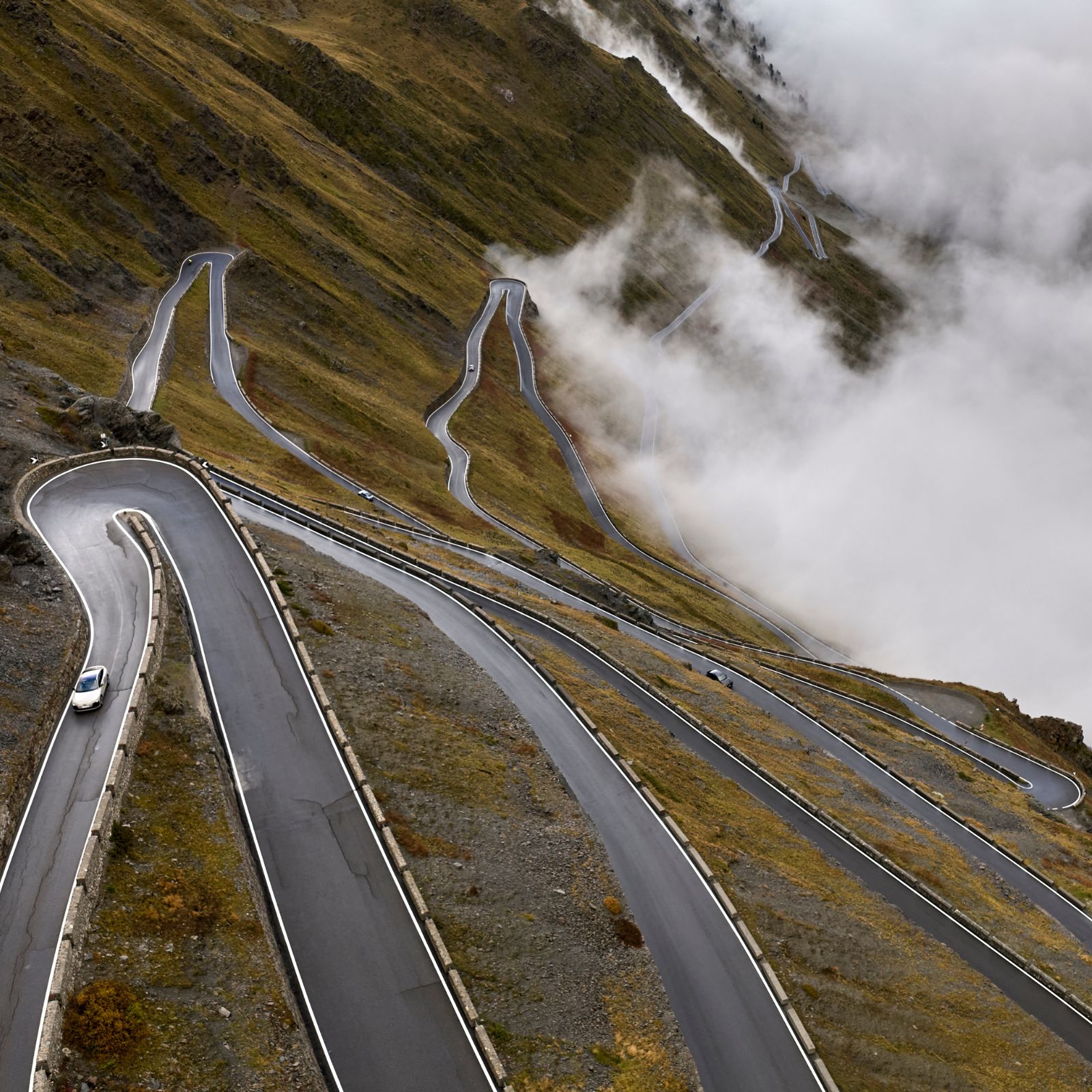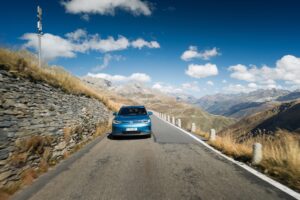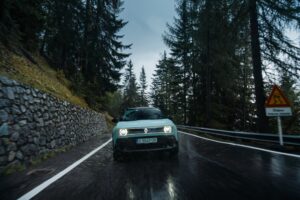Our third day in Switzerland saw us circumventing the initial weather forecasts with more skill than Diego Maradona used to lay on the turf in his Napoli glory years. It seemed like the sun liked the EUROCHARGE by Schaeffler idea too, and it appeared in a way I didn’t expect at a time when our staff members were juggling with the weather apps to optimize the schedule as efficiently as possible (somewhat dramatically though, on the morning of departure we caught a shower of mountain rain, but it seemed to make the scenery even more beautiful).
After three days of sucking in the strong Arosa air, it was time to leave the Swiss valleys full of splendor, logic and common sense.
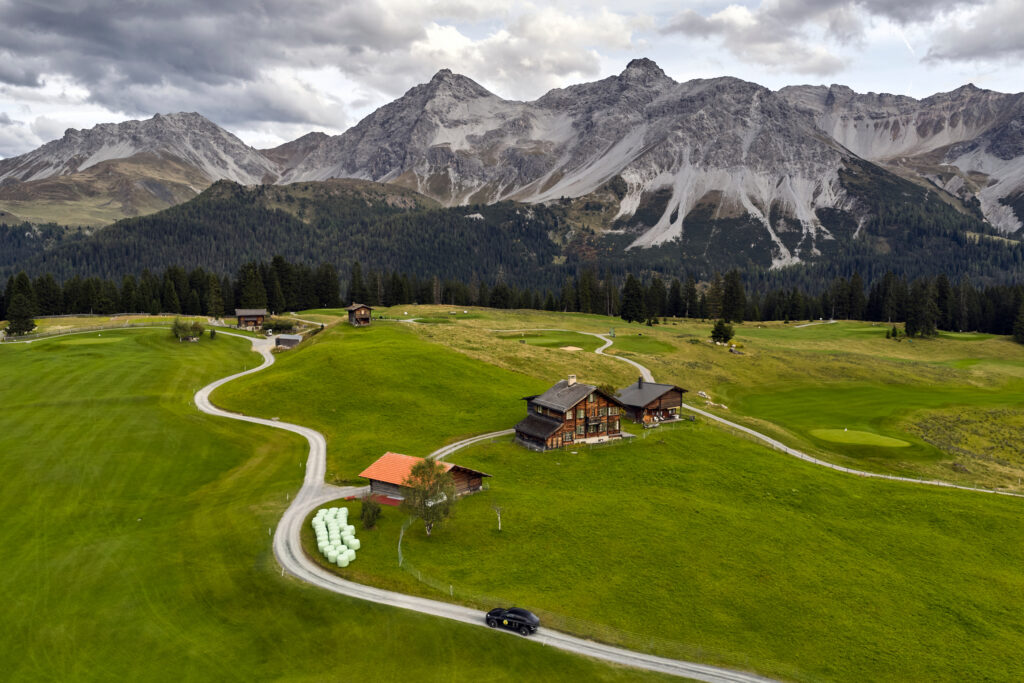
It’s generally a good idea to set off on a trip to Italy; excellent, I would even say. We were coming after three days of driving our cars for many kilometers, of loading and unloading our stuff, collecting data, compiling reports and the works.
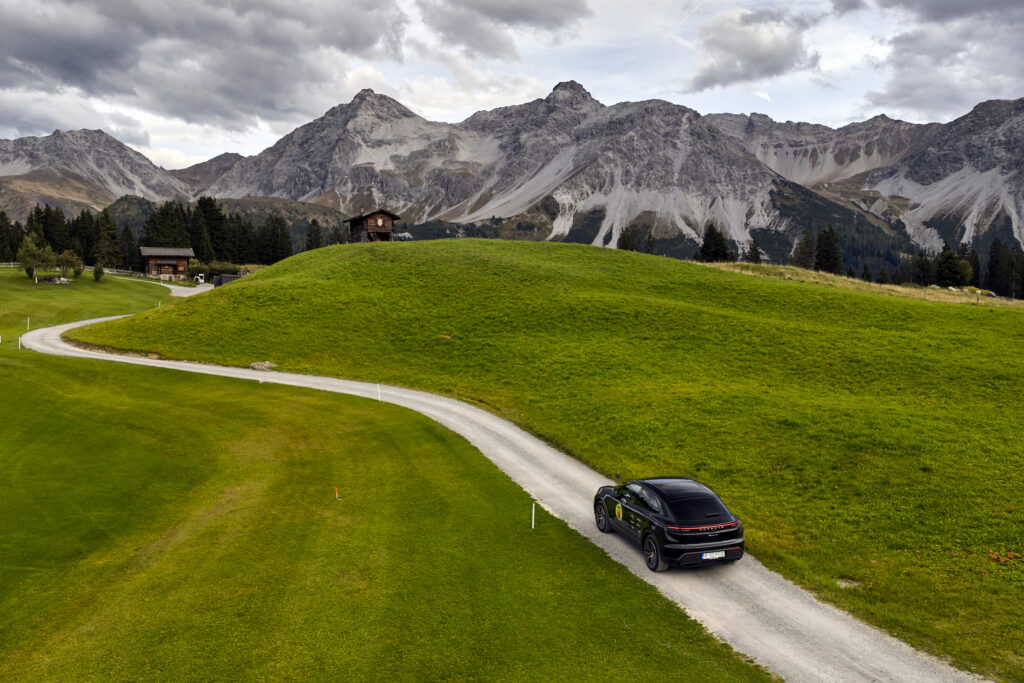
It was time to succumb to the pressure of keeping to the meticulous EUROCHARGE by Schaeffler agenda and descend from the clouds, even though some of us had already been looking up the terms and conditions needed for Swiss residency. And the steep slopes, laced with turns that make you instantly realize how important it is to be shod with top-quality tires, invigorated us more than the coffee craved by sleepy workaholics before the day’s activities began.
To the land of beauty
Italy is for many a country of beauty, a cultural heritage of humanity, a destination where the chances of failing, from whatever point of view you look at tourism, are quite small. I think you’ve already learned from previous articles that in our caravan there is no longer any stress about range or the novelty associated with EVs. We have overcome barriers of perception and we hope that our ideas, expressed here, on social media or with fellow group members, give you enough reasons to relax when it comes to driving, owning and buying an electric car.
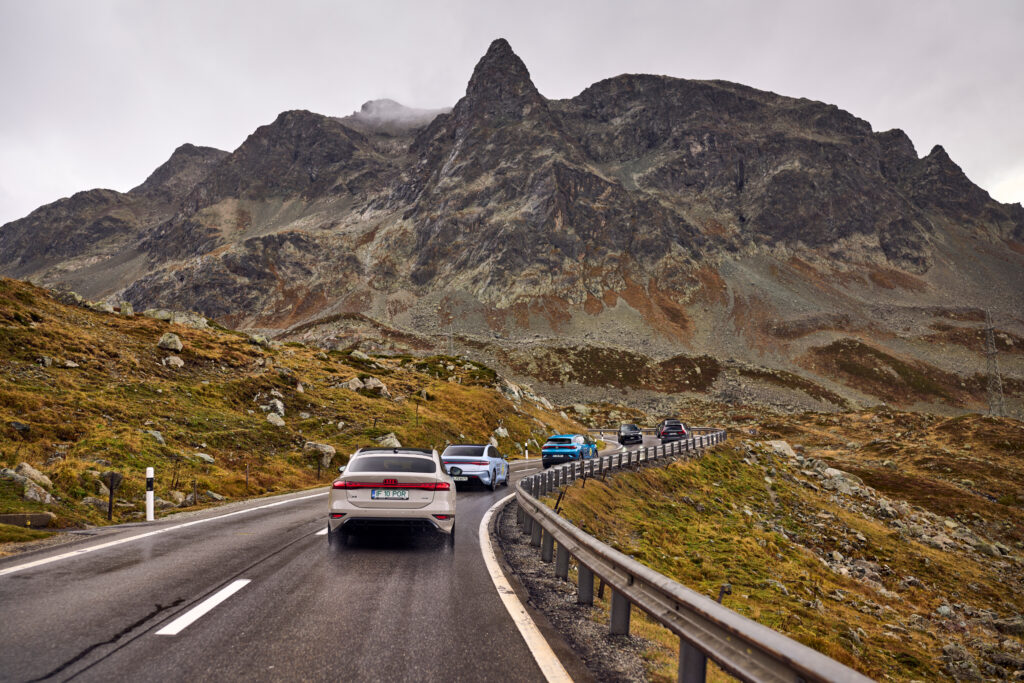
We set off for one of Europe’s driving icons free of any misconceptions some of our cars might have generated – yes, I’m looking at the Renault 4, Hyundai Inster and even Volvo’s EX90. What would have been the leitmotif behind any motorized pleasure trip, the Stelvio Pass, was included in the EUROCHARGE agenda, waiting for its time to come after the Transfăgărășan, Großglockner Hochalpenstraße, Furka, Grimsel and Susten. And maybe it didn’t enjoy being saved for last and as a reward, we were greeted with rough weather.
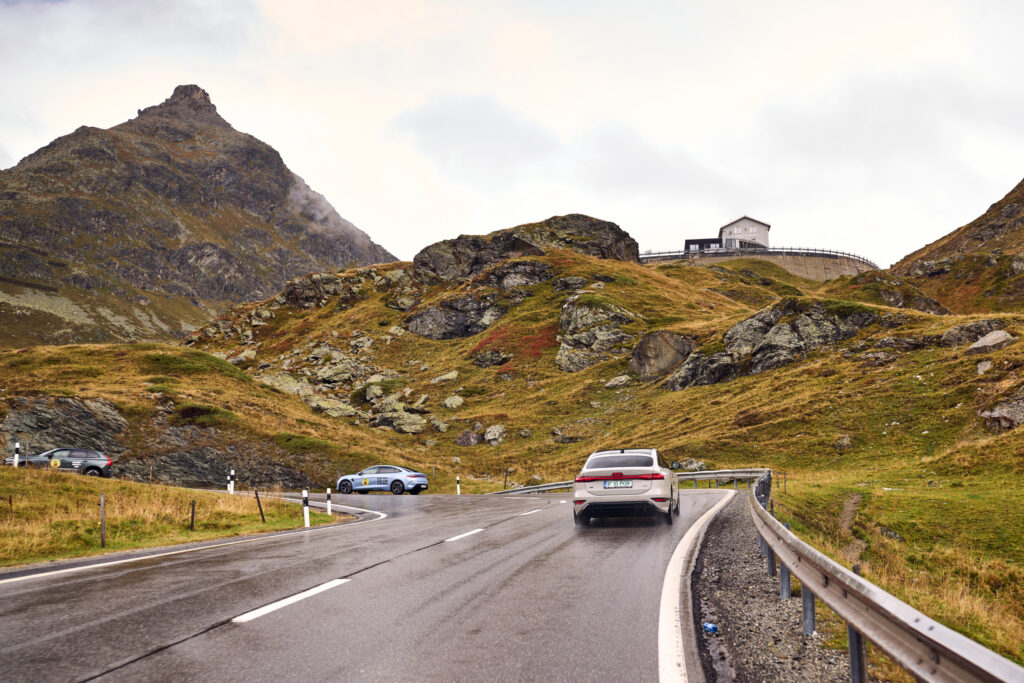
But until the Stelvio we still had to dribble a few good kilometers through Switzerland, a country that educates you on the road efficiently and quickly – through its huge fines. And then, to make your journeys even more difficult, many segments are cluttered with road works, some of them quite ample. There’s good news, too: the systems that signal these said road works are nothing short of excellent. Even narrower roads are often equipped with intelligent traffic lights that help traffic pass by.
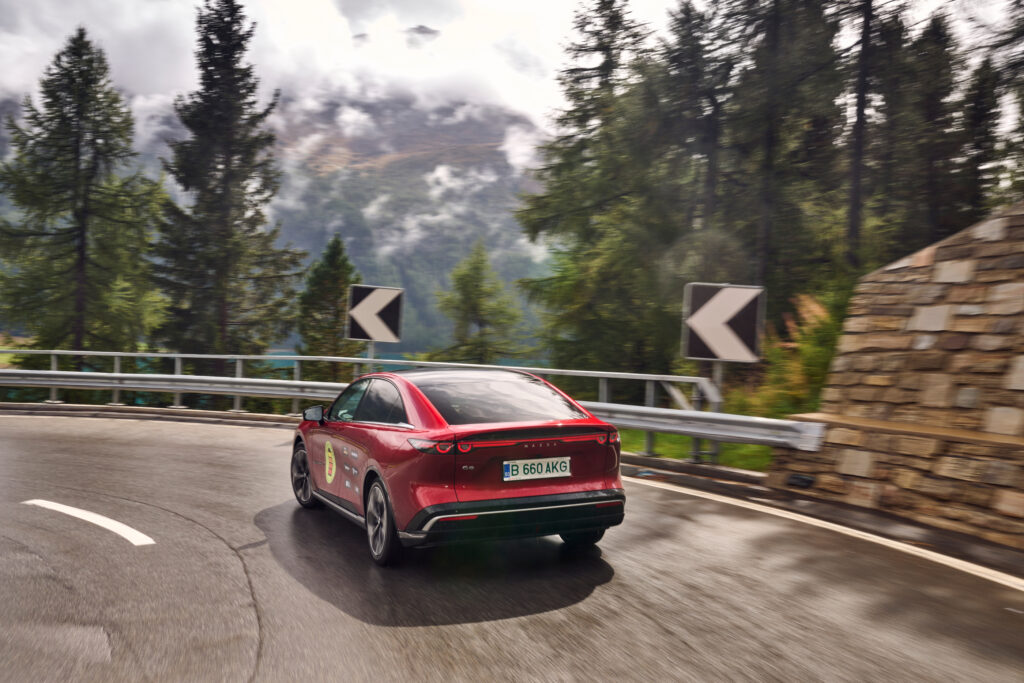
As for an emotional farewell, at the end of both our Swiss stay and virtual eSims for our phones, if we’re being honest, we came across another beautiful road: the Julier Pass. Not very long, not at all touristy in the sense that you’d imagine, this pass seems to have a transit role or to facilitate daily life for the locals.
Let’s just say it’s beautiful, to be admired if you happen to come by these parts, but you’re not going to return home with a fridge magnet. That may be because it represents, at least on our chosen route, a warm-up for the Stelvio, at least on a mental level. From its base, if you stop for a coffee, you’ll notice one of the quirks of the place. From where you said goodbye to your hotel in German an hour or so ago, you’ll be greeted in Italian at the bar, and if you glance around the hostel restaurant at lunchtime you’ll notice that pasta rules that pable. It’s fascinating how four official languages coexist in Switzerland, with regions clearly separated by origin, culture and, above all, spoken language.
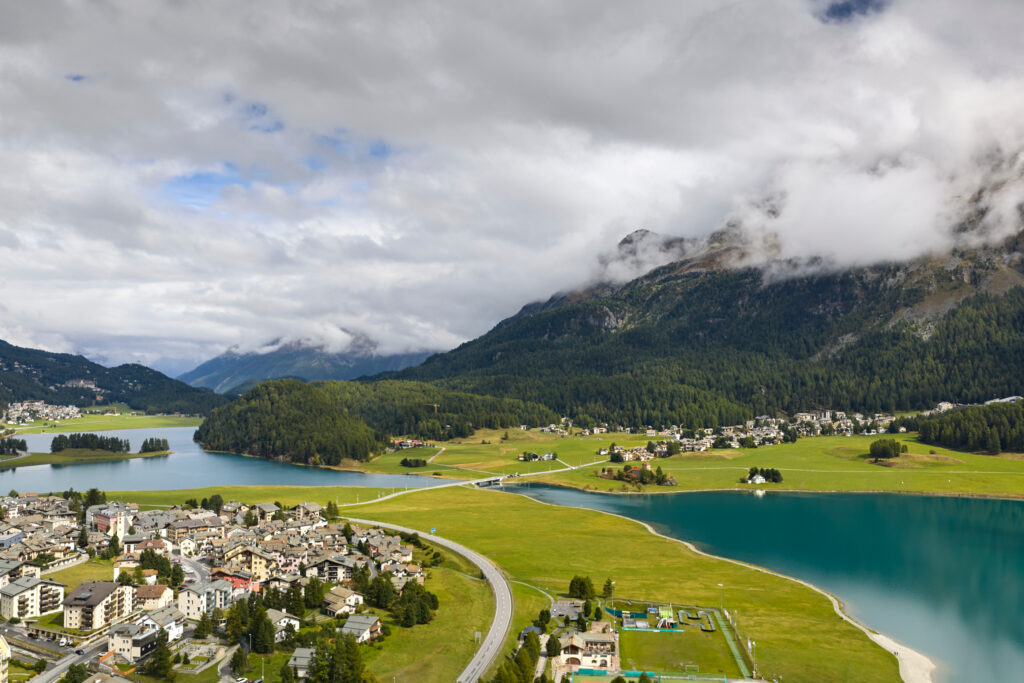
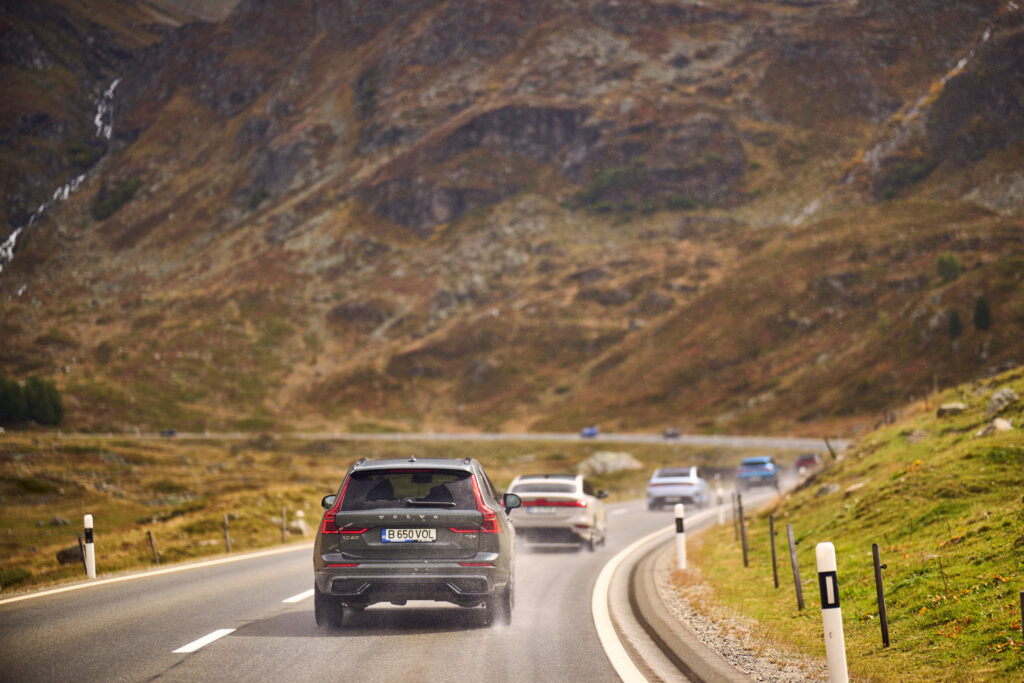
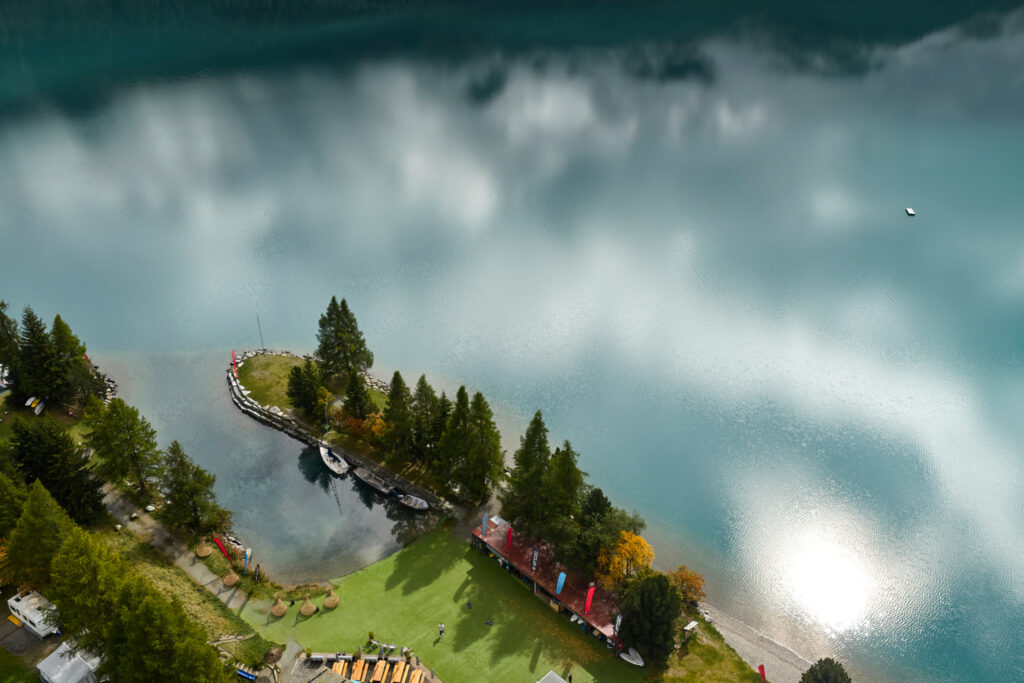
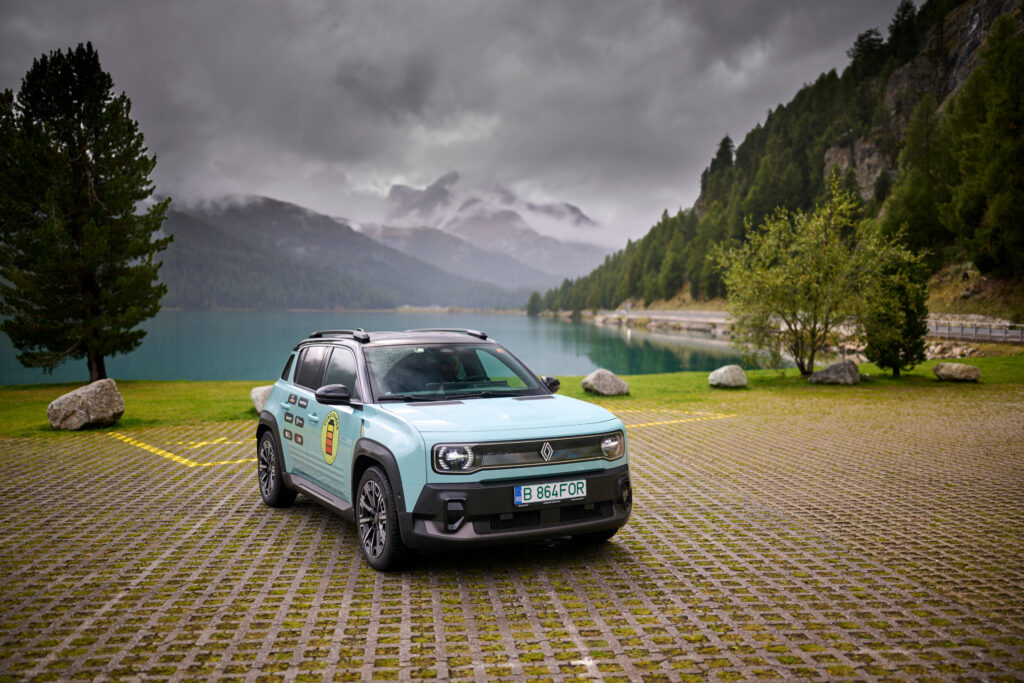
With some regret that we didn’t have a Rolls-Royce Spectre as part of the caravan, we passed through one of Switzerland’s most glamorous destinations, the resort of St. Moritz.
With every kilometer that took us closer to the border, it seemed as if it was more and more difficult to leave this huge nature reserve that seemed to have allowed mankind to build its cribs from place to place, but beautifully, tastefully, orderly. Crossing into Italy is done through a kiosk and only then you start to get impatient, because here it comes, here it comes…
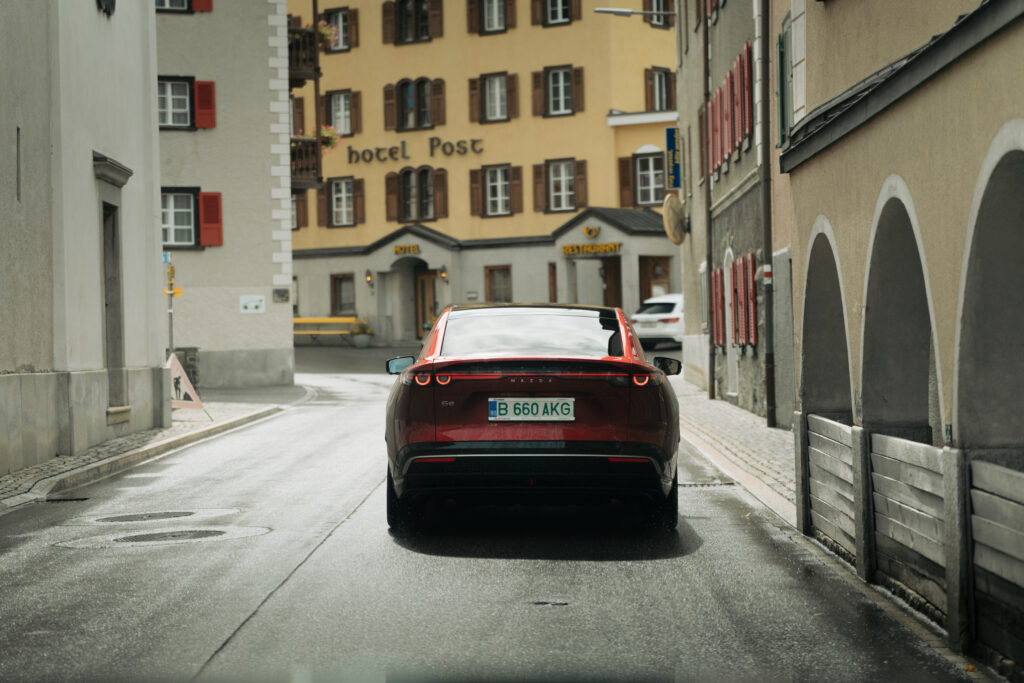
Name made famous
That Stelvio is loved by Italians is beyond doubt. It’s a source of pride, too. No car model has yet been shown bearing the Großglockner name (perhaps it’s easy to see why), but the Stelvio has already been ticked off in both the car and motorcycle worlds. Two true beauties proudly bear the name, the Alfa Romeo Stelvio and the Moto Guzzi Stelvio, and I dare to bet it was a fiercely hunted moniker.
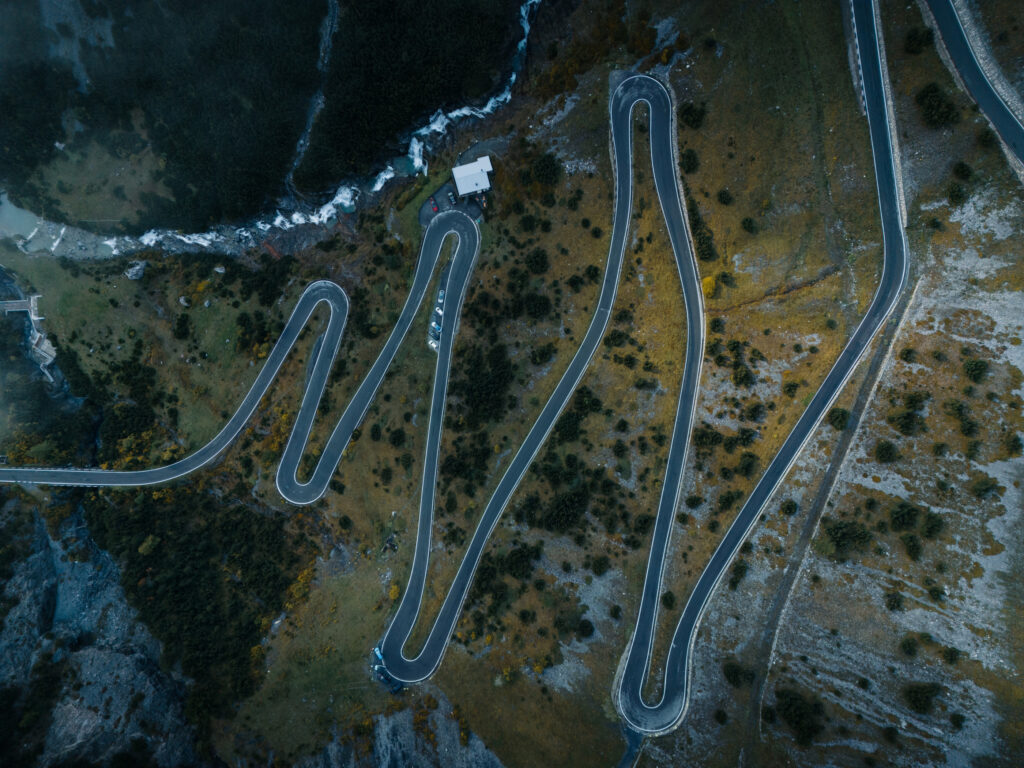
The Stelvio drawing starts gently, putting you on your toes, as does the first narrowing of the road, like when you stubbornly pull on a pair of pants that were a good fit back when you used to eat fewer chocolate doughnuts.
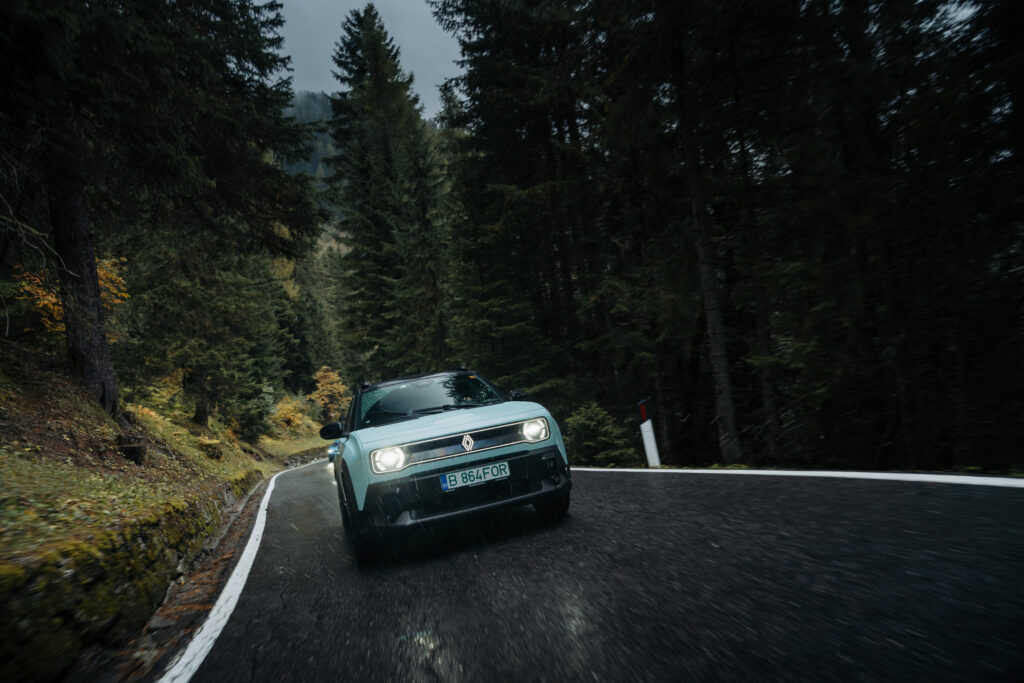
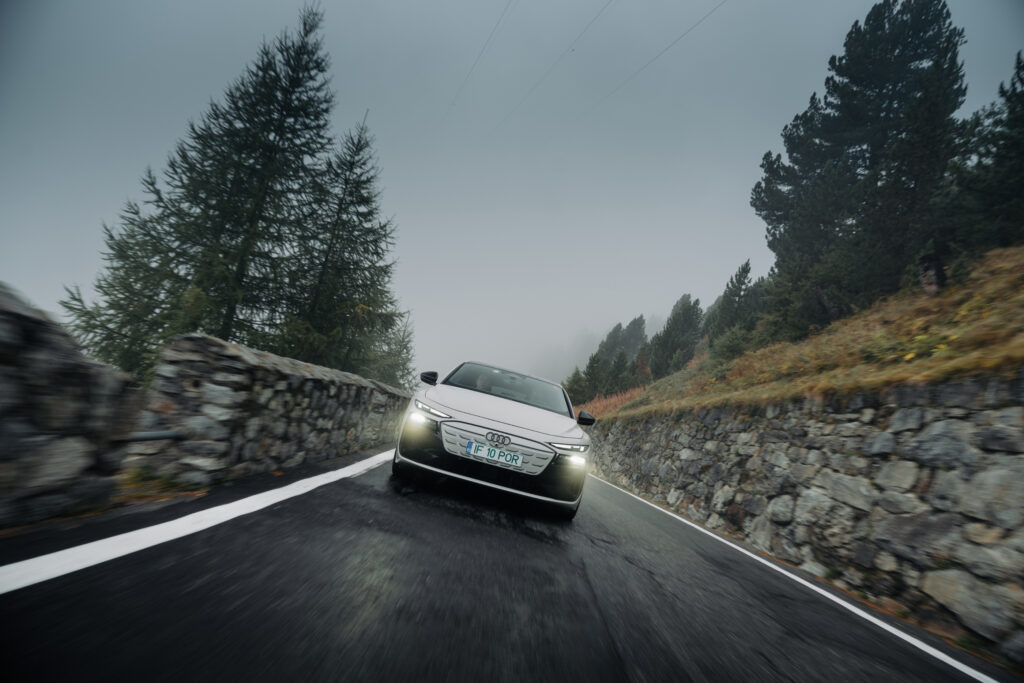
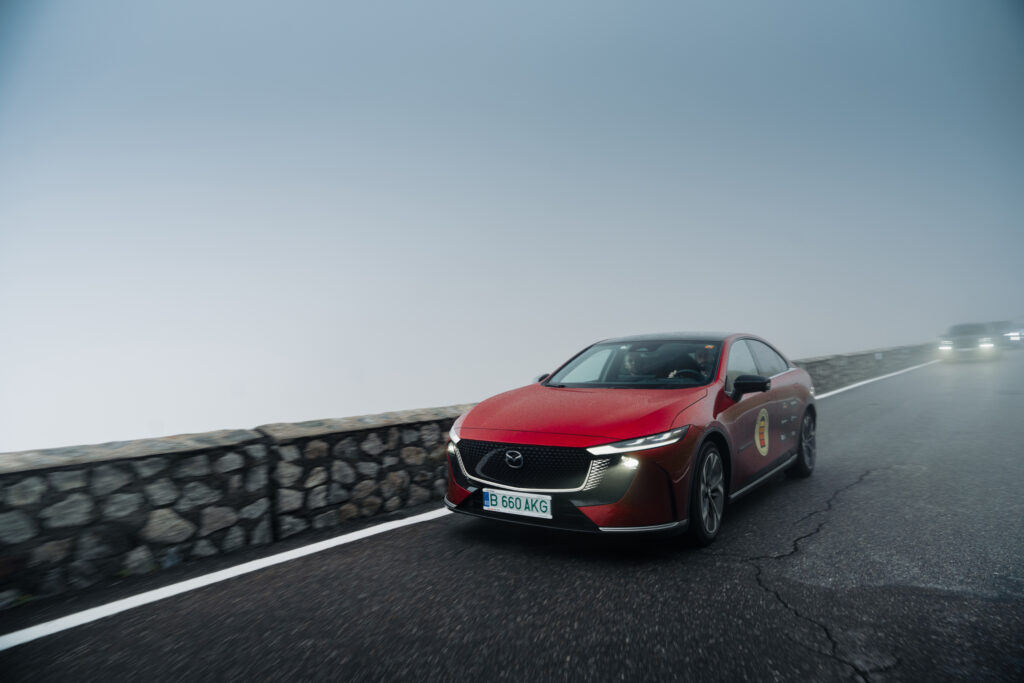
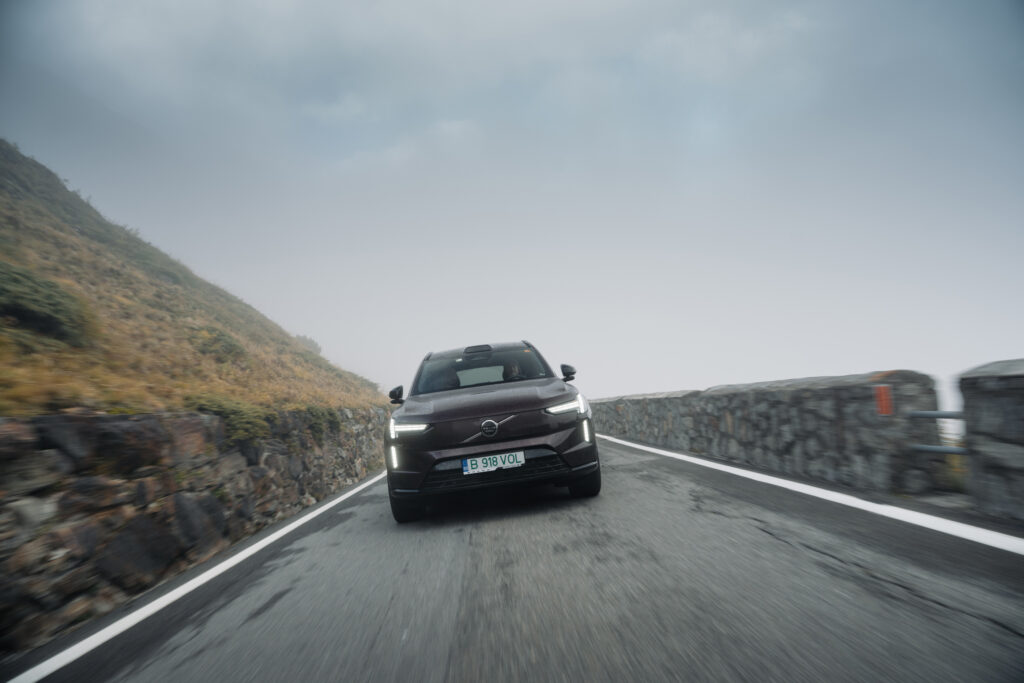
The road starts to climb quite steeply, and it’s fenced by quite a lot of railing, leaving space for only two vehicles side by side, just barely, sometimes not even that. On one of the first more serious turns you find an inscription beaten by time but visible as if for eternity: Nibali — Pantani — Aru. Cycling is adored in Italy, and on the Stelvio it’s grand tour-flavored religion. Speaking of which, the fact that the weather was almost cruel worked in the caravan’s favor, ironically, as cyclists were rare during our foray. Otherwise, in better weather, it would have complicated the journey a bit. And I don’t mean this in a malicious way, but I realized this everytime we met oncoming cars, when I clenched my jaws at the thought of the paint on the side of our cars.

As soon as you leave the trees behind, the corners start to tighten, so hard that in many of them it’s impossible to make it in one go, if you’re in a car the size of a Volvo EX90 or even a Mazda 6e or Audi A6.
Frankly, the famous hairpins on the Stelvio look absolutely fabulous, but as a driving experience it’s more thrilling than you’d think. But from the perspective of someone who’s been behind the wheel, I’d say it’s much more delightful for the passenger/passengers.
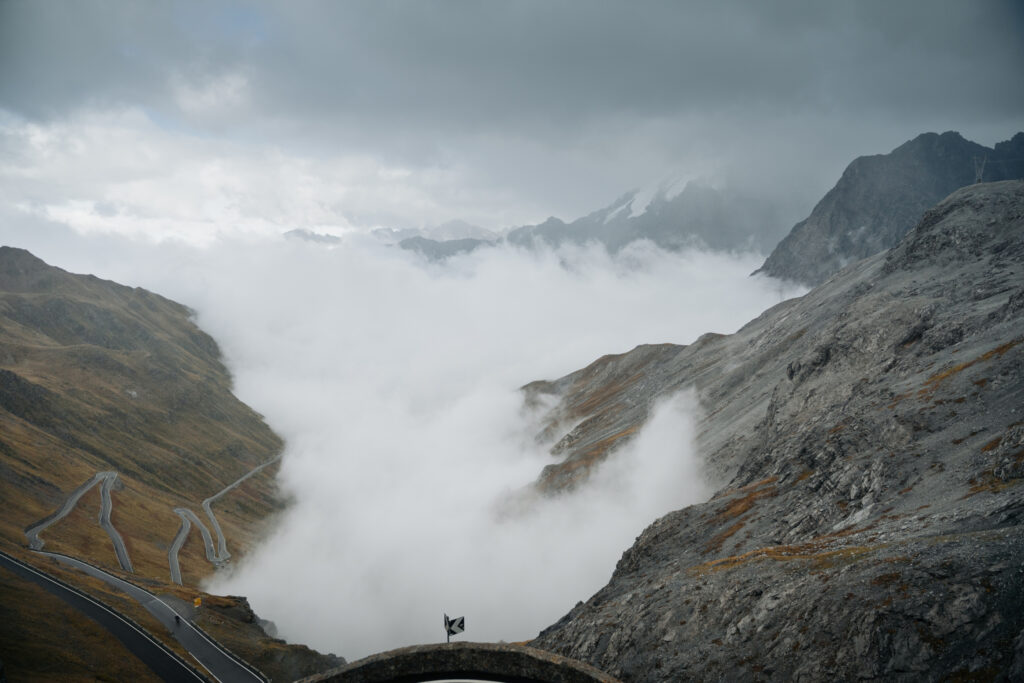
We were in an absolutely beautiful place, which greeted us with a curtain of mist that accompanied us as we climbed. It wasn’t the sunshine I had dreamed of, but it was a marvelous ballet of white clouds, only occasionally revealing the majesty of the mountain. It’s hard to describe the experience in words, but I find these photos are really inspiring.
Stelvio’s ridge has a slightly confusing air, in the sense that in that current scenario, it was quite sparsely populated. Most of the buildings there are abandoned or very poorly maintained, a sign that time is not forgiving. I found it fascinating that it was in this very spot that we came across a rudimentarily laid out soccer field, yet more proof that in Italy calcio is a religion. Also, perhaps too easily overlooked, a plaque discreetly signposting the ‘Ferdinand Porsche Way’. What could be nicer than that?
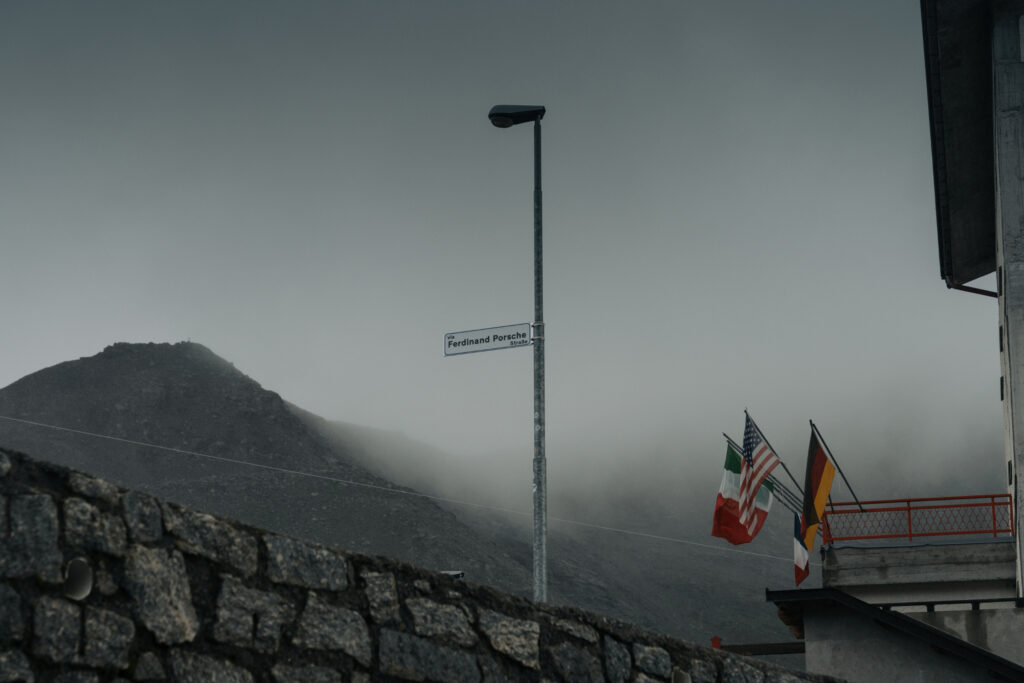
Well, the descent. Although you technically come out of what is called the Stelvio Pass, you continue on a road that was revealed to us in a moment of grace, with divine light and a new ballet of clouds, with the sun coming to greet us as a sign of appreciation. All you need is time and I say this from my own experience; we haven’t stopped long enough in that fairytale-like place, where all you should do is take a little break from everything and everything, and admire. That’s all. Really, have you noticed that we often forget to admire? If nothing else, it’s worth going that far, I say that with all my conviction.
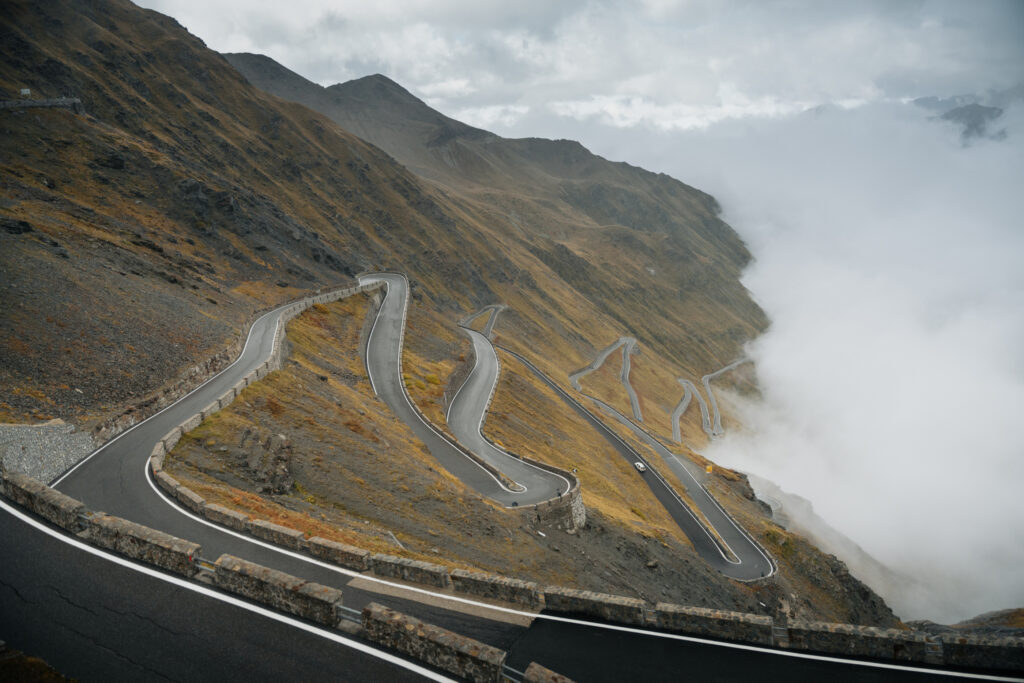
Otherwise, I could never say that the Stelvio was the most beautiful road I’ve ever driven on, but it was the place where I experienced some of the most beautiful sensations. It’s so much more than the experience behind the wheel, it’s the piece of history and car culture you breathe in. The Stelvio Pass is steeped in contrasts. And that’s a good thing.
2,758 meters
Stelvio acts as border between Italy and Switzerland, and before the First World War it separated the Austro-Hungarian Empire from what was then the Kingdom of Italy. At first glance, the Stelvio Pass dates back to the 1820s and was an Austrian project, the work of Carlo Donegani, who is credited as the road’s designer and engineer.
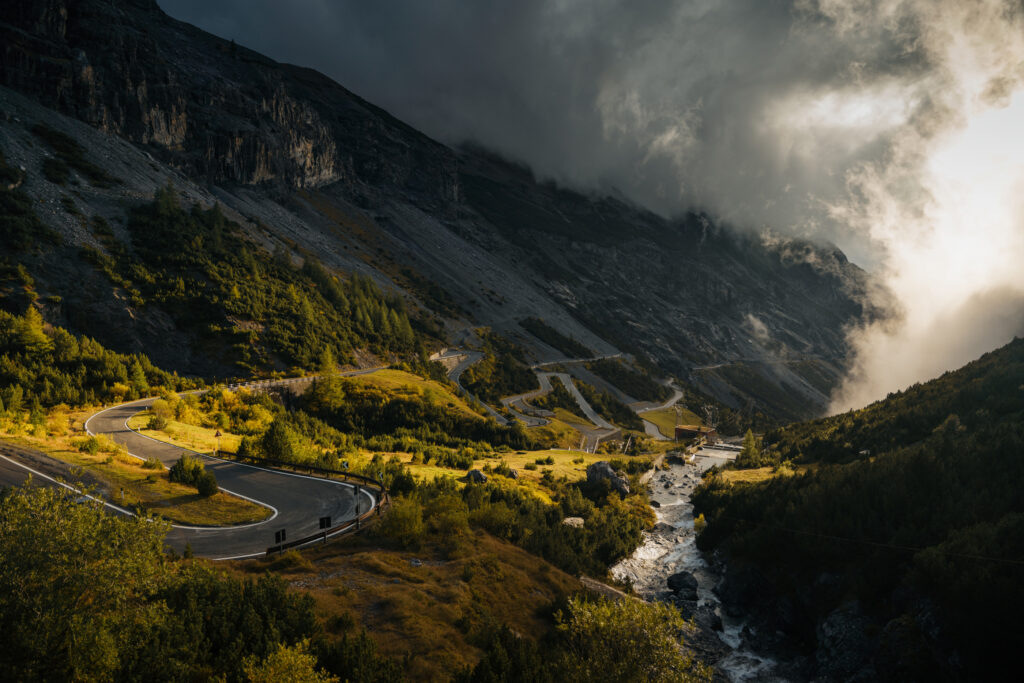
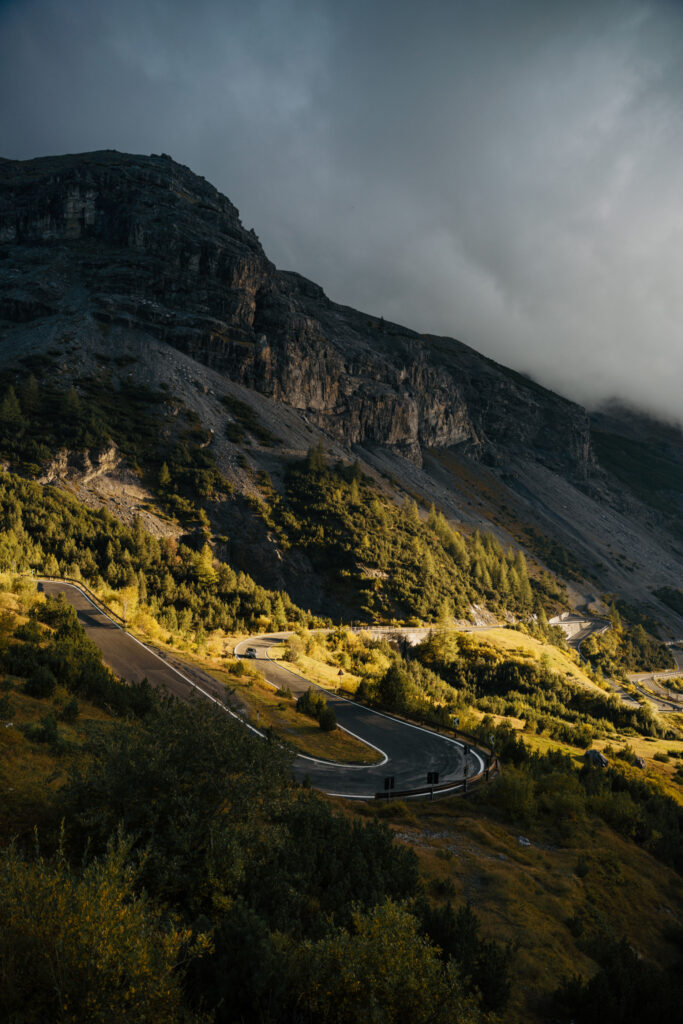
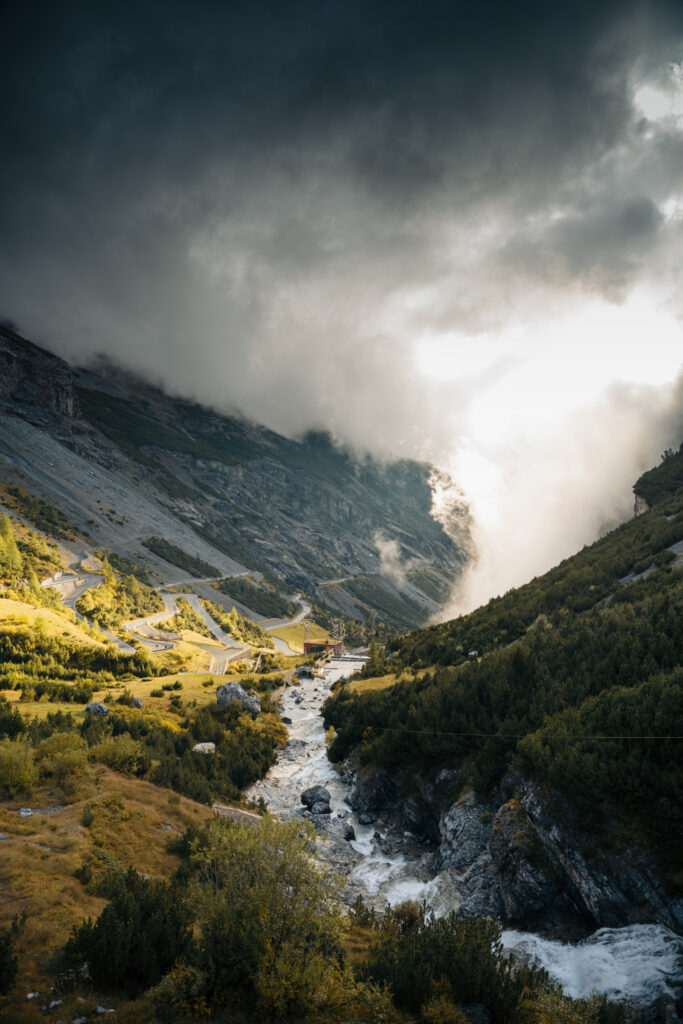
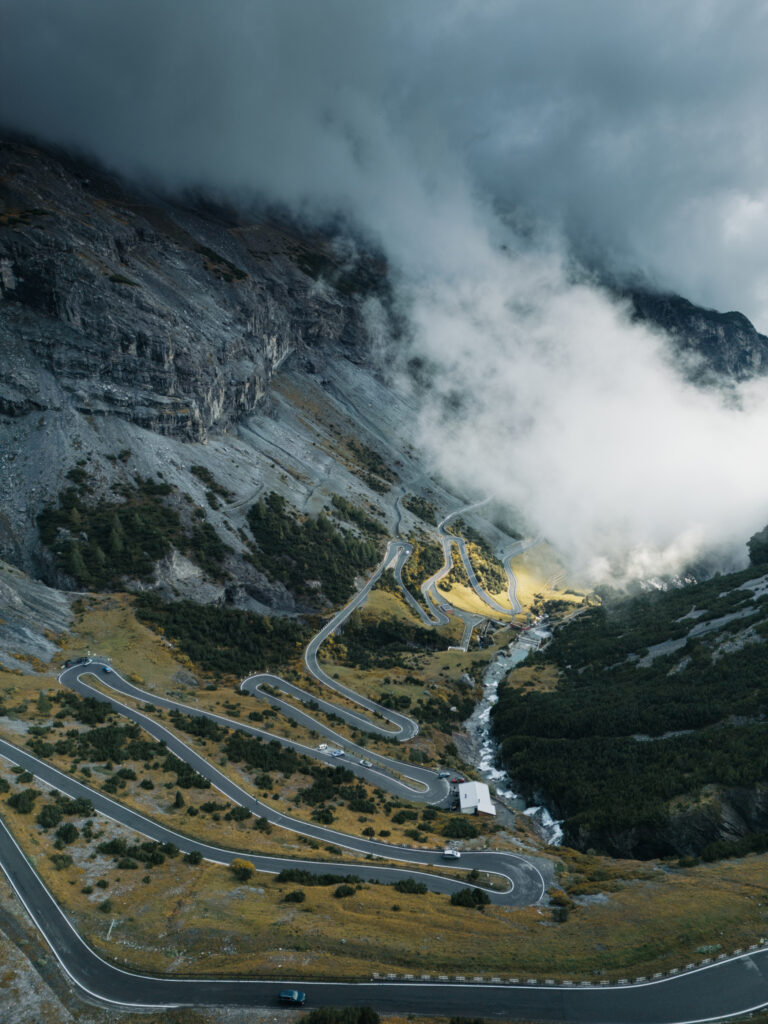
82 hairpins make up the Stelvio’s design: 34 are arranged along 22 kilometers on the south side of the pass and 48 make up the most famous Stelvio image, the 28-kilometer-long string of asphalt, on the north side.
We lingered for a while on the Stelvio, longer than we intended and much less than it deserved, except that Italy’s most famous mountain pass was starring in a movie with a larger cast of passes: Tonale and Gavia.
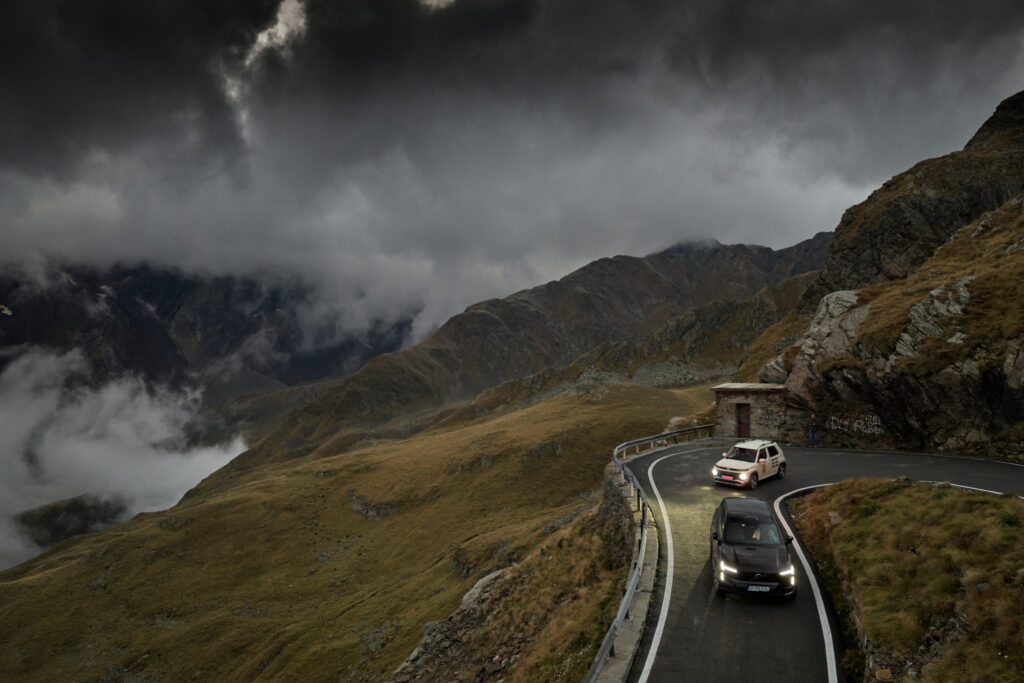
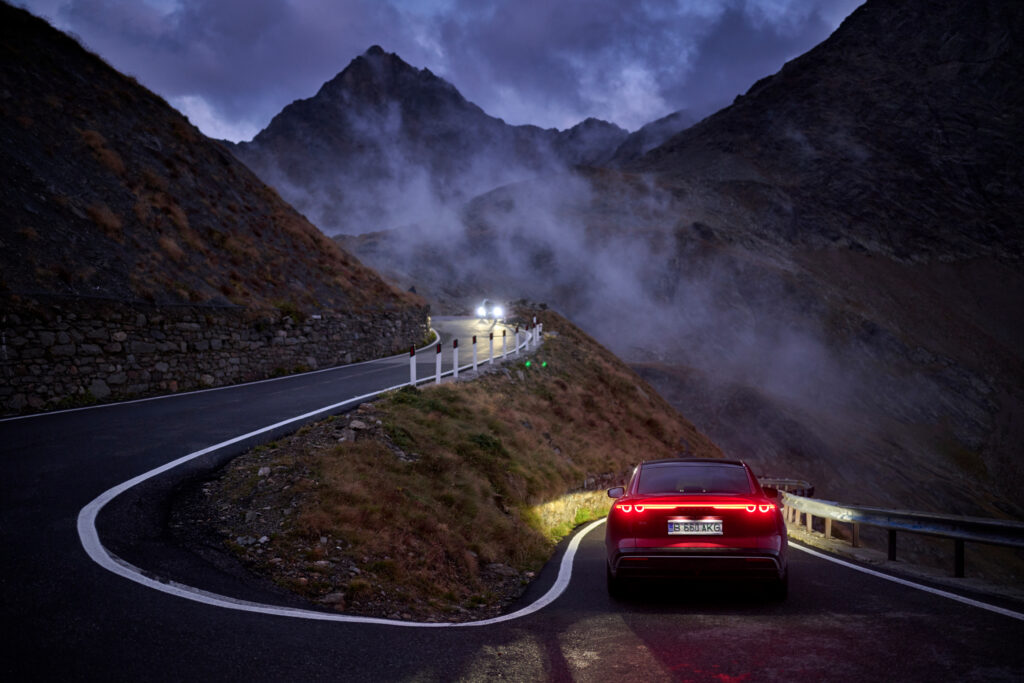
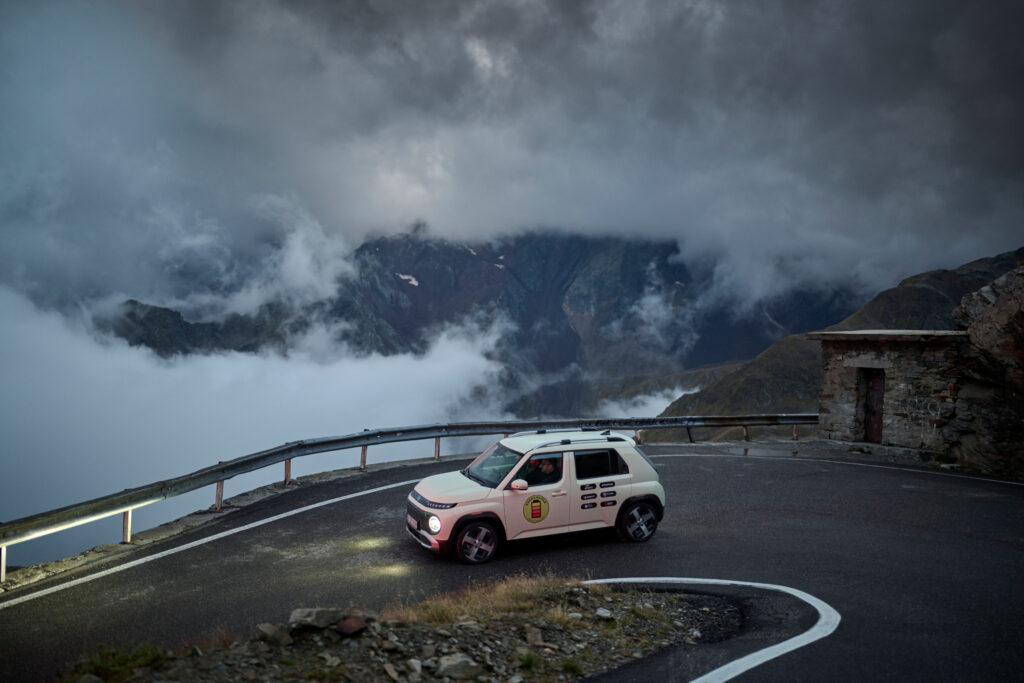
It was starting to get dark, our patience was being tested by fatigue. Maybe even the thin air from the top of the Stelvio’s mane. So much data, so many incredible images to be stored simultaneously on the hard disks of our minds.
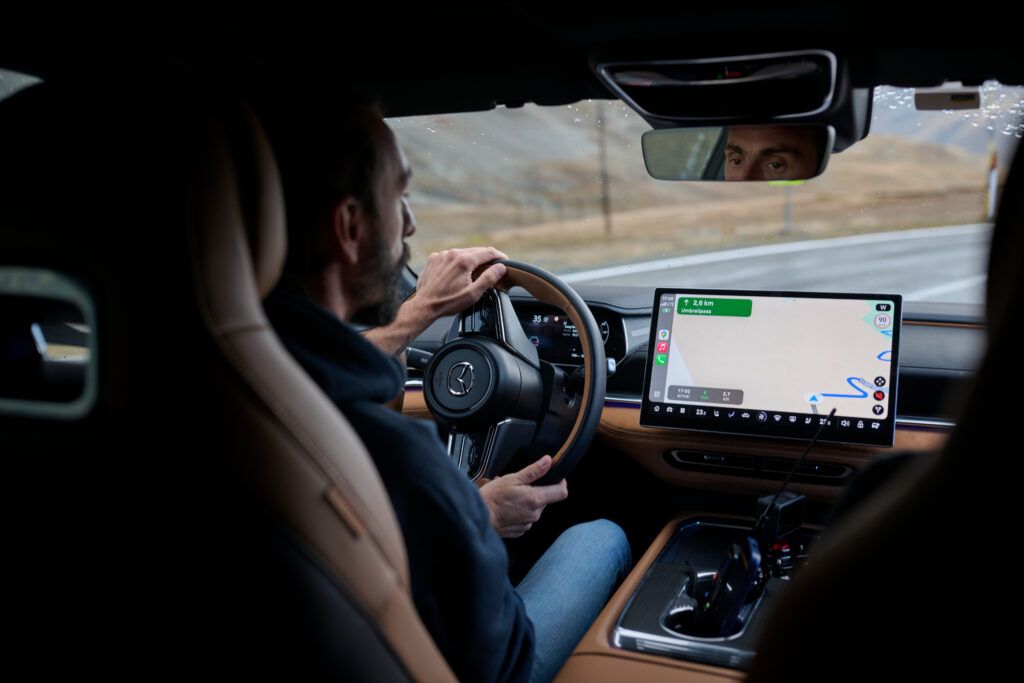
13.25 km long, 883 m from the highest to the lowest point, with a maximum altitude of 2,621 m: Passo Gavia. An impeccably asphalted, roughly paved, freshly marked, treacherous strip. Too late and too dark for more photos, unfortunately, but I guarantee it was downright mesmerizing, with landscapes that seemed teleported from the moon.
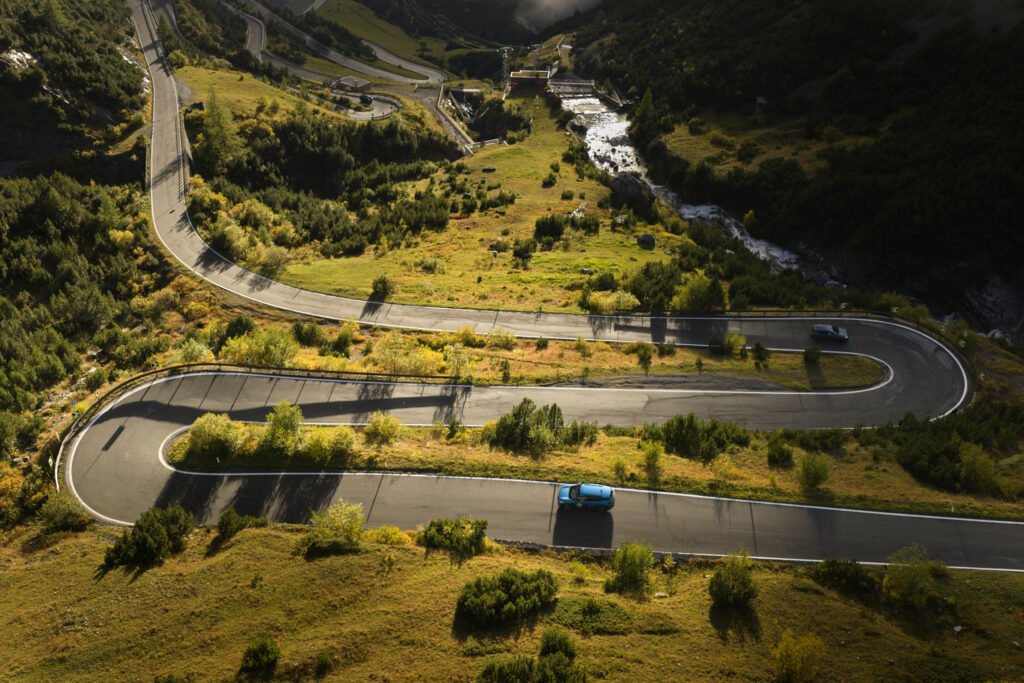
Tonale drew the curtain on a day which, although it seemed hard to believe, rose excellently to the standards set in Austria and Switzerland. As an aside, four of our cars (the Audi A6, BYD Seal, Porsche Macan and Volvo EX90) didn’t charge at all during the day, although I think you get the geography of the route by now. If we had really wanted to, we could have staked a day without any charging sessions, but for the sake of reporting we did make a quick stop at lunchtime, as already mentioned.
Mircea Mester (Autocritica) on the Audi A6 Sportback e-tron
Today, on the first rainy day of our electric tour of the Alps, we wanted to see if the Audi A6 Sportback e-tron is just an expensive suit or if it’s got some muscle underneath. We took it out for a 323-kilometer ride by putting it to a challenge of five Alpine passes in Switzerland and Italy: the Julier, the Ofenpass, the Tonale, the Gavia and, the centerpiece, the mighty Stelvio.
The plan was simple and a bit arrogant: to do this entire route without going near a charging outlet. Easy-peasy, even with those monstrous climbs at over 2500 meters altitude, in winter temperatures (2-4 degrees C) and a wind that tries to knock you down repeatedly. I relied on the efficiency of the 800V platform, developed with the cousins at Porsche, which I know extremely well from my Macan at home.
And I was right. I left Switzerland with 99% battery level and arrived in Italy, after ticking the Stelvio, Gavia and the rest of the alpine zigzag gang, with 44% energy left in the battery.
What does that mean in plain words? An exceptional 16.6 kWh/100 km consumption average. And a real range of 572 kilometers. And that’s without adapting our driving towards fuel efficiency and even adding in some bursts of enthusiastic driving.
But beyond the numbers, the A6 e-tron is a car that’s a bit of a heart tugger if you have the right money for it. It sits on the road with authority, is clean in its reactions and drives with an ease that makes you forget you’re driving a nearly five-meter saloon.
On the inside, it gives you perhaps the most premium feeling of our electric tour of the Alps. Materials, assembly, attention to detail – everything is superlative. The seats are fabulously comfortable, and the multimedia system, though it seems clunky at first, is actually ridiculously intuitive. The only conundrum remains the usefulness of the screen in front of the passenger. Vasilescu, the co-pilot on duty, switched it on, changed a song, grinned smugly, and then turned it off. About as useful as an umbrella in a submarine.
How the A6 e-tron looks is a matter of taste, but I love it. It’s a fully electric GT that knows how to be efficient, comfortable and agile. We didn’t get to test its ultra-fast 270 kW charging, because we simply didn’t need to. If I were to take it home, I’d like to see it in the Avant version, which probably carries your house and furniture on vacation, to make it easier to adapt to conditions.

Dan Scarlat (TopGear Romania) on the BYD Seal
Although we have a Porsche with us, the best performing car on the tour is the BYD Seal we drove today. What’s more, it’s a car with an excellent power-to-price ratio – virtually every available horsepower costs less than €100, when other models are generally double the price. Ok, it’s not a common feature that potential customers take into account, but it’s good to know from the outset where this model stands and what it’s aiming for.
The chassis manages to keep all that power in check quite well, as long as you remember that the Seal is a heavy car, especially because of the big battery. The suspension is stiff rather than comfortable, designed to safely handle its nearly 2.2 tons of mass, but the car is very well buttoned up and anti-fun. Personally, I would have liked better seats, with a longer recline, but especially more lateral support. The interior has good materials for its price segment and the “digitization” is not total, with Seal also providing the driver with a multi-control zone with traditional buttons at the base of the center console. The center screen can be rotated at the touch of a button, but in portrait mode it doesn’t allow Android Auto or Apple CarPlay, so it’s a feature designed to impress friends rather than help the driver.
The Seal is a pretty classic sedan, with a very attractive silhouette, bold details, a plunging rear window and a short rear. A bigger trunk with better access would have been preferable though, possibly via a tailgate instead of the classic sedan lid. The car attracts a lot of eyes and looks desirable, but you have to be prepared to explain to curious onlookers in parking lots and gas stations what this new brand is all about and convince them that no, it’s not “a Tesla from China”, but a brand that is starting to play very seriously in the European market.
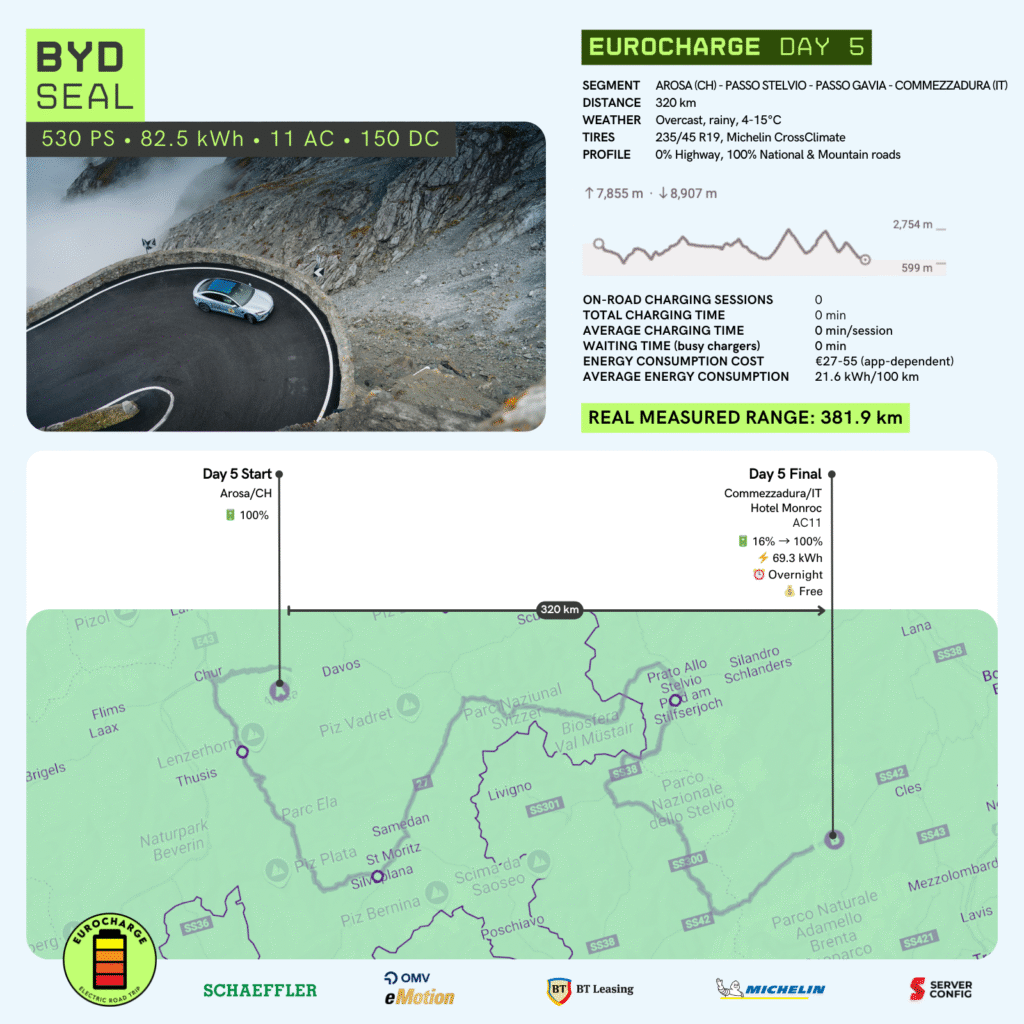
Marco Badea (Explicativ.com) on the Hyundai Inster
The Hyundai Inster is the little brother of the family. Although it’s the car with the smallest battery, today it did very well on Passo dello Stelvio and Passo Gavia. At the end of the day I got a fuel consumption of 12.2 kWh/100 km, after almost 323 kilometers from Switzerland to Italy.
At first glance it looks like a small car, but inside it’s very well designed. In addition to the bright, party-in-the-car colors and the “Sarà perché ti amo” and “Grande Amore”, the space is adjusted to suit different sizes, the dashboard is intuitive, although the infotainment system is slower than the rest of the cars on the tour, and the straighter windshield and large rear window make for a better ride quality. Plus, it’s also a sign that from the inside the car isn’t as small as it looks on the outside.
The Hyundai Inster is easy to drive because it stays on the road well, it’s not at all unstable in corners, climbs smoothly and feels powerful when you need it. It’s a car that’s built for the city, but it can pull with you on the long haul if you know how to time your loads.
I enjoyed driving the Inster. It suits the mood when you enter Italy, because it’s a car that makes you feel friendly. It doesn’t want to intimidate you, it doesn’t want to charm you or literally scare you. It’s a car that passes you or catches up with you at the traffic lights and just seems to want to greet you in a friendly, camaraderie on the road.
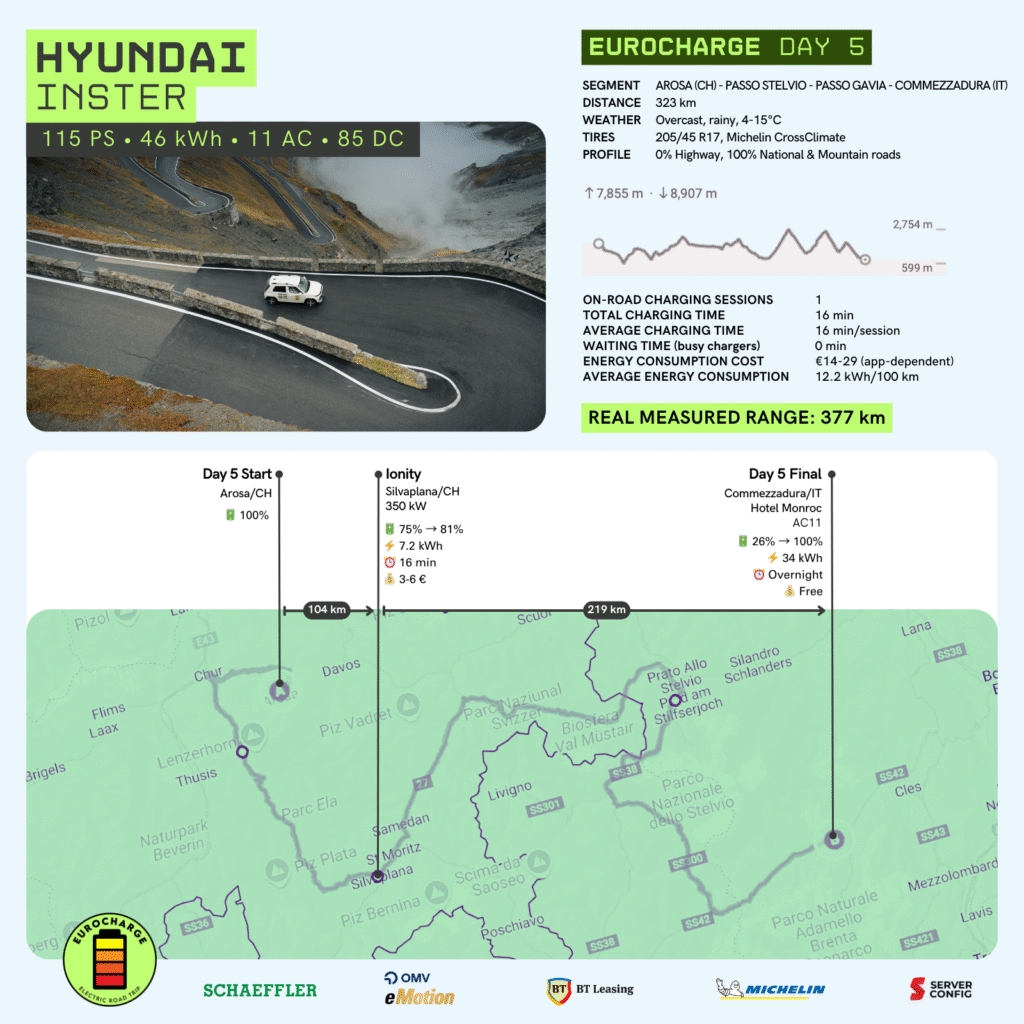
Cornel Șocariciu (Autocritica) on the Mazda 6e
For me, the Mazda 6e remains a paradox. And I’ll explain. In the few hundred kilometers where our lives have crossed (whether it was the Stelvio Pass or the Swiss roads), the Japanese model left me with the impression that it carries on the Mazda tradition: very good dynamic behavior. With all that that means: from the steering to the suspension, from how it responds under acceleration to the atmosphere inside. And yet, the modernity the Japanese have imprinted seems to have been taken to a new level for Mazda. And that’s where the little ‘games in the bearings’ come from. The Japanese ergonomic artists have brought many of the usual controls to a screen: from the mundane mirror controls to folding/unfolding the sunroof sunshade. And it’s not that I don’t like it or don’t like it, but the job might be penalized by a prospective European Mazda buyer. Also, I’m not saying others haven’t done it before, just that it doesn’t seem at all in the Mazda spirit to me.
Now that that’s out of the way, I’d like to talk a bit about the interior materials. In the configuration we’re driving in EUROCHARGE, the Mazda 6e could always show up in a premium car showroom. Not only would it not be sent home on foot, but I think it would get a place among the prize winners. That would be the parallel.
I’d like to come back a little bit to the driving dynamics. The horse and rider connection, the story that Mazda adds to every model in the range, felt strong. What’s more, the 6e managed to remind me that no matter how much energy it puts the wheels in motion, a car should bring a smile to your face at least once in a while. Whether it’s after you’ve taken a hairpin on the Stelvio, or you feel it as soon as you cut along St. Moritz, one of Europe’s most famous mountain resorts.
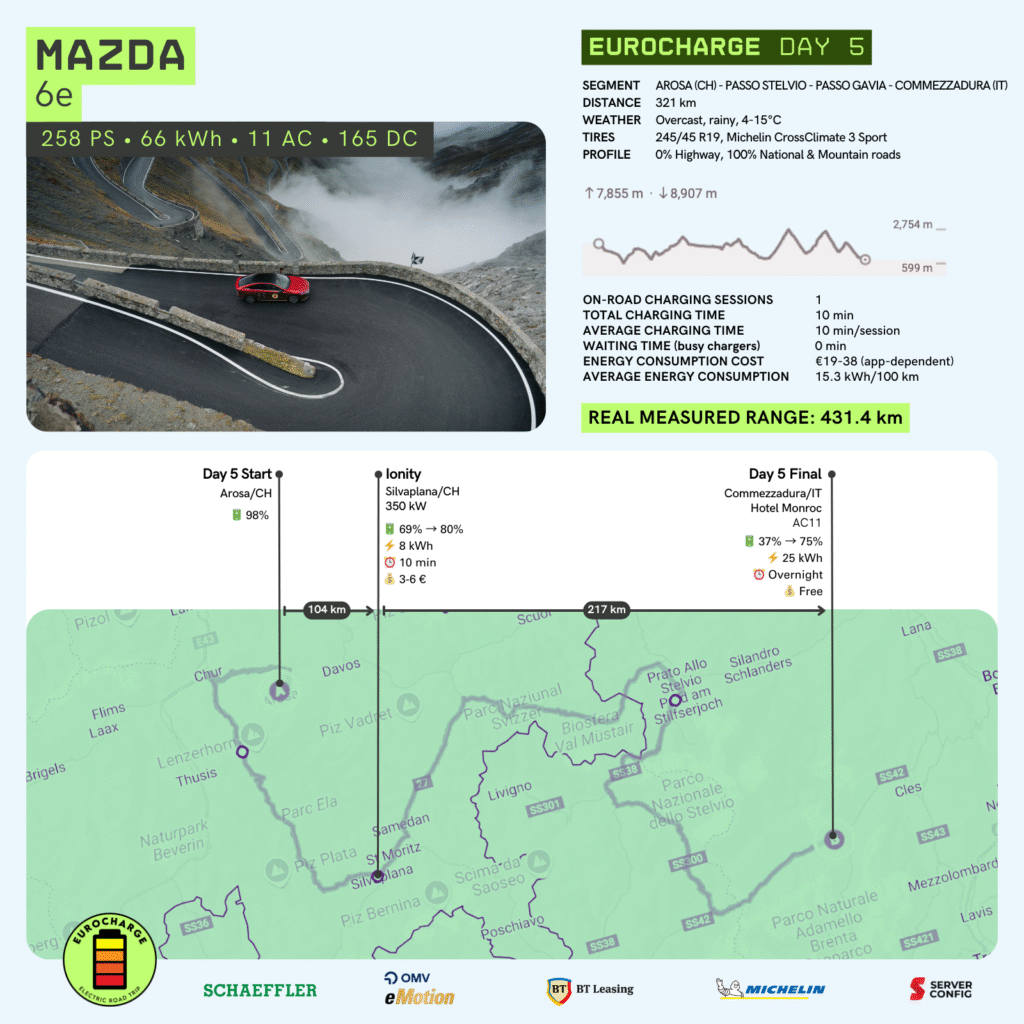
Andrei Nedelea (InsideEVs.com) on the Porsche Macan
Porsche puts top-notch dynamics first in all its models, including its smallest electric vehicle, the Macan. I’ve driven it on two of the most famous mountain passes in the Italian Alps, the Stelvio and Gavia, and I’m impressed. I didn’t think a crossover could stay on the road so well, or that an electric vehicle could be so much fun to drive on a twisty road.
But the Macan 4 felt much smaller and lighter, eager to corner and very much in control. In no way does it feel like a vehicle with a mass of 2,330 kg. Even though the test example was configured without a rear steer axle, the car seemed to shrink around you and didn’t feel like a vehicle with a wheelbase of nearly 2.9 meters. But there’s much more to the electric Mac than an excellent dynamic package. The adaptive air suspension helps the Macan change character depending on how you drive. At its most comfortable it remains firm, but it floats the car admirably over most bumps. In Sport Plus, the suspension drops down two notches and the car feels like a stiff hot hatch, with almost non-existent roll on corners that entice you to explore the limits of its grip.
I didn’t do that today in the Stelvio or Gavia, but I’d like to drive an electric Macan around the track and push it to the limit safely. I never thought I’d say this about an electric SUV or crossover, but it really is that good. And although today we drove on two passes that took us to over 2,500 meters in altitude and didn’t go at all fuel-efficient, we still averaged just over 20 kWh/100 km for the day, which is perfectly reasonable considering the road and the heavy-soled hooligan that the electric Mac Electric took out of me. I hope I get the chance to drive it again.
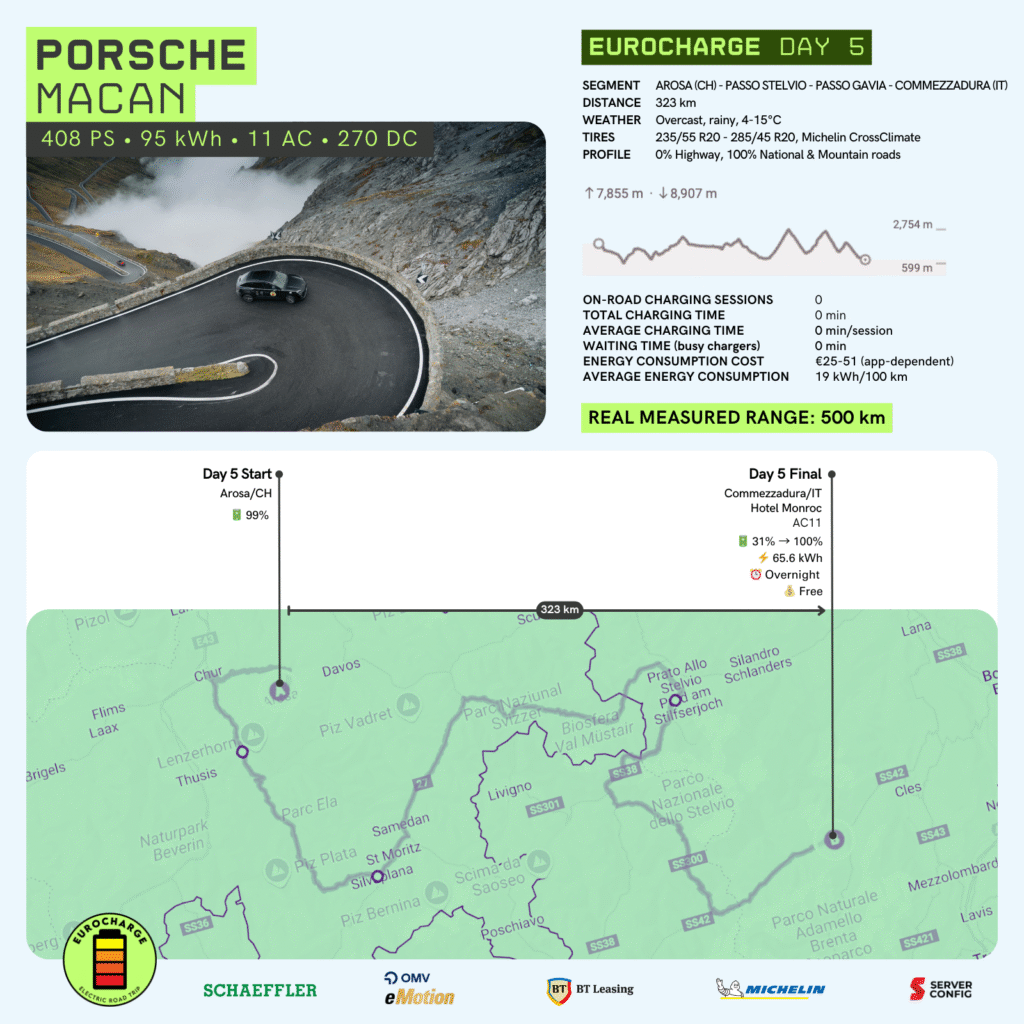
Laura Antonov (LaChicBoutique) on the Renault 4 E-Tech Electric
I’m sure every man has noticed that his girlfriend/wife has a pair of jeans in her closet that goes with everything: she wears them to the office, to the movies, when out with girlfriends, and even takes them on a city break booked at the last minute. My favorite pair of jeans is my safety net for those times when I don’t want to agonize over what to wear, but at the same time need to feel comfortable. It saves my day, goes anytime and is super chic.
This is exactly the feeling I got from the Renault 4. It’s a chic, spacious and versatile car, perfect for days on the run in the city as well as weekend getaways. This car is pure bliss! Crossing the Stelvio Pass today, at an altitude of 2,758 meters (plus 2 other passes in the Italian Alps), without hassle and stress, confirmed that you can do whatever you want with this “little car”.
Thank you, Renault, for bringing retro chic back to the automotive world. My heart beats faster when I see a Renault 5, but for Fritz and Boris, my furry friends, with whom I dream of discovering Europe, I choose the Renault 4.
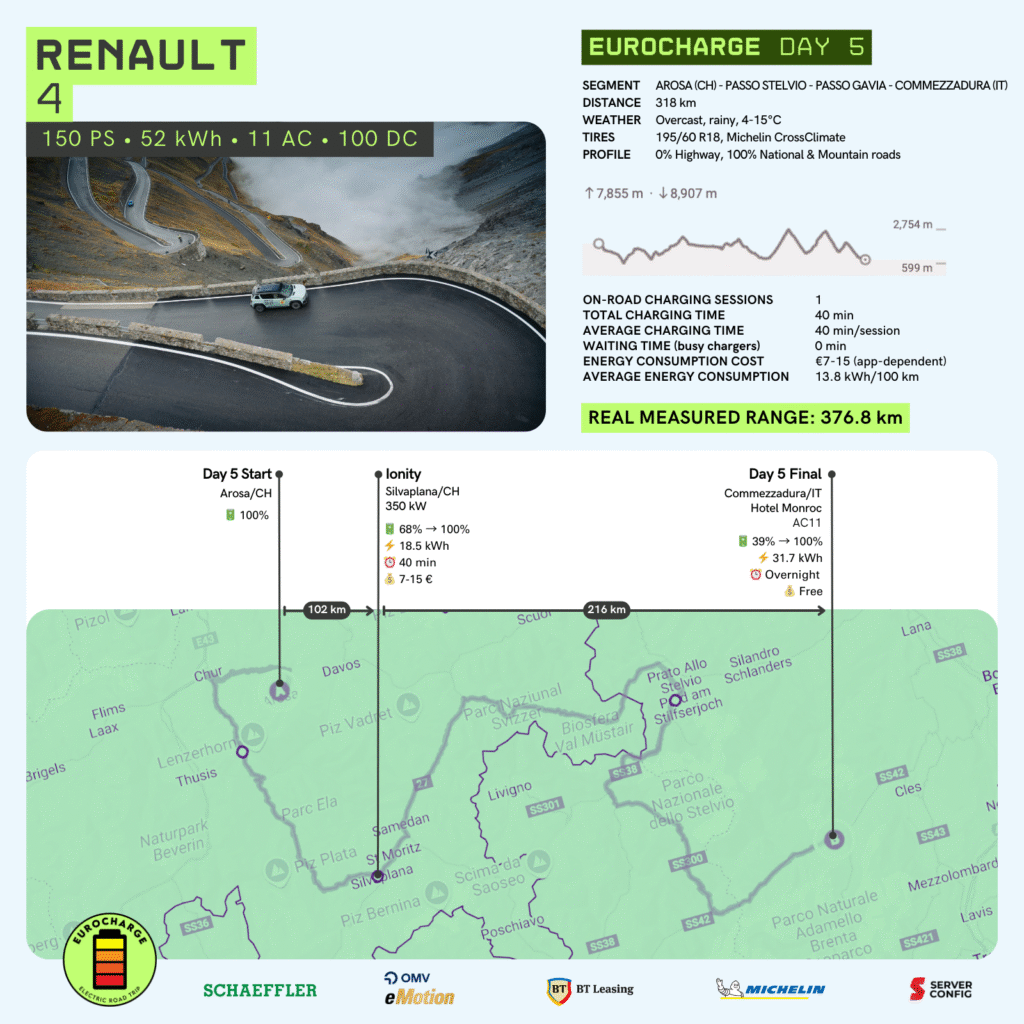
Dragoș Baltățeanu (Autocritica, AutoTest) on the Volkswagen ID.4
I have known the Volkswagen ID.4 well for some time. I knew it was a car that you could rely on at any time, very easy to drive and that gets under your skin slowly, mile after mile. To many, the ID.4 may seem a dull electric car, to me it’s one of the best.
And now, on the road from Switzerland to Italy via the Stelvio Pass, we’ve had a look at the technologically facelifted version of the German model. Visually, from the outside, it’s identical to what we knew from the standard model. Get behind the wheel and you find the same great driving position, the same spacious interior full of storage compartments, but also those few mistakes Volkswagen has made and is going to fix: the tactile “rear” button for operating the rear windows that you accidentally press all the time, the touch buttons on the steering wheel and the famous sliders for audio volume and temperature, but now easier to control.
The interface is just as friendly and easy to use. You get behind the wheel, put your foot on the brake pedal and you’re ready to go. You immediately notice the larger 12.9-inch center screen and a new, more intuitive and user-friendly infotainment system. Rear axle electric motor power has increased to 286 hp and torque is now 545 Nm. The battery is 77 kWh, and it charges quickly and is more efficient. Today we drove up and down the Julier, Stelvio and Gavia passes in rain and bad weather. Average consumption indicated by the on-board computer: 16.7 kWh/100 km.
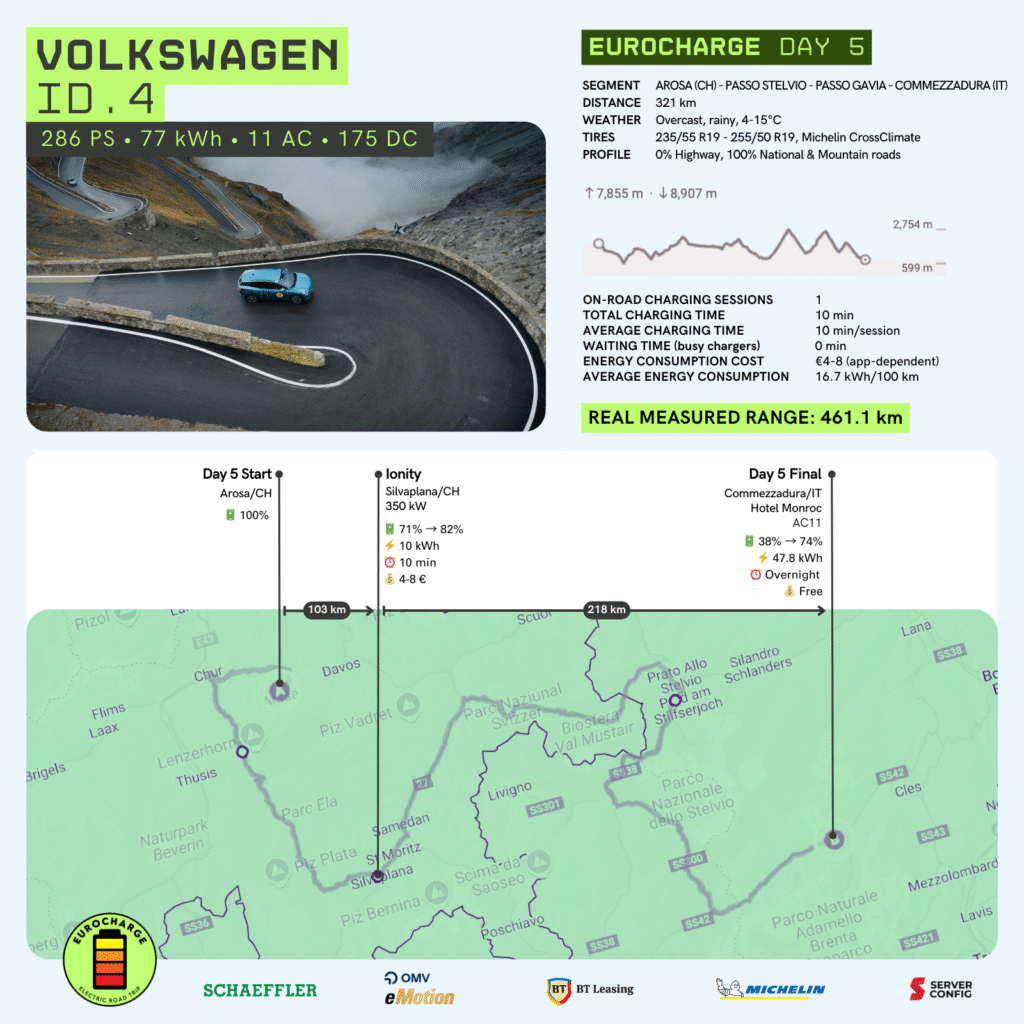
Constantin Ciobanu (Autocritica, Adevărul) on the Volvo EX90
Ten square meters is a kind of estate on the Stelvio Pass, and on the Gavia Pass this surface turns you into a landowner. That’s how rich I was driving my Volvo EX90 on these passes today.
Today’s 321 kilometers may not seem like much, but it amounted to almost 8 hours of driving. On the plus side, the EX90 didn’t need charging today despite a day ahead that involved crossing three passes. Switzerland also threw the Julier Pass in our way – a climb up to 2,284 meters. Descended a little to fill our lungs with oxygen for the imperial Stelvio and the 2,758 meters, and the end of the day caught us on the Gavia “path” which also climbs to 2,620 meters. Lots of climbing today, but the Volvo still had 33% battery charge. The car is extremely efficient at harvesting energy. Average consumption is 21 kWh/100 km.
Great on the outside and on the inside. Today I was spoiled behind the wheel with the massage provided by the seats and a few more degrees inside because it rained continuously outside, and at times I saw outside temperatures of 7-8 degrees Celsius. The suspension provides the comfort you’d expect from such a dreadnought, but the mass forces you to be restrained. You’ll feel the pounds under braking and the slight tendency to sit on a wider track than you’d like.
An impressive model, which loses a bit of the Swedish brand’s beautiful identity by adopting ergonomic solutions ‘invented’ by another manufacturer. Too much of socializing with this model is done via the central display.
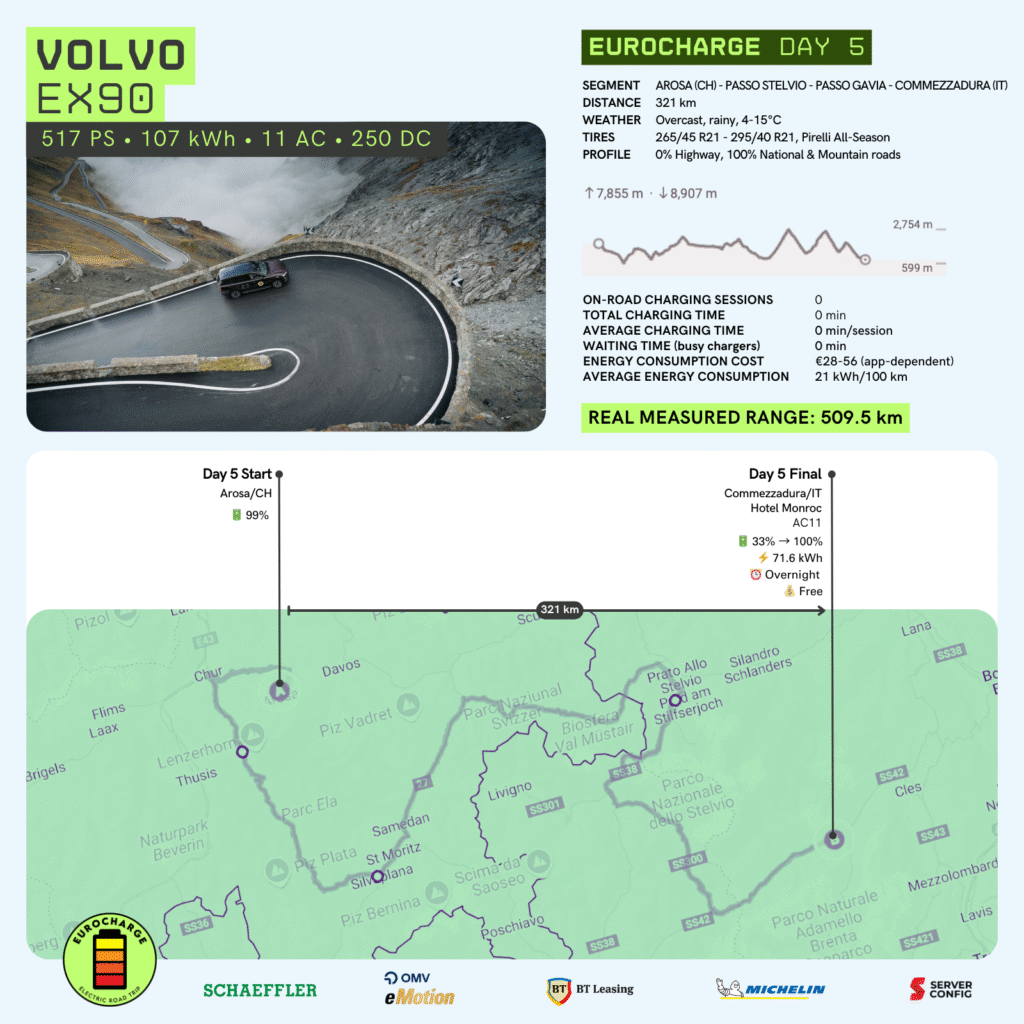
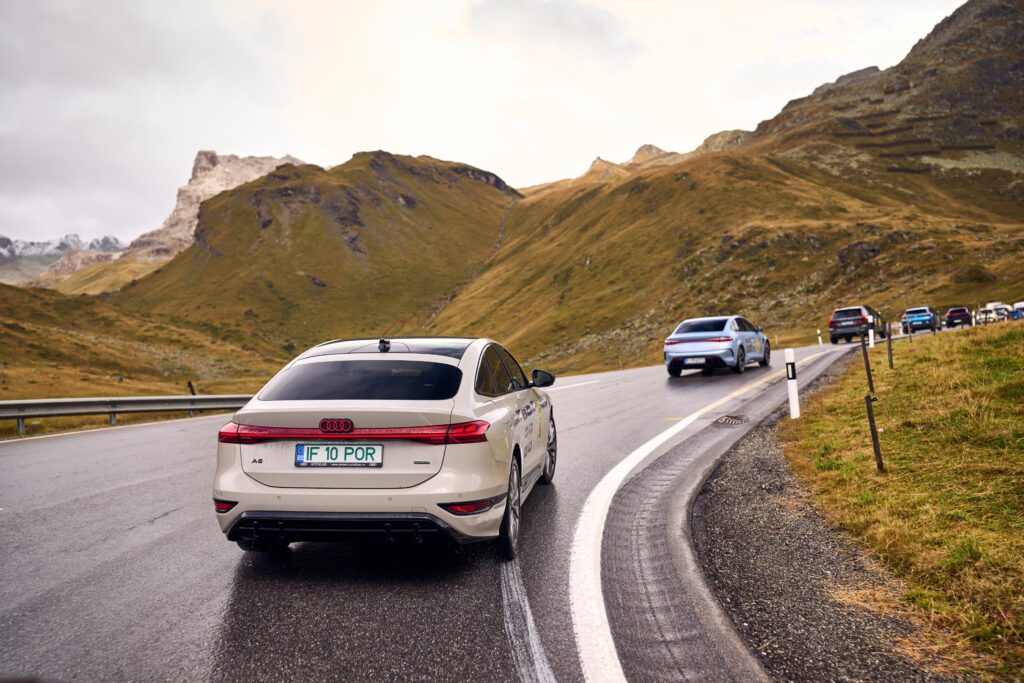
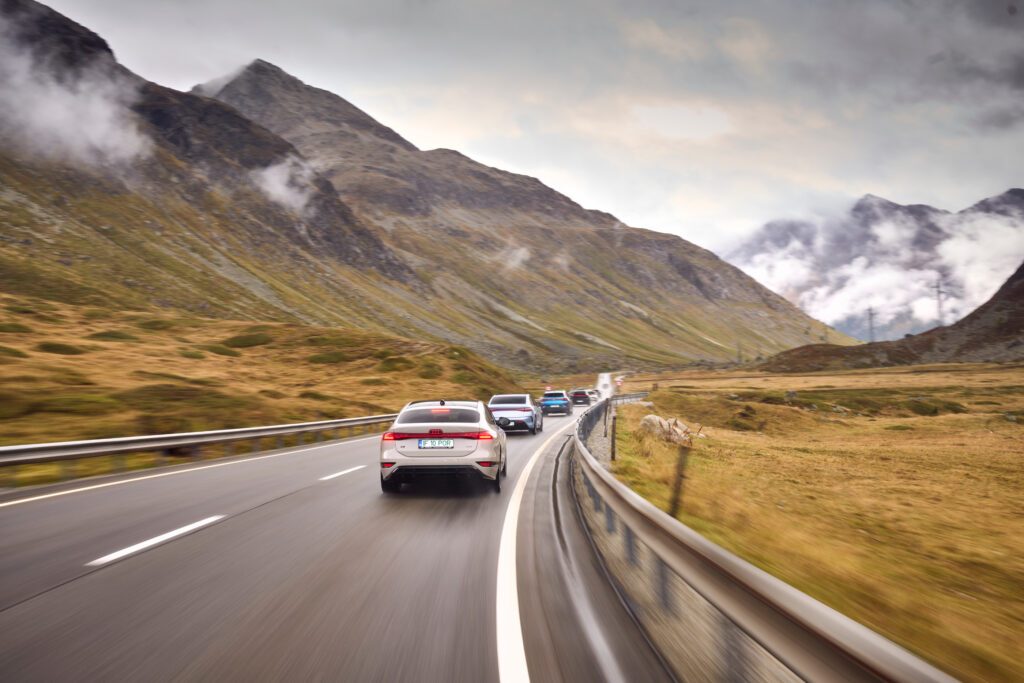
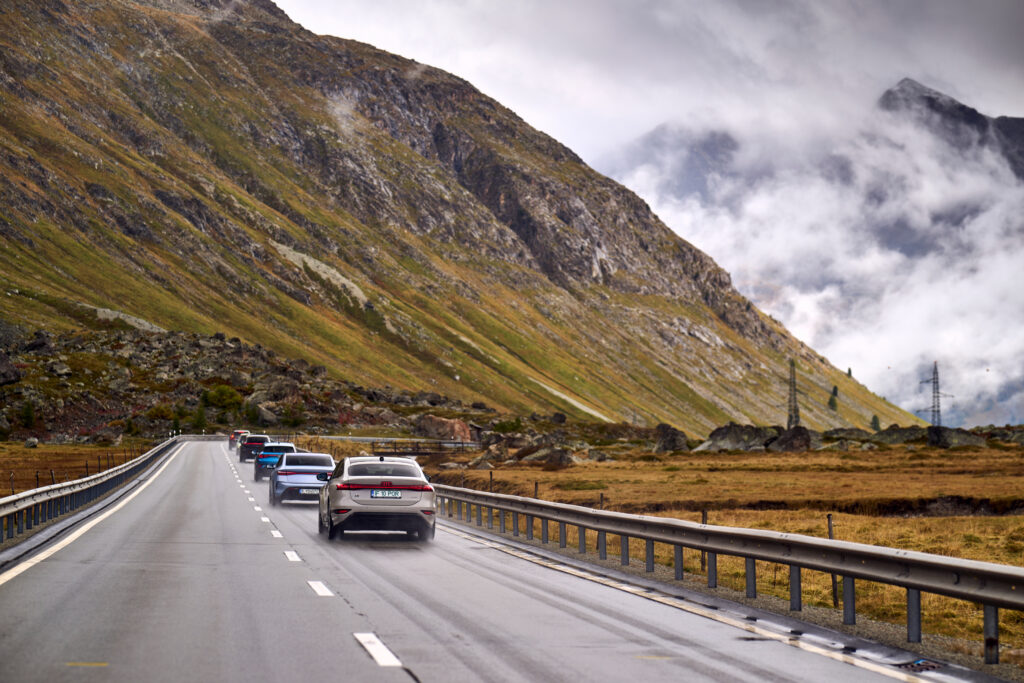


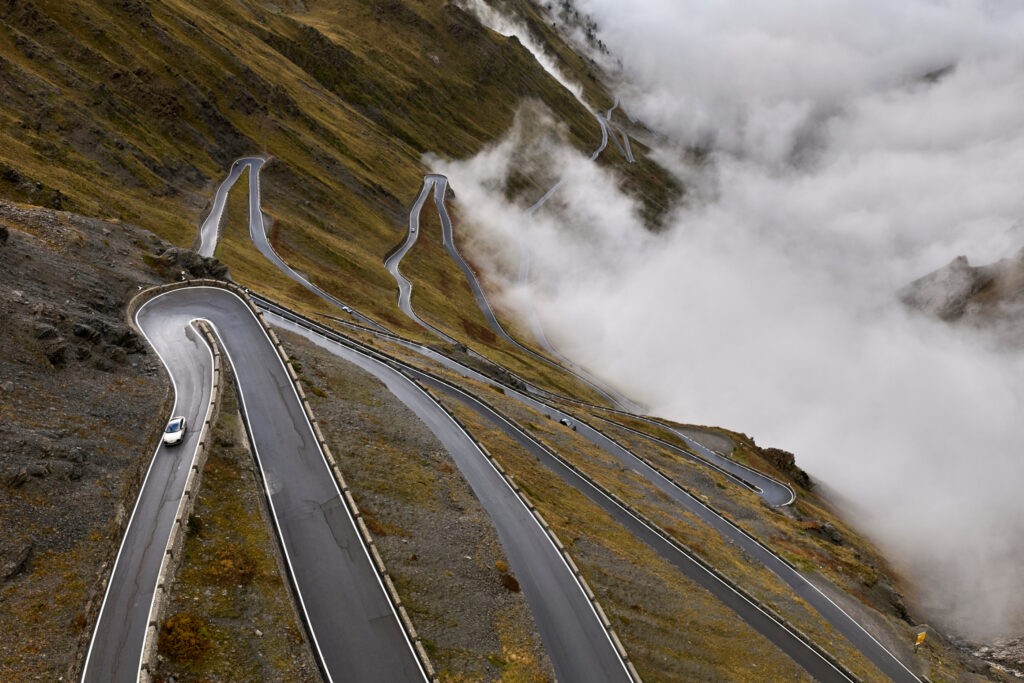
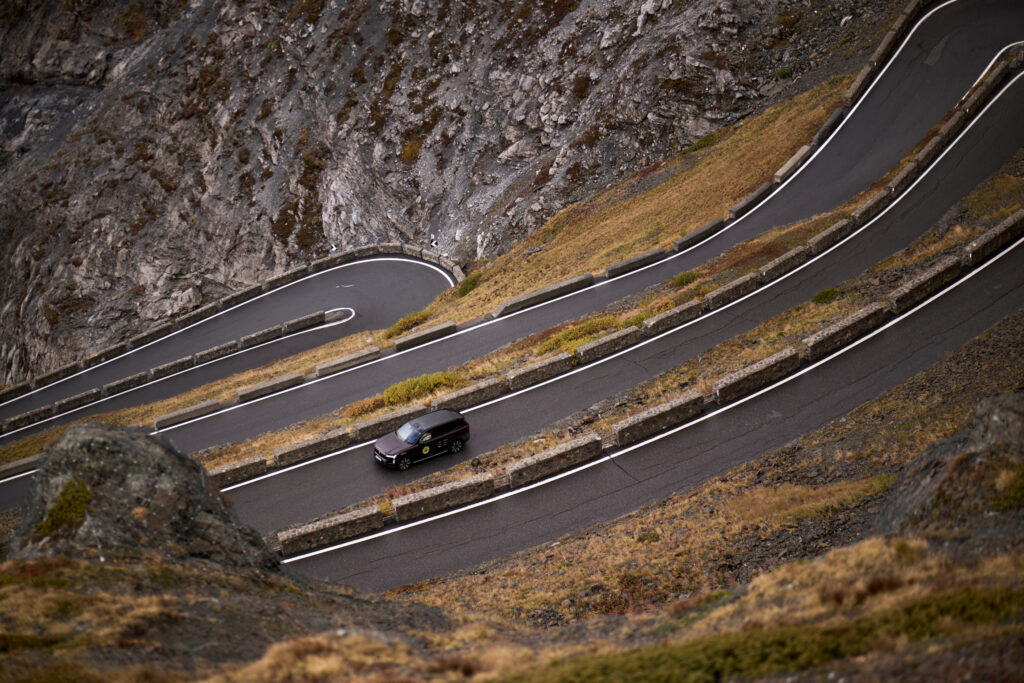
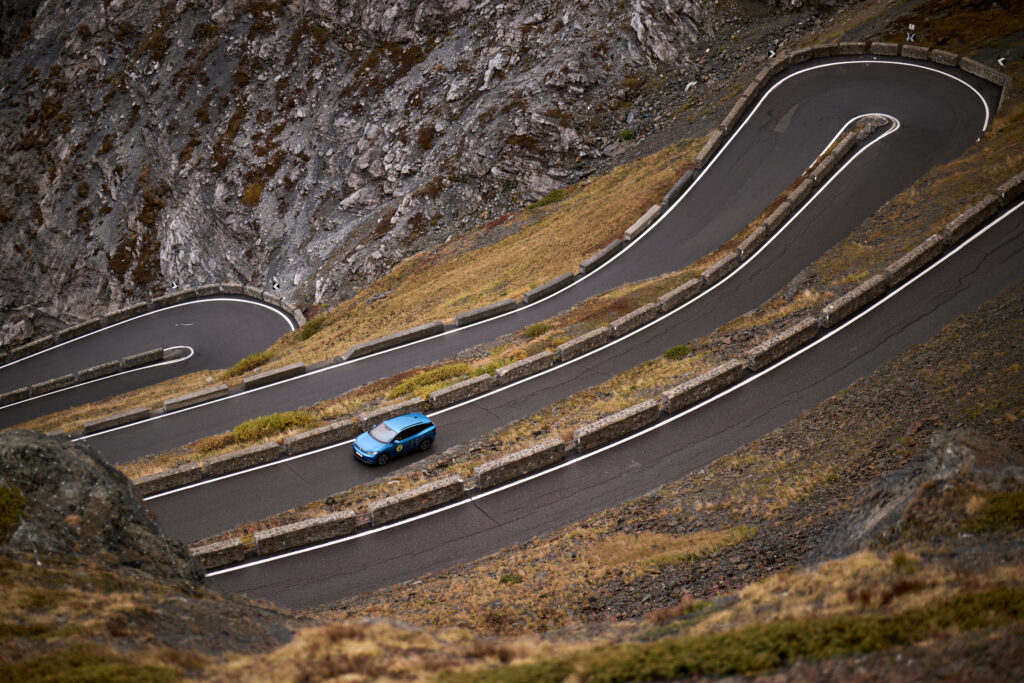
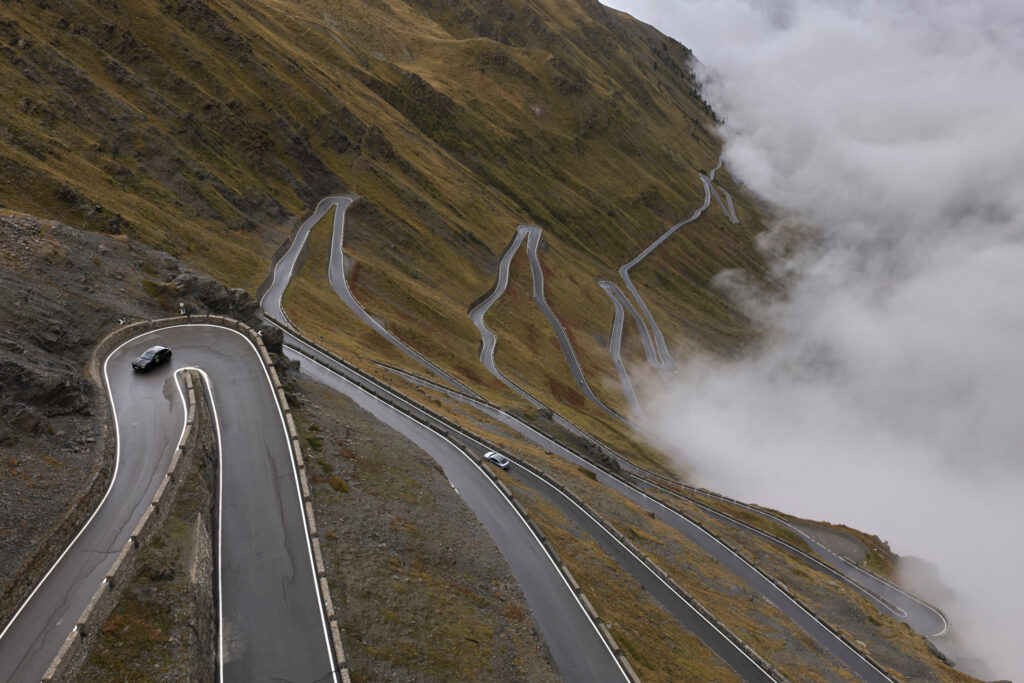
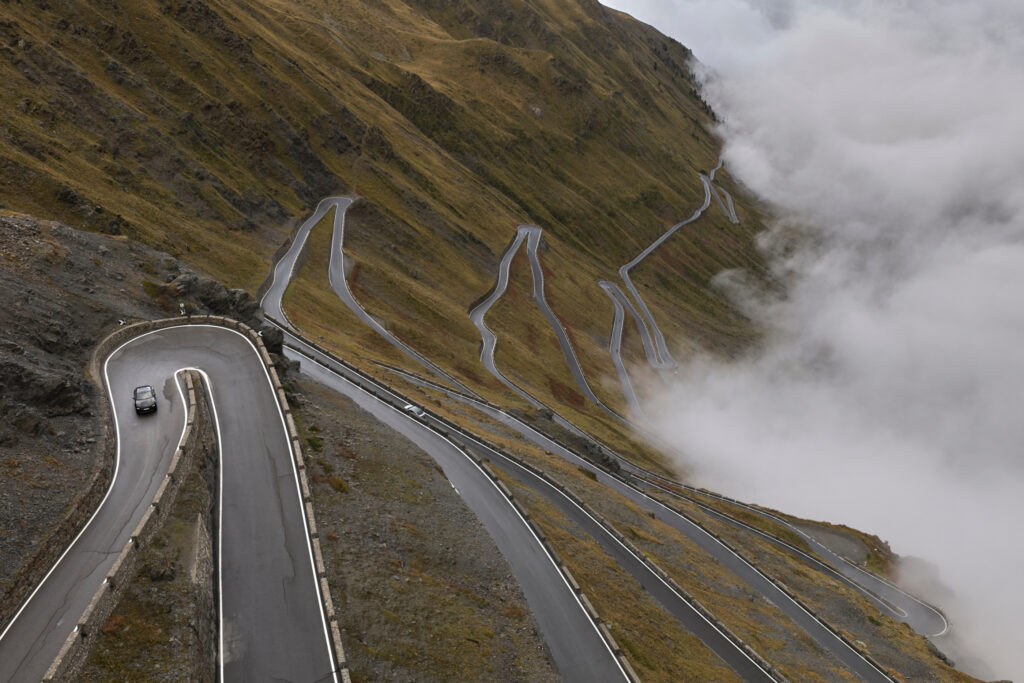
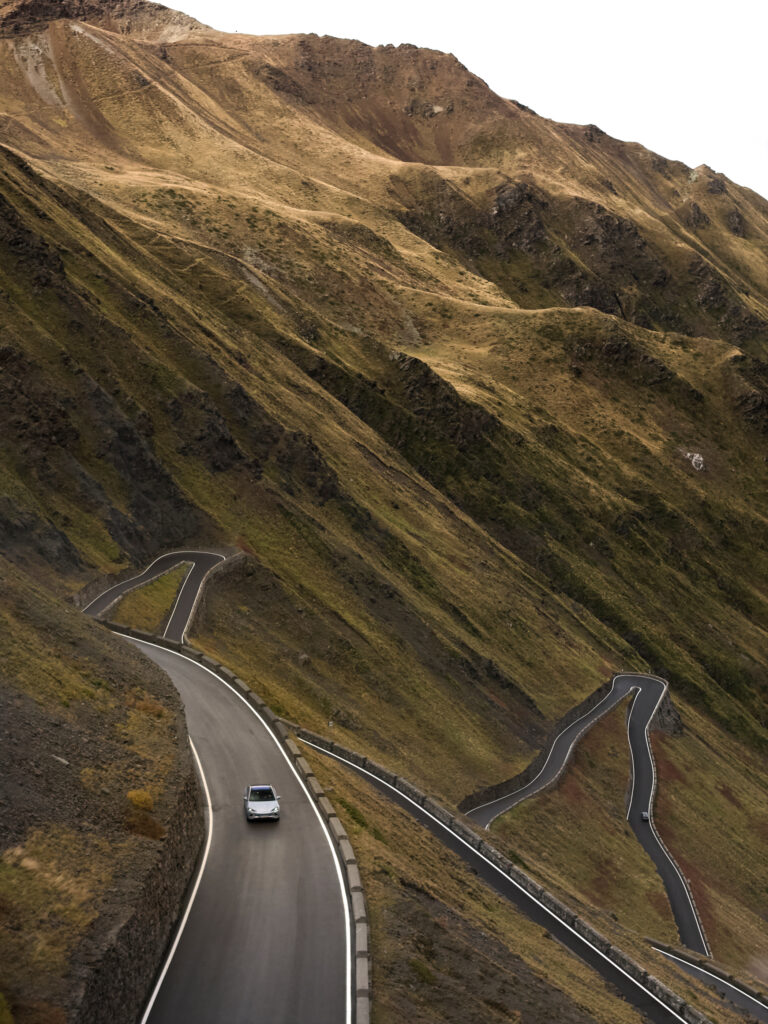

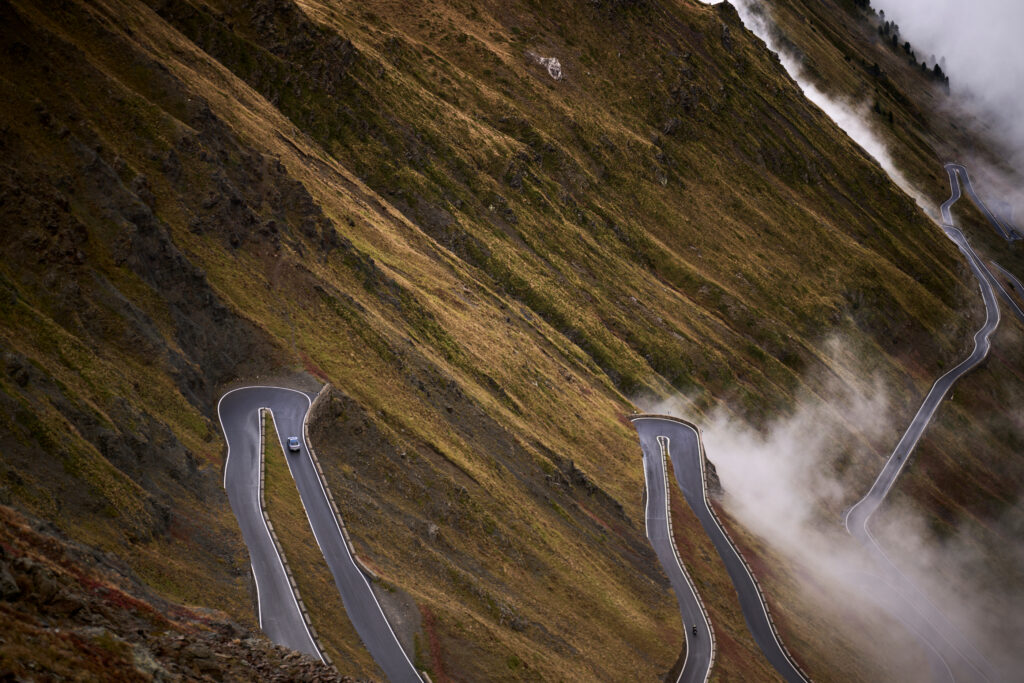
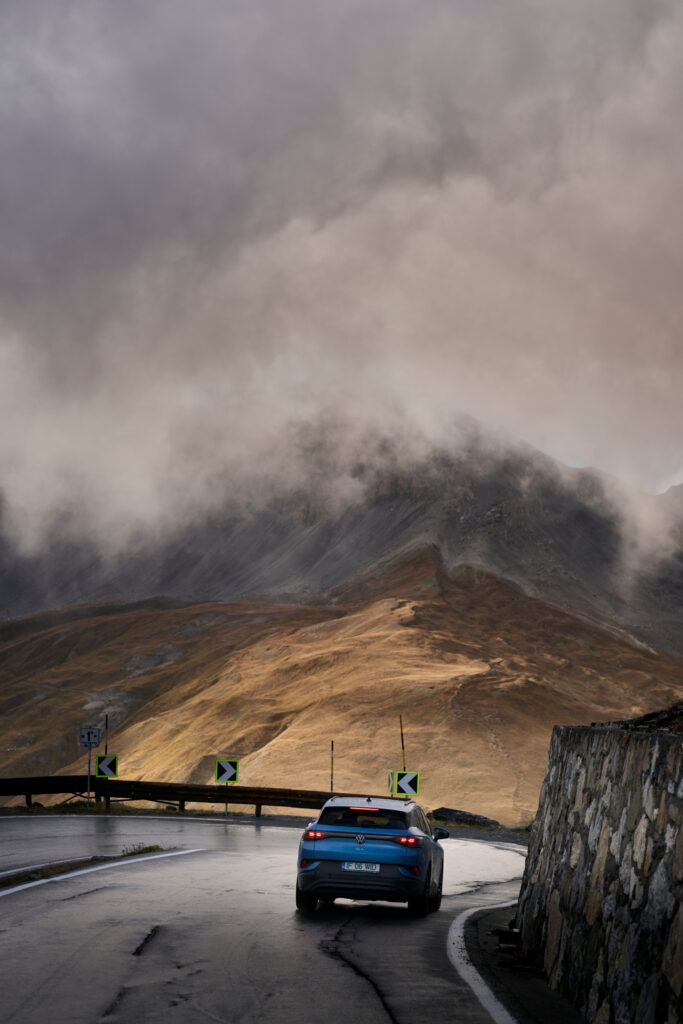
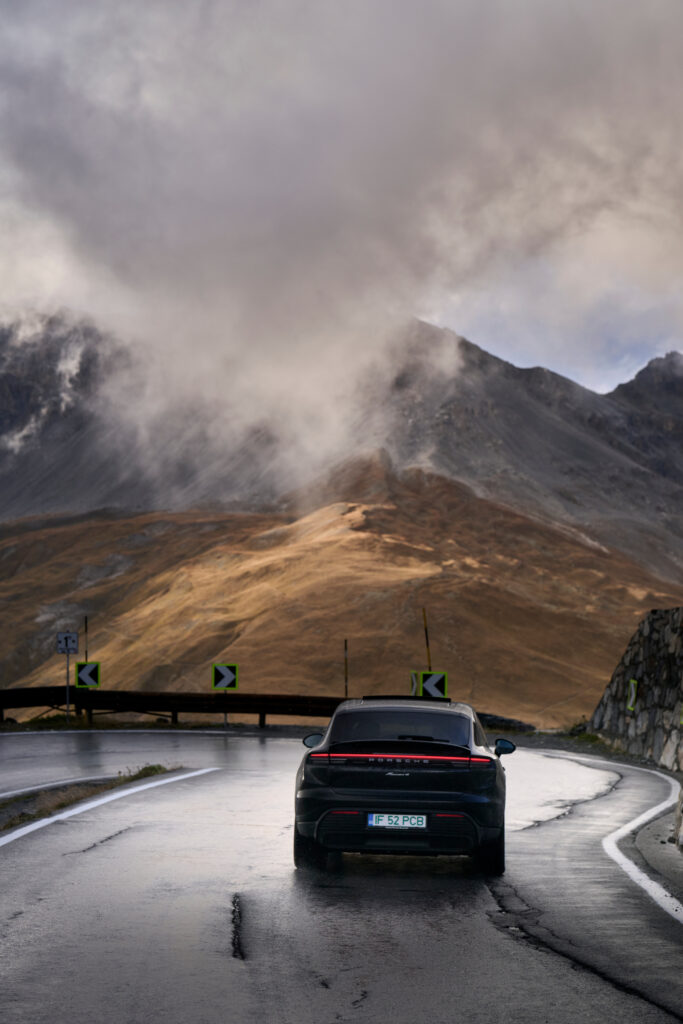
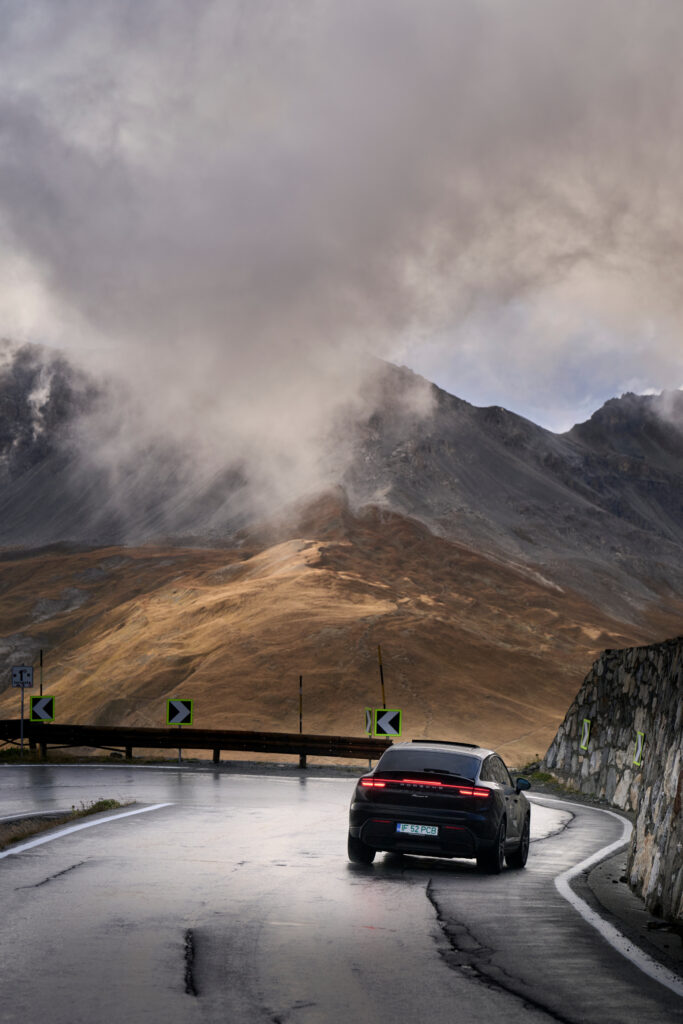
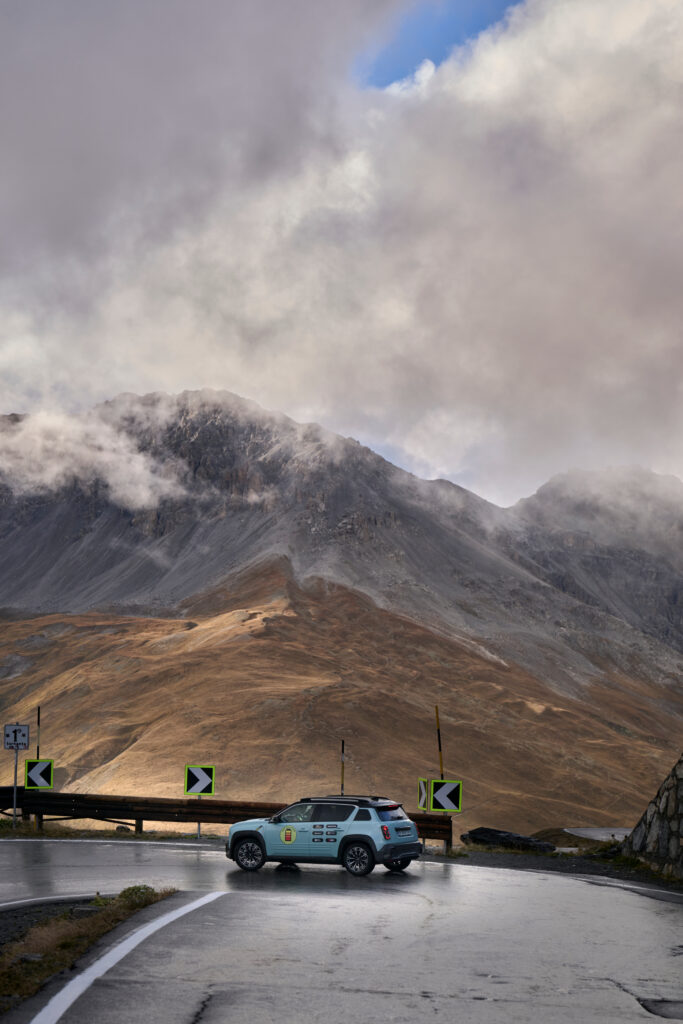
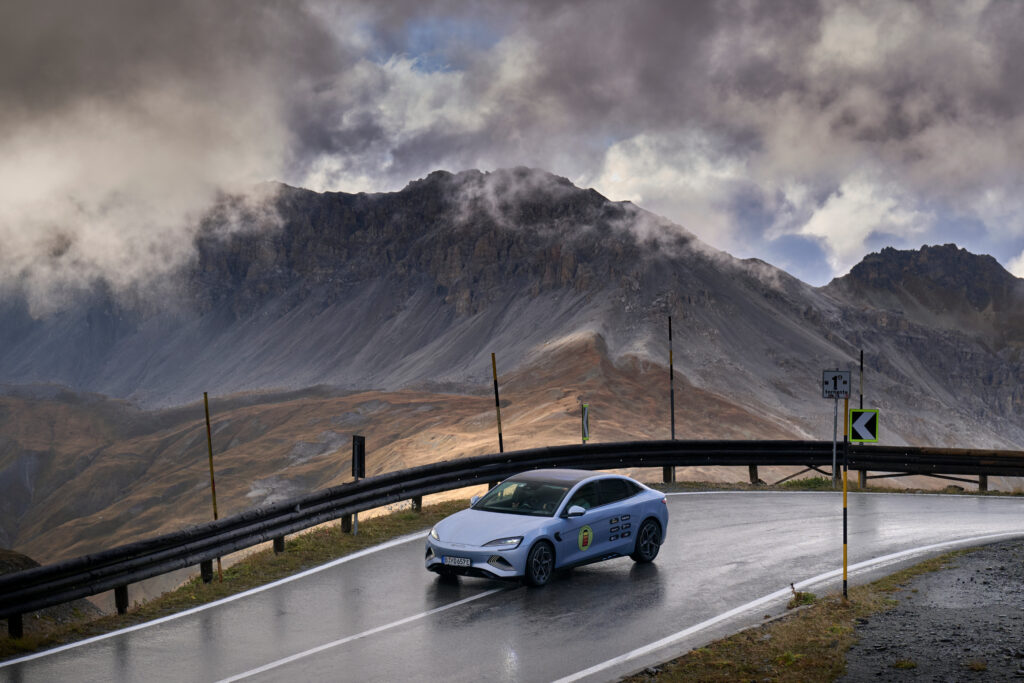
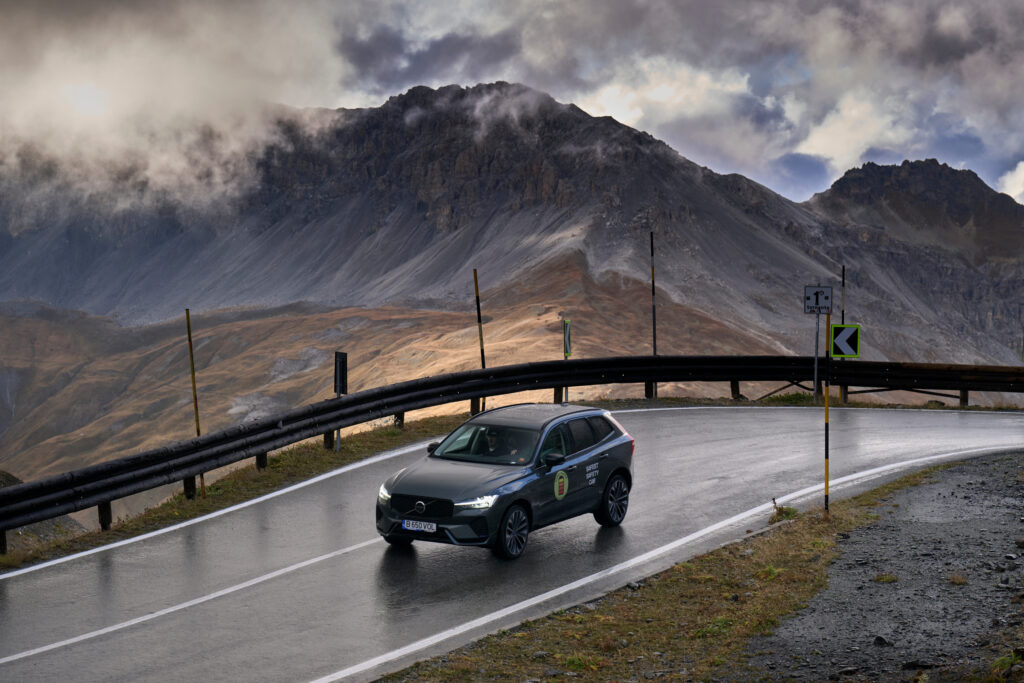
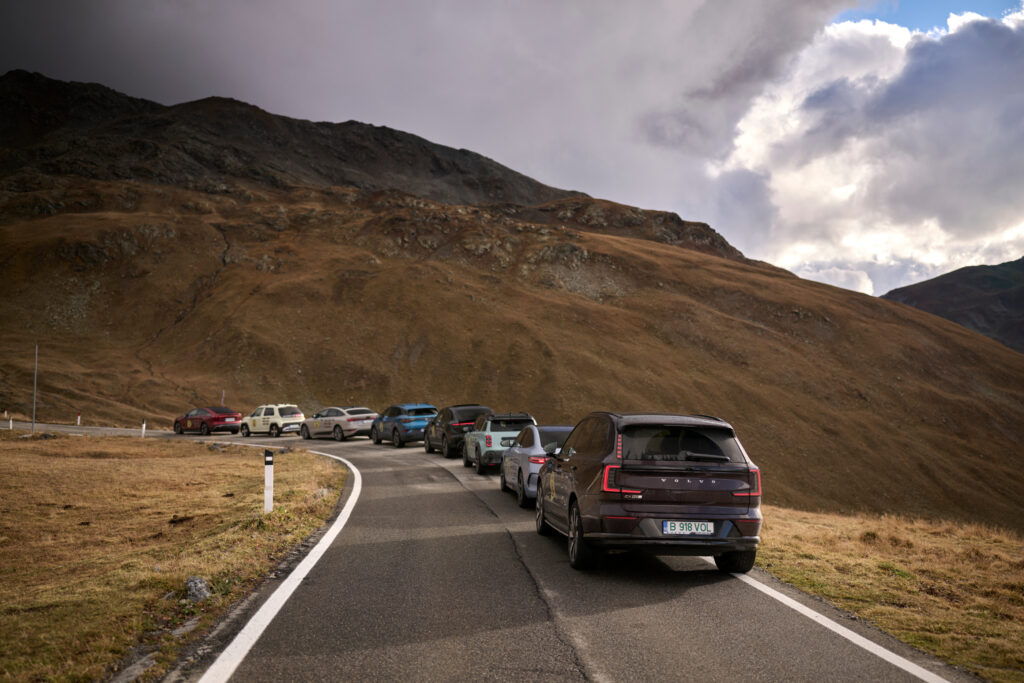
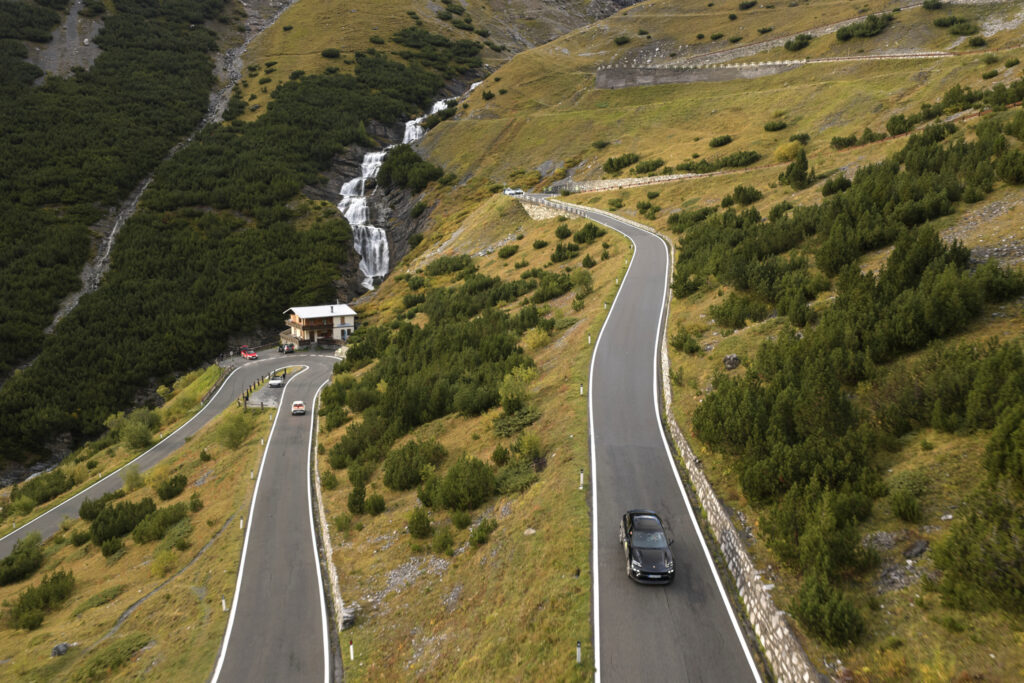
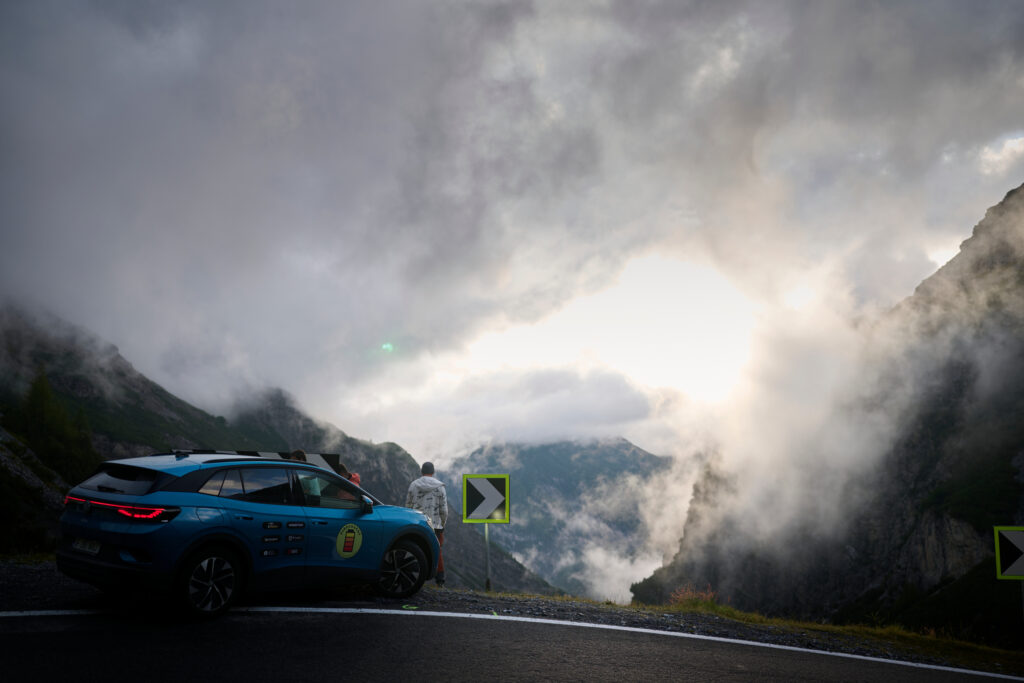
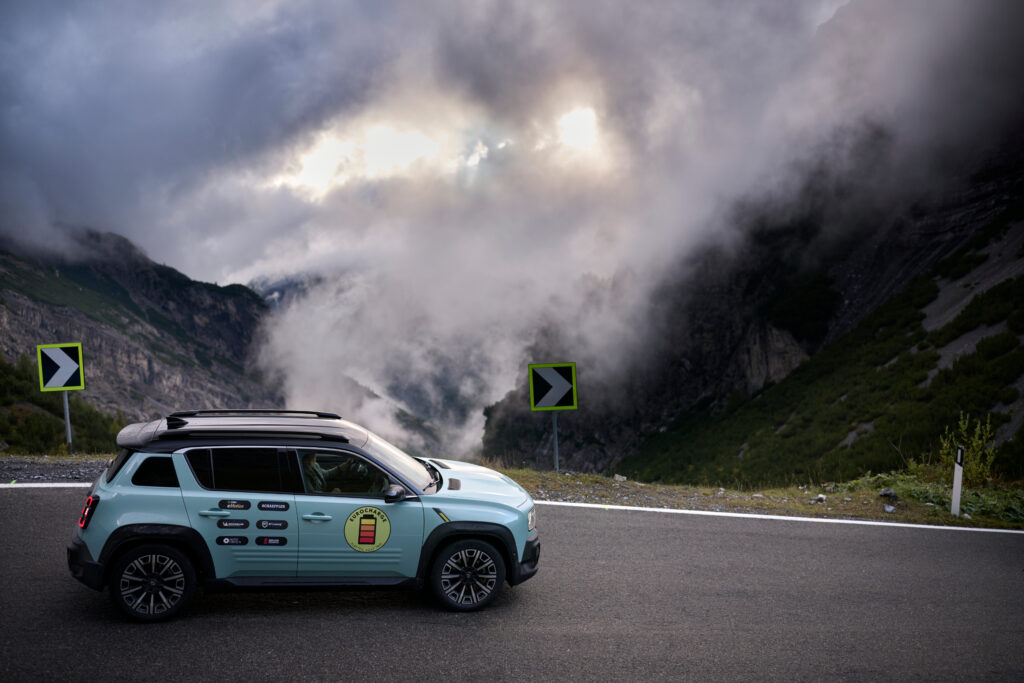
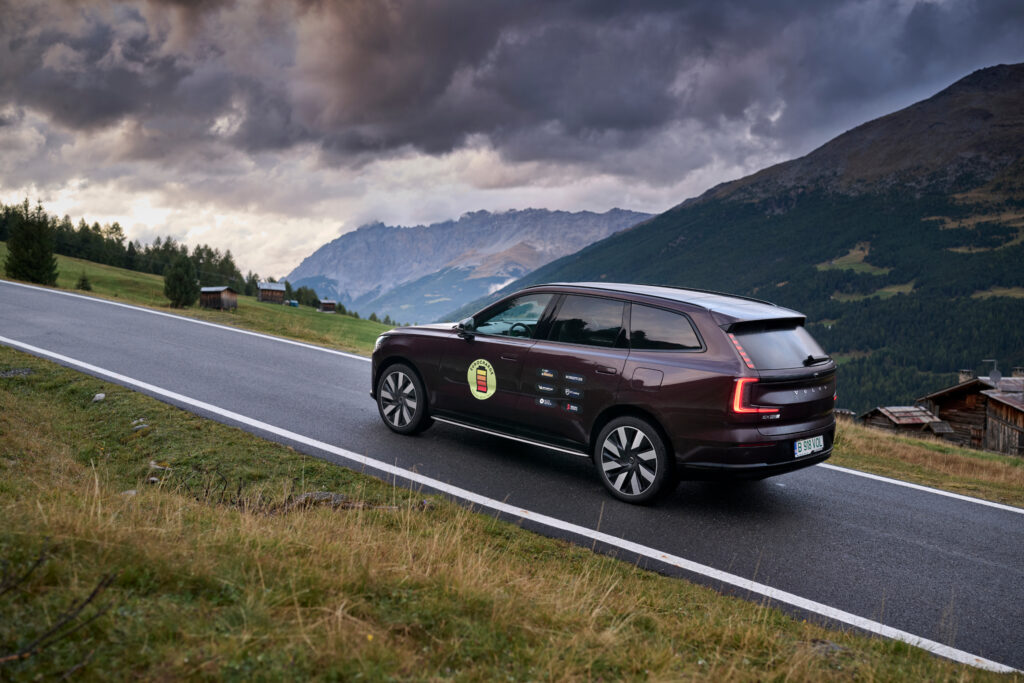

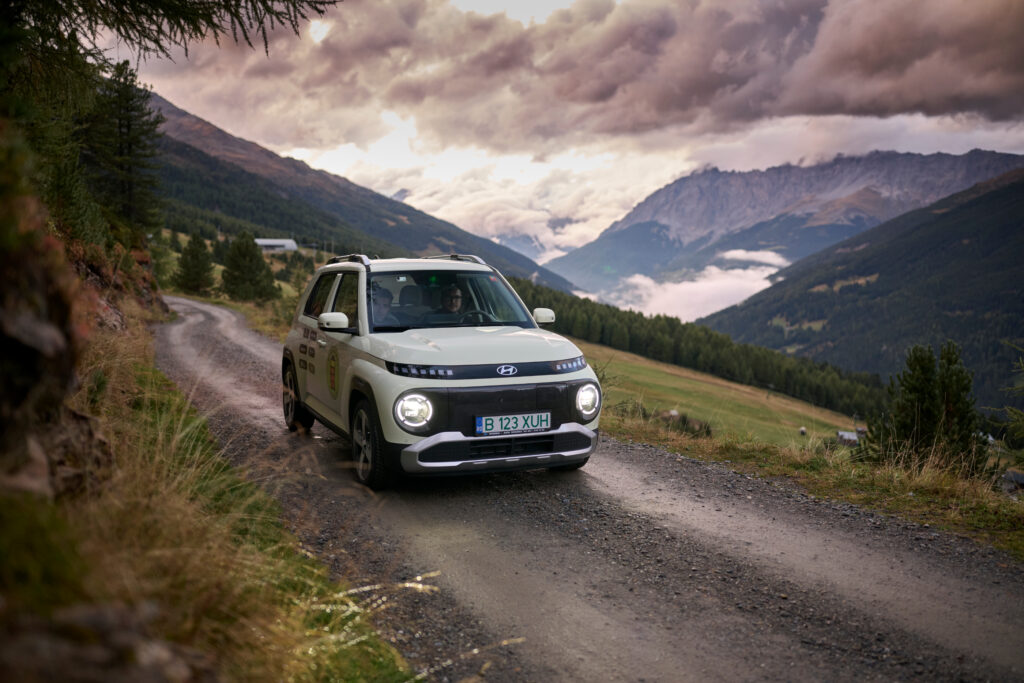
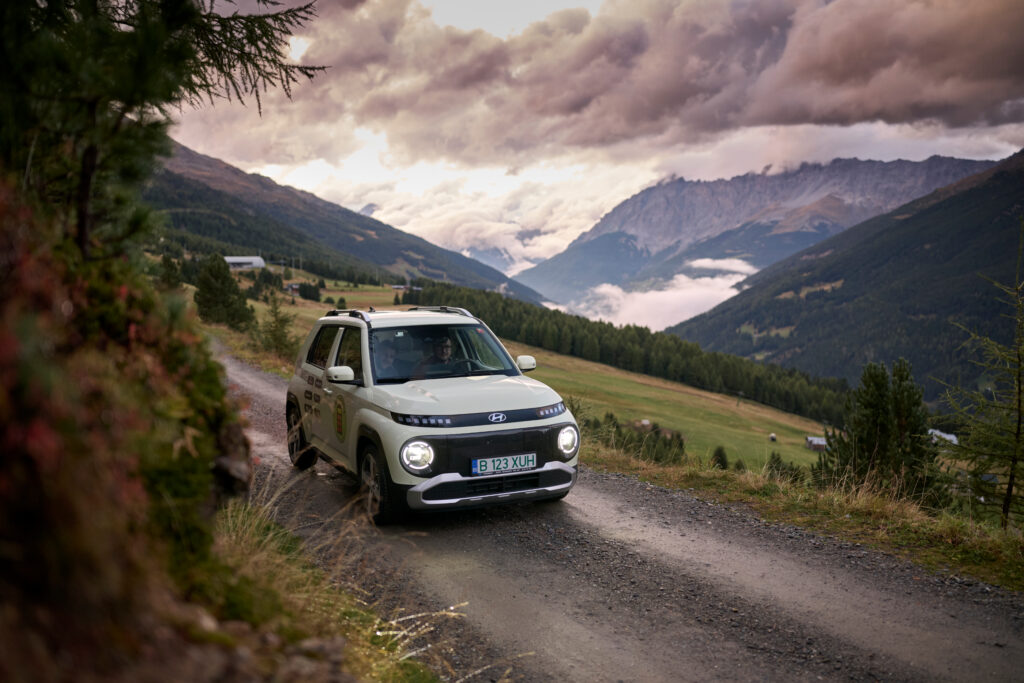
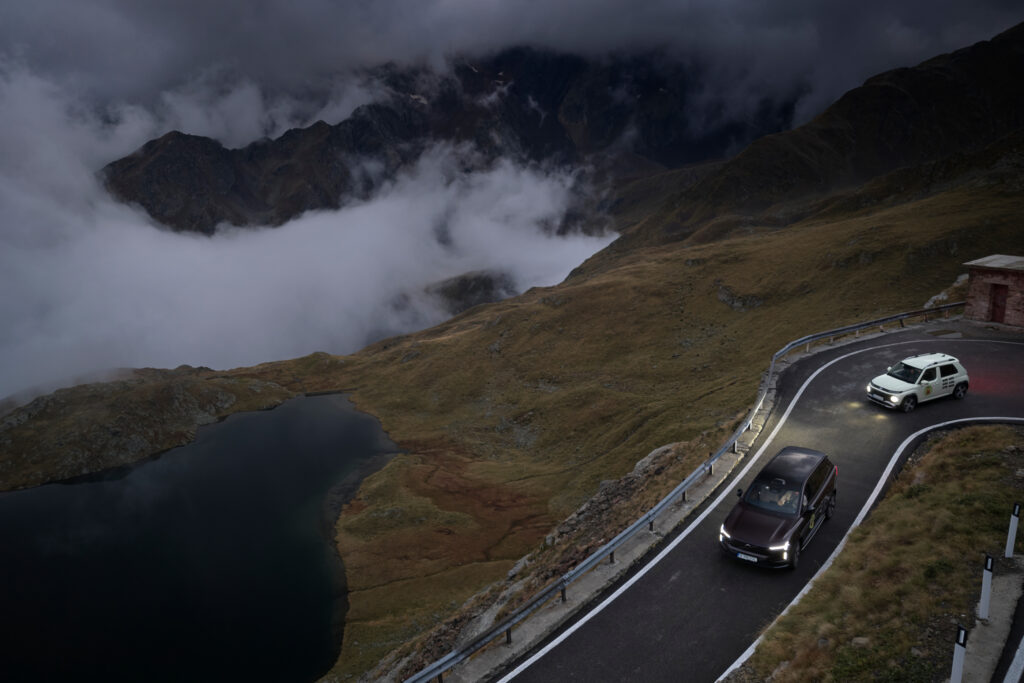

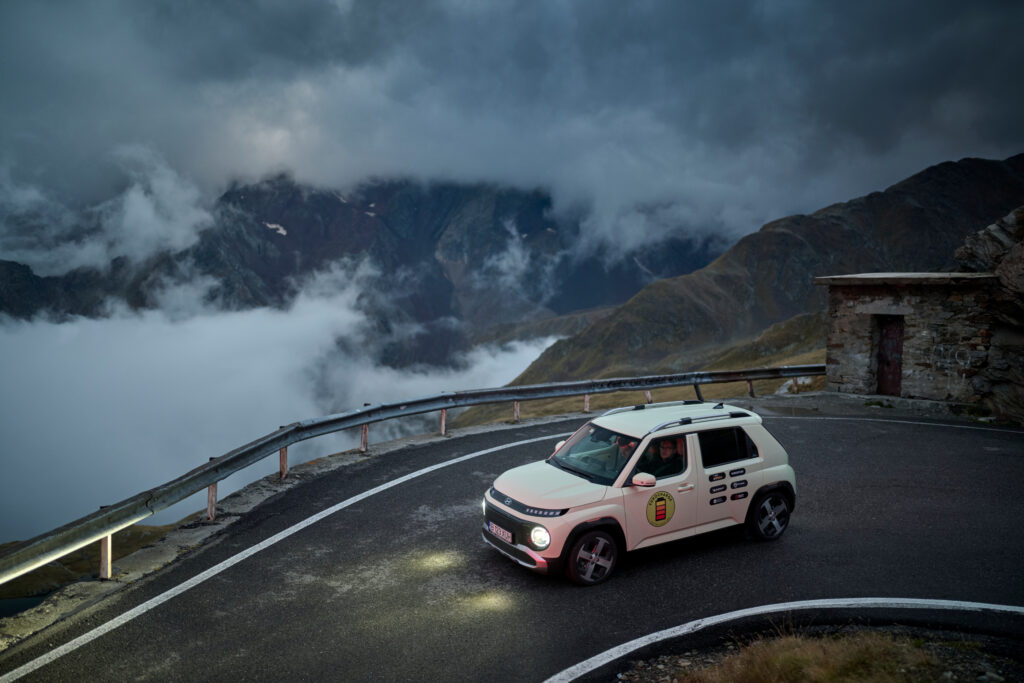

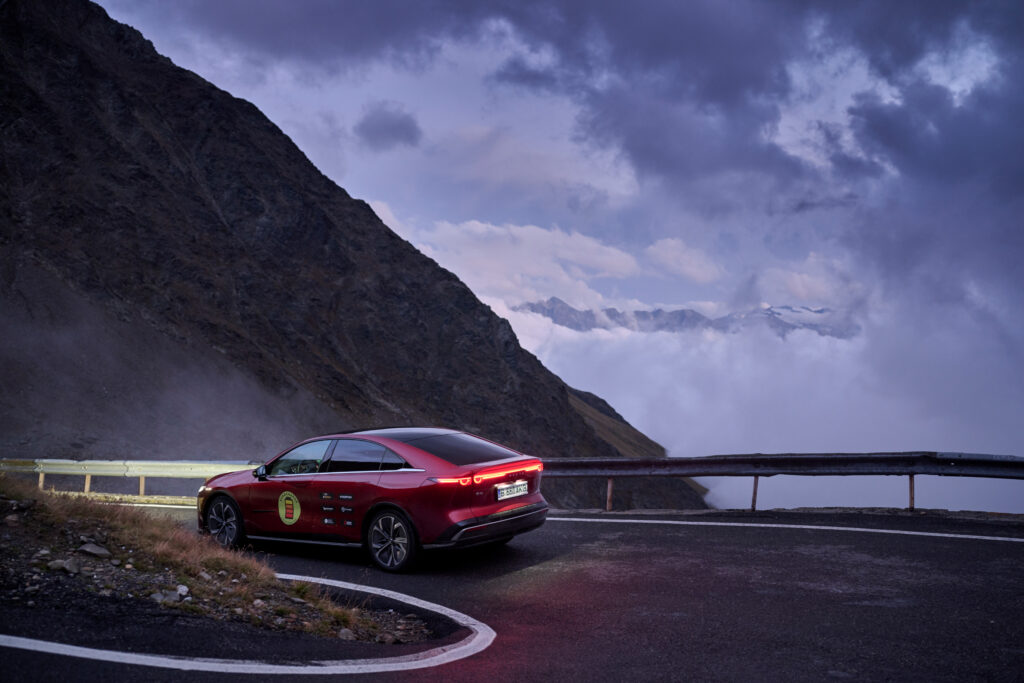

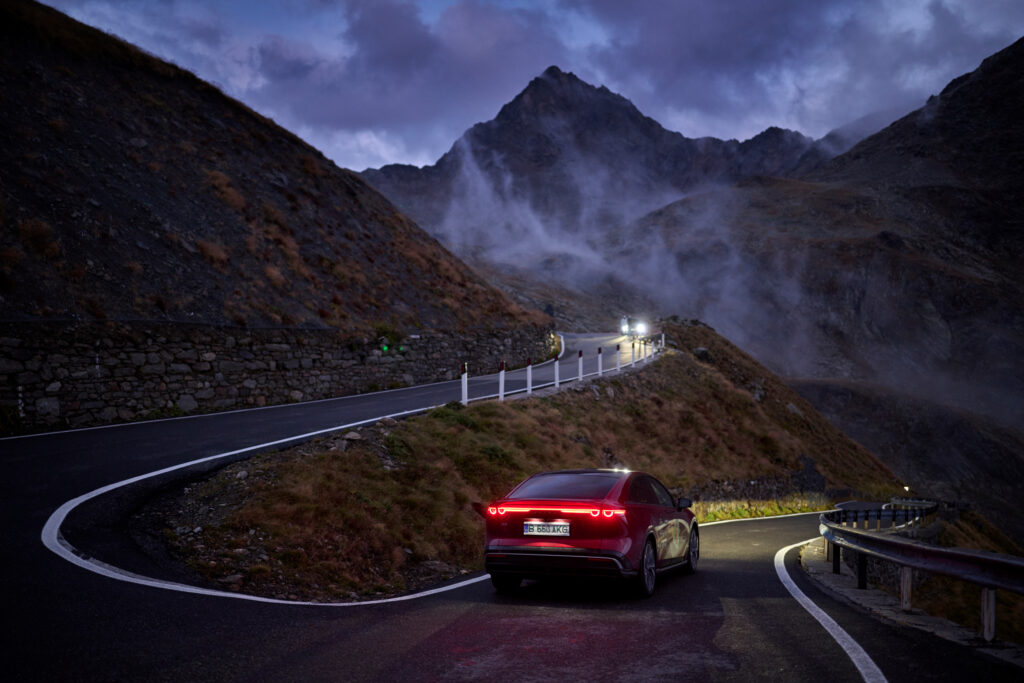
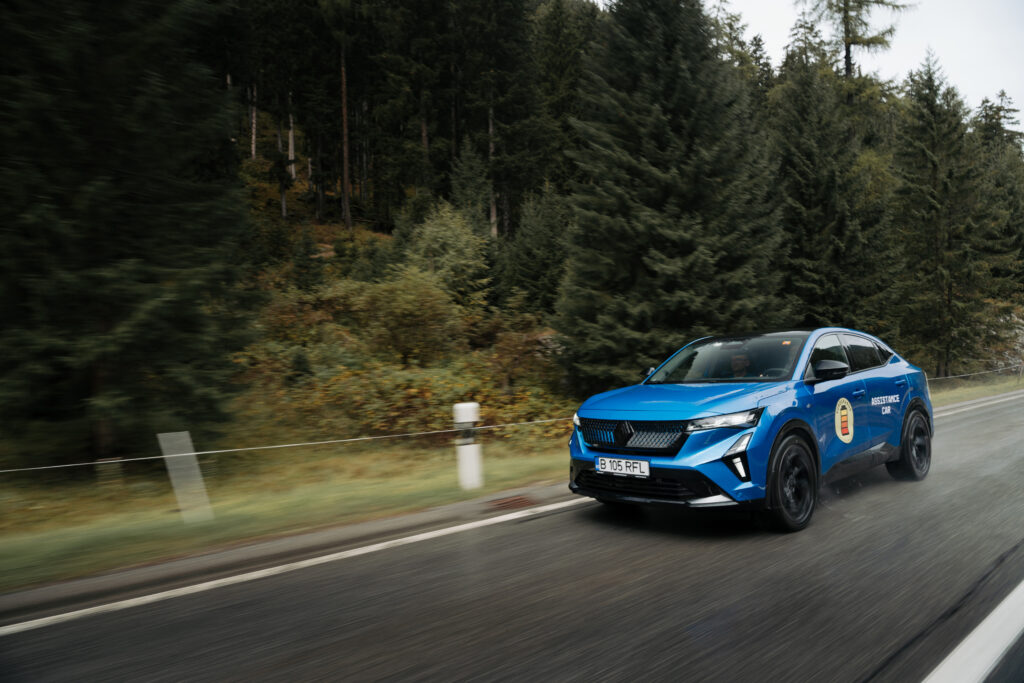



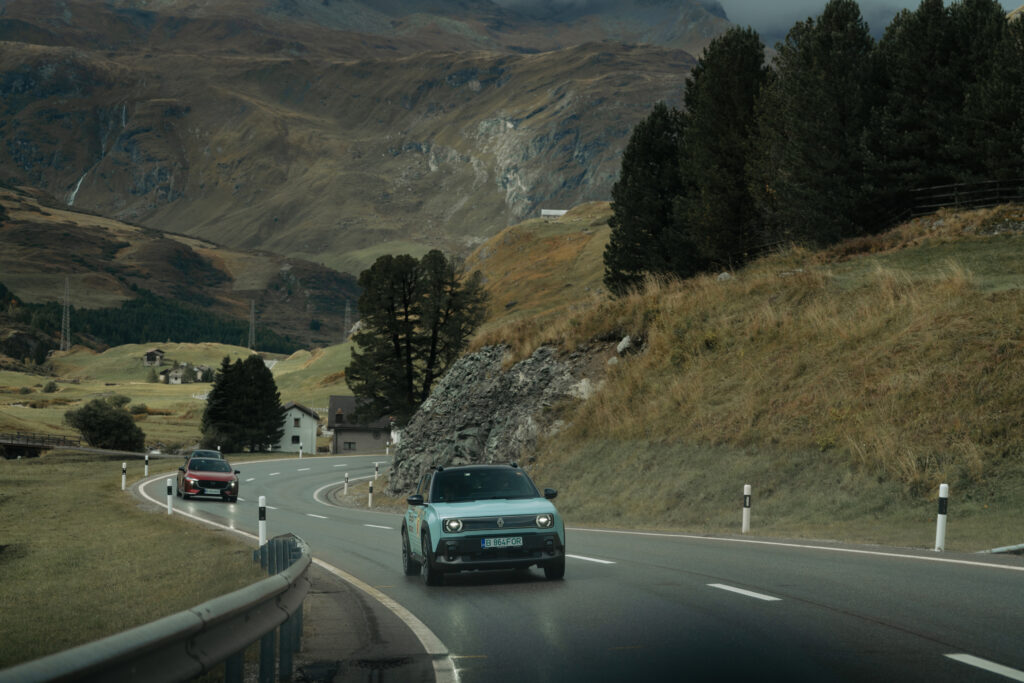
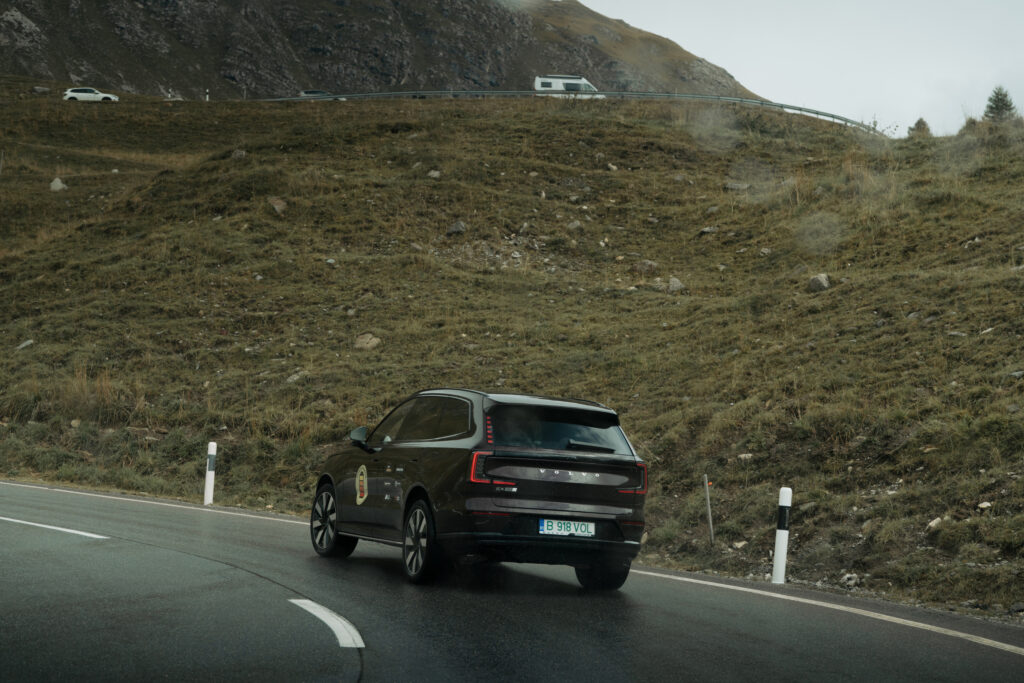
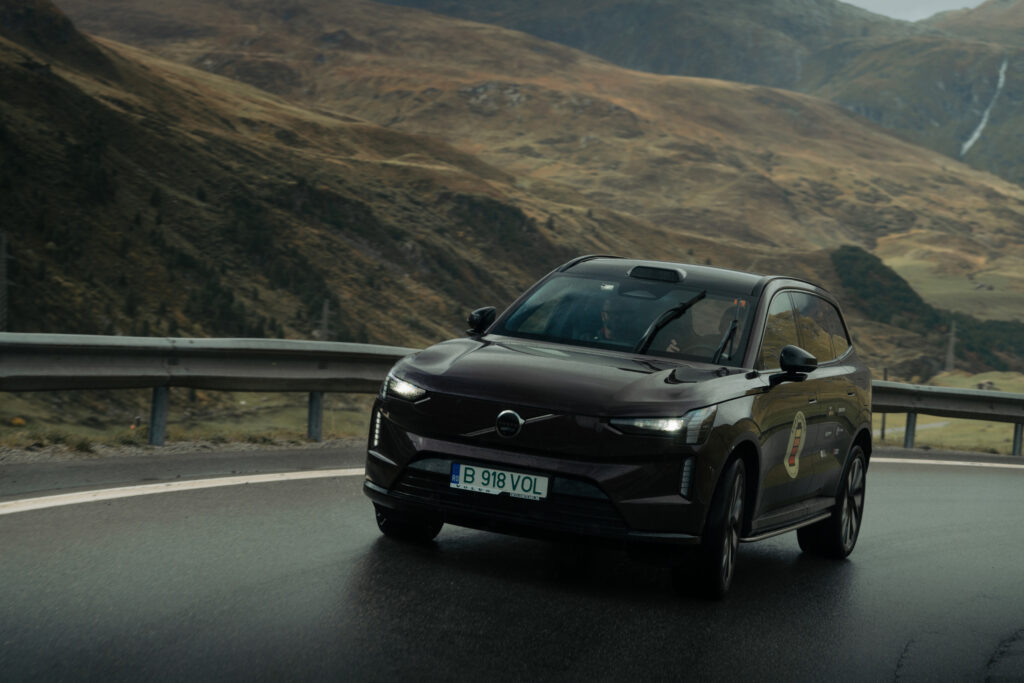
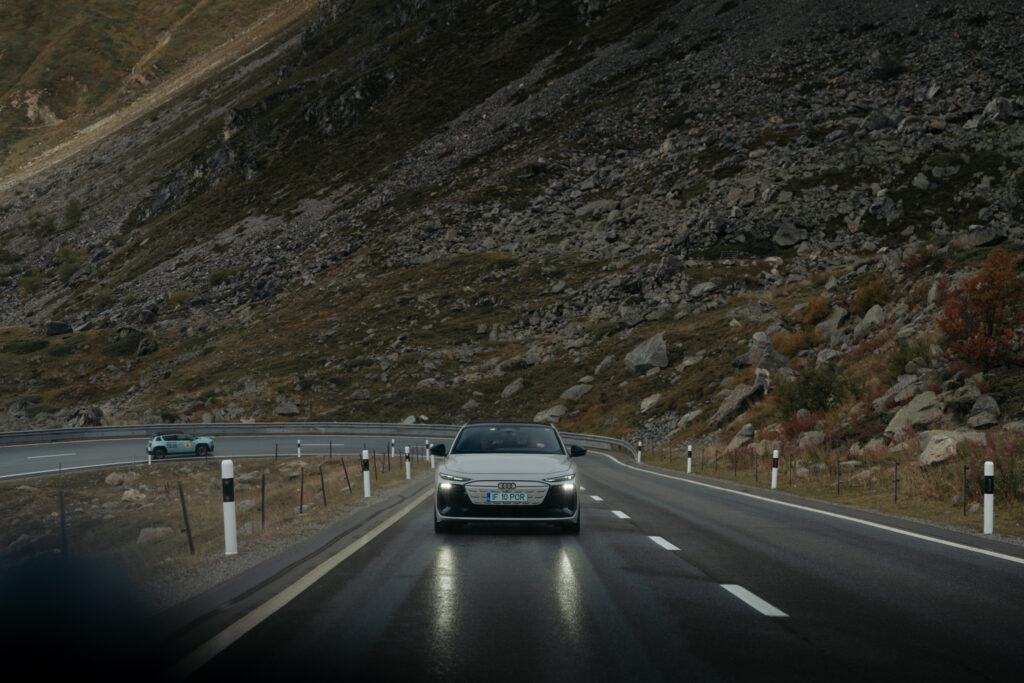
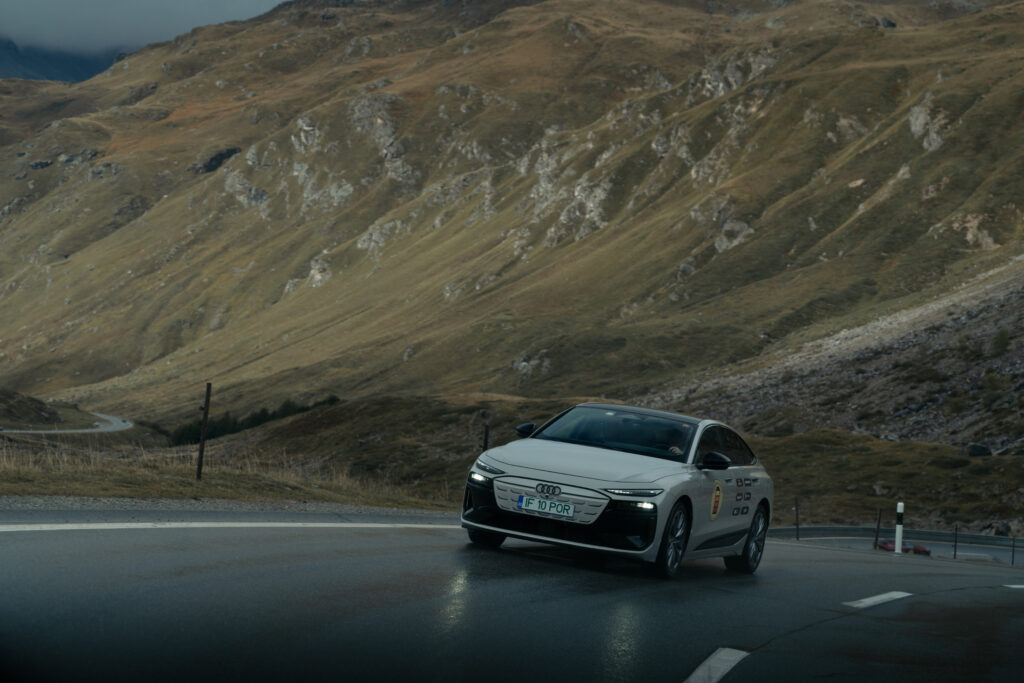
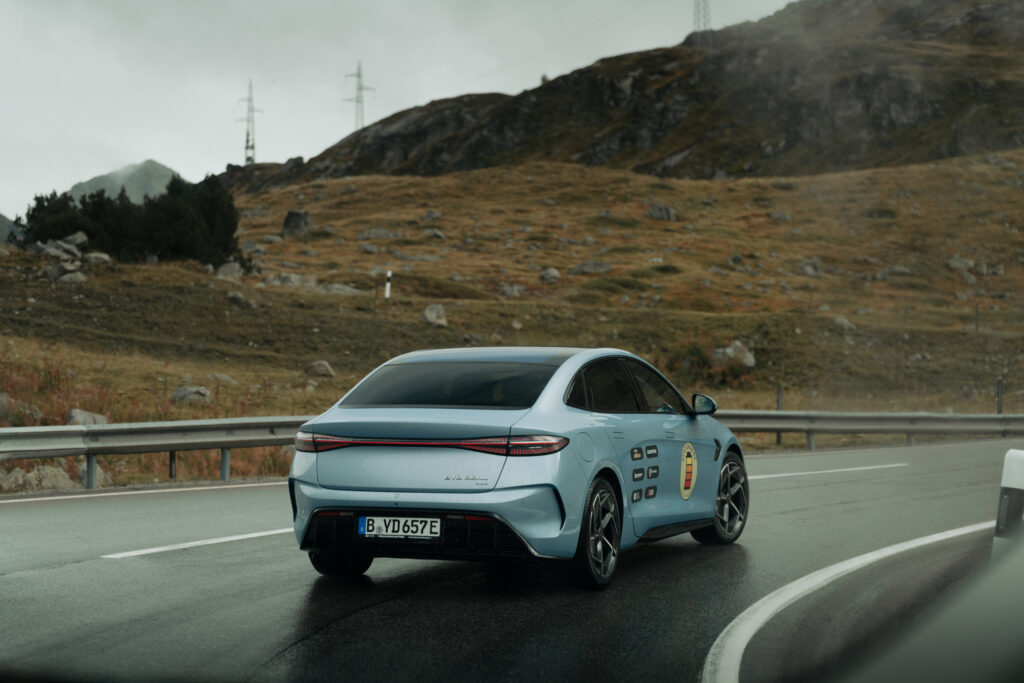

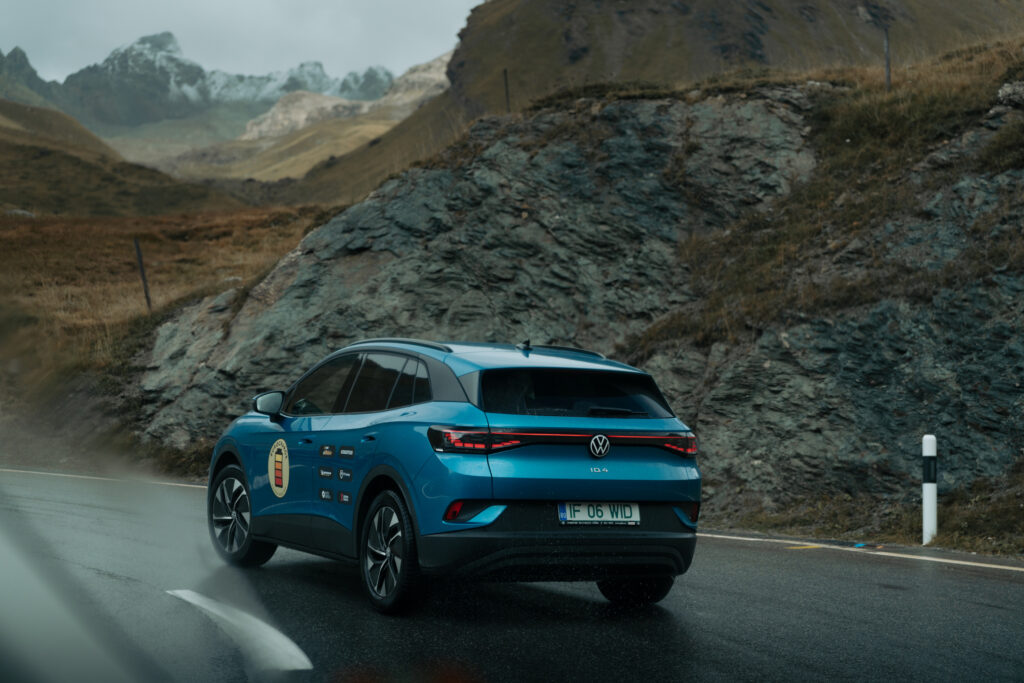
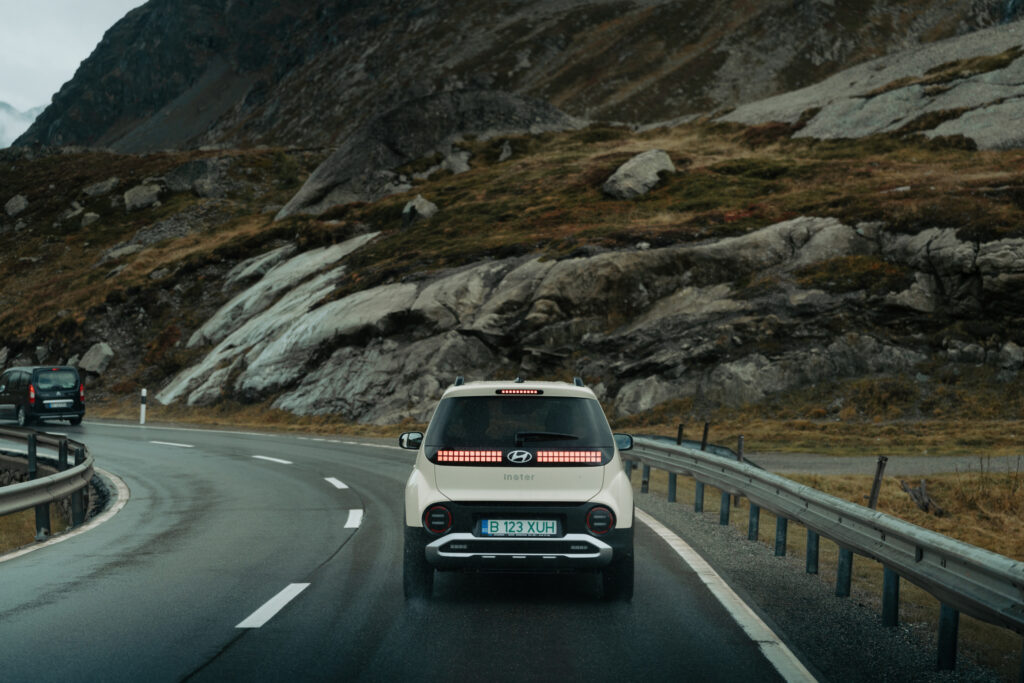
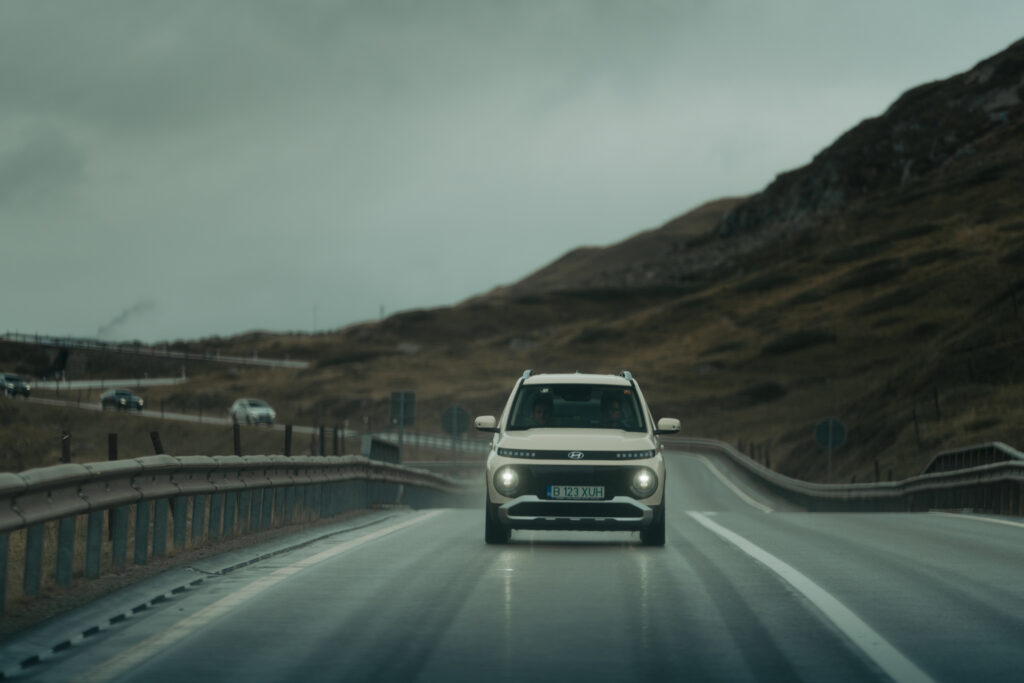




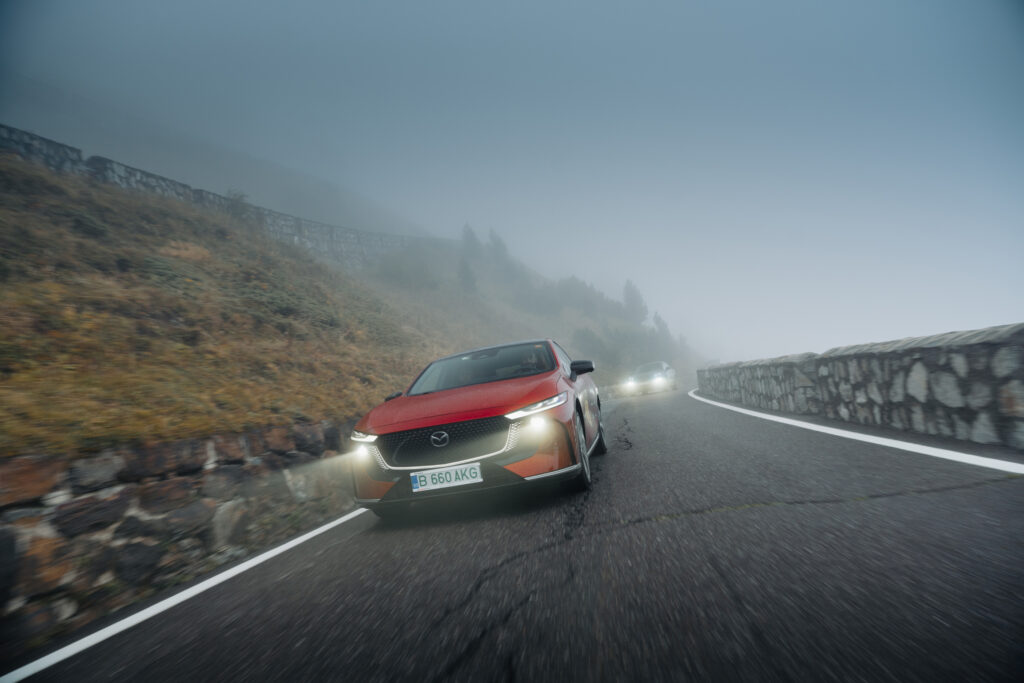

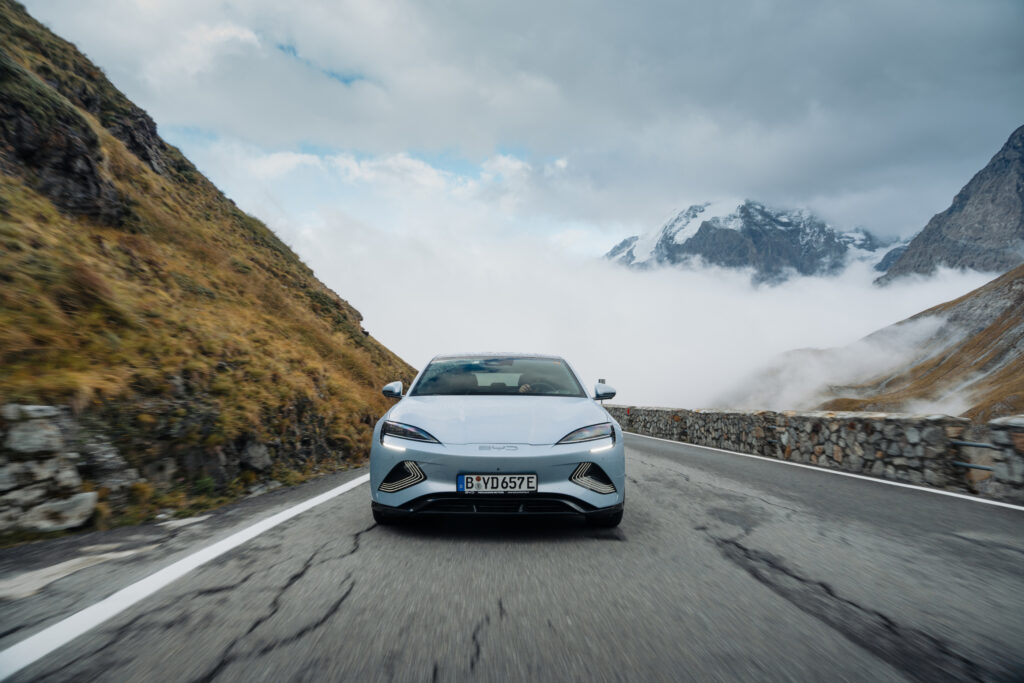
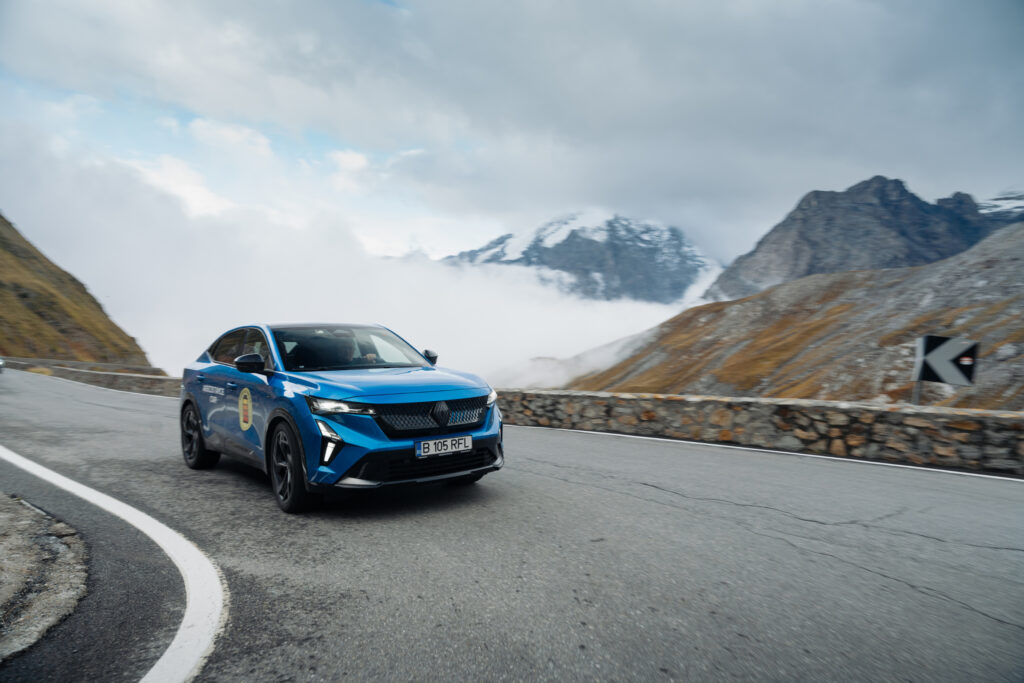
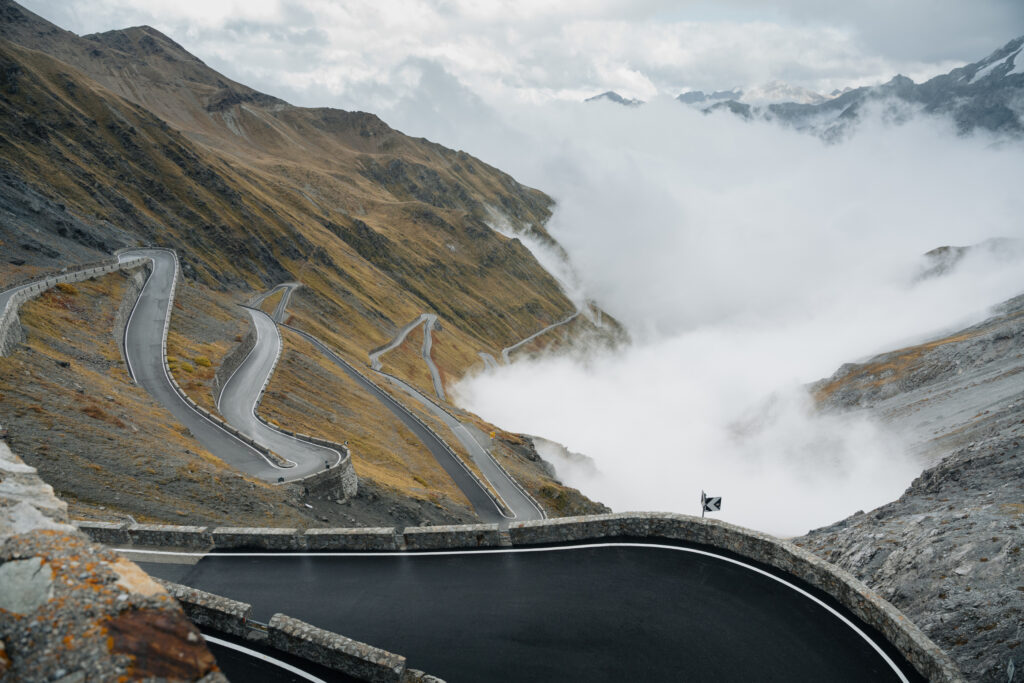
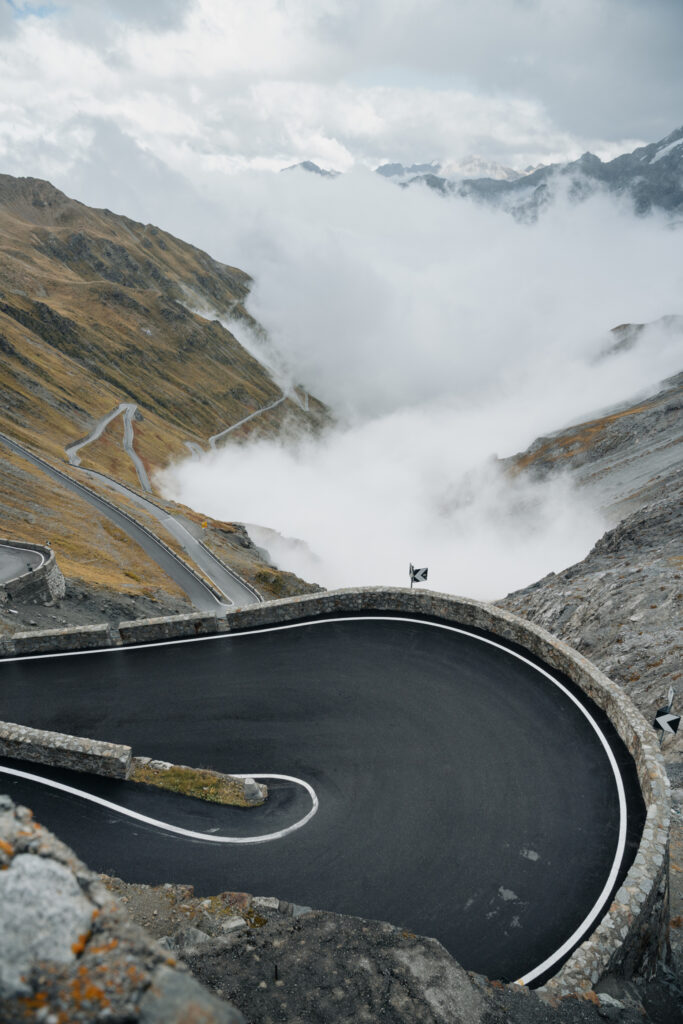
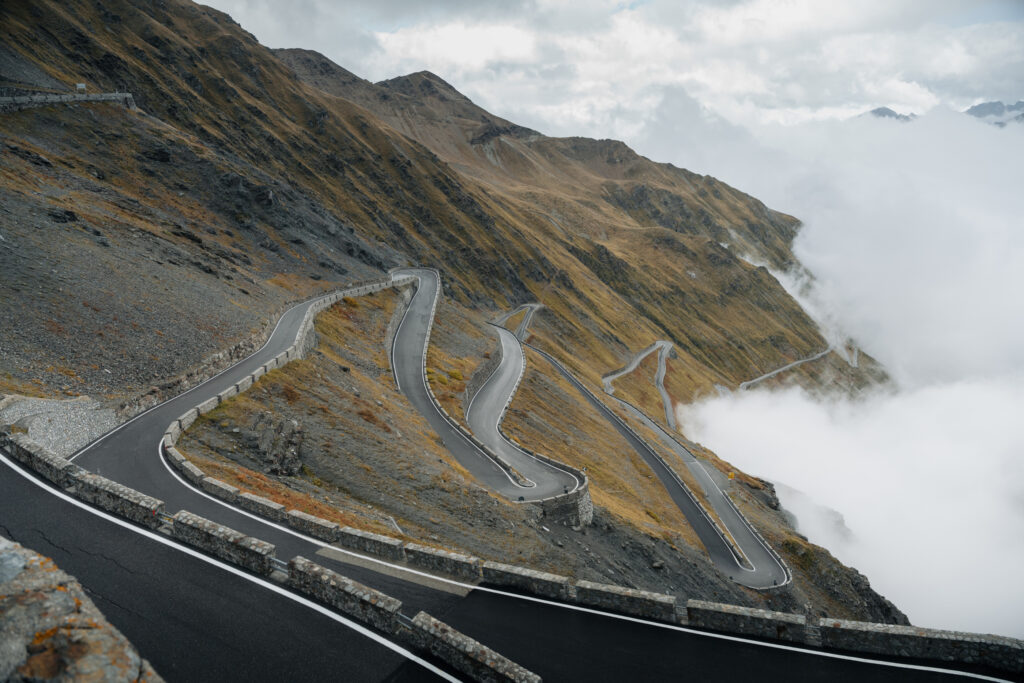
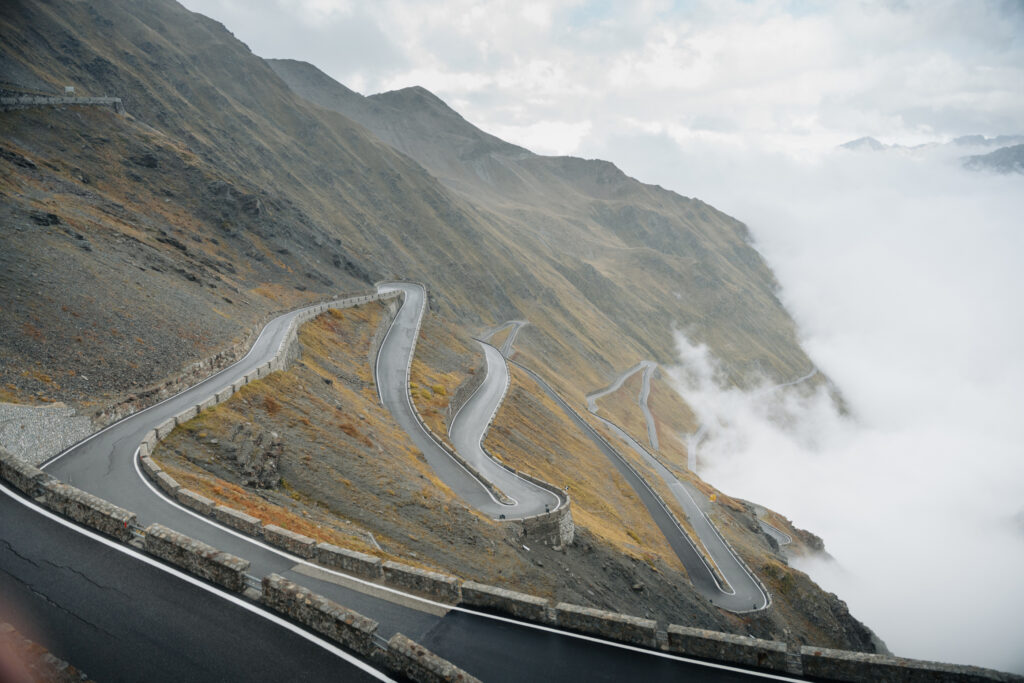


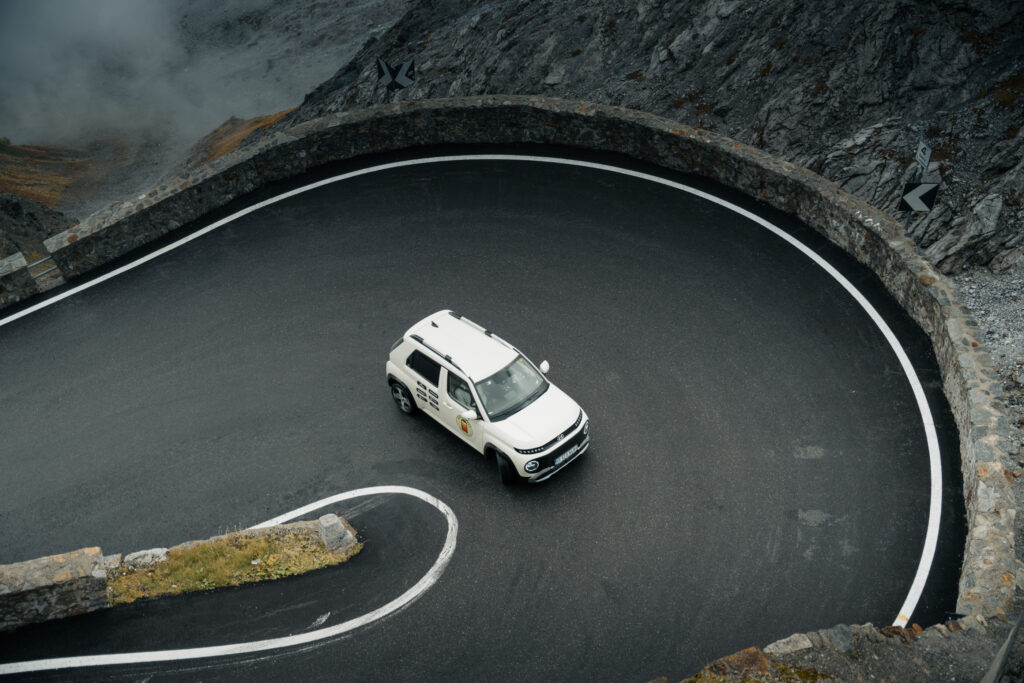
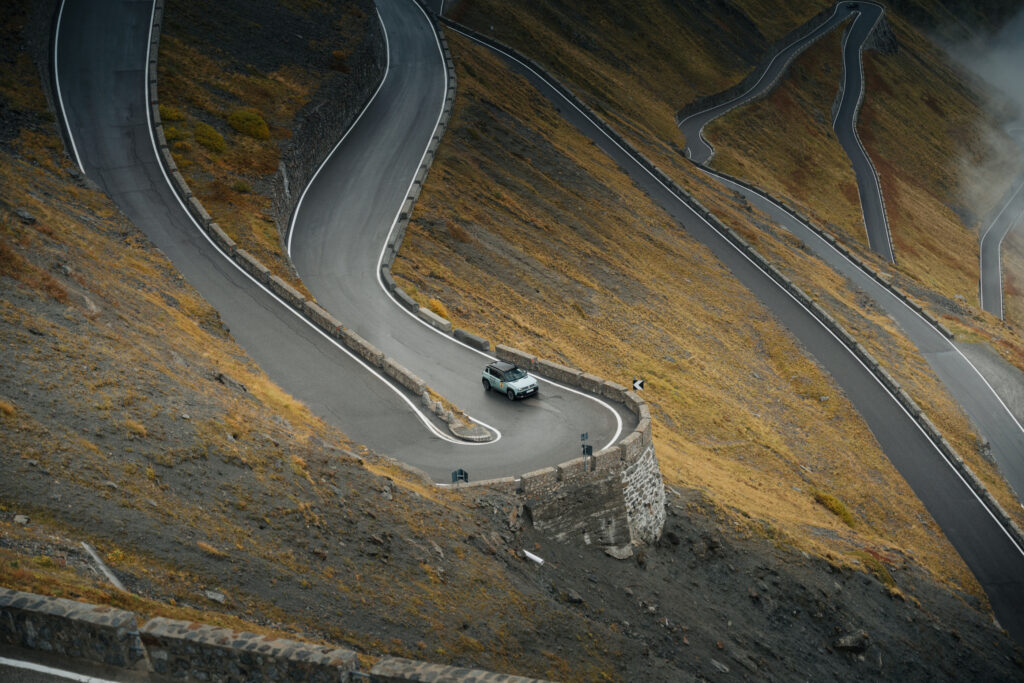
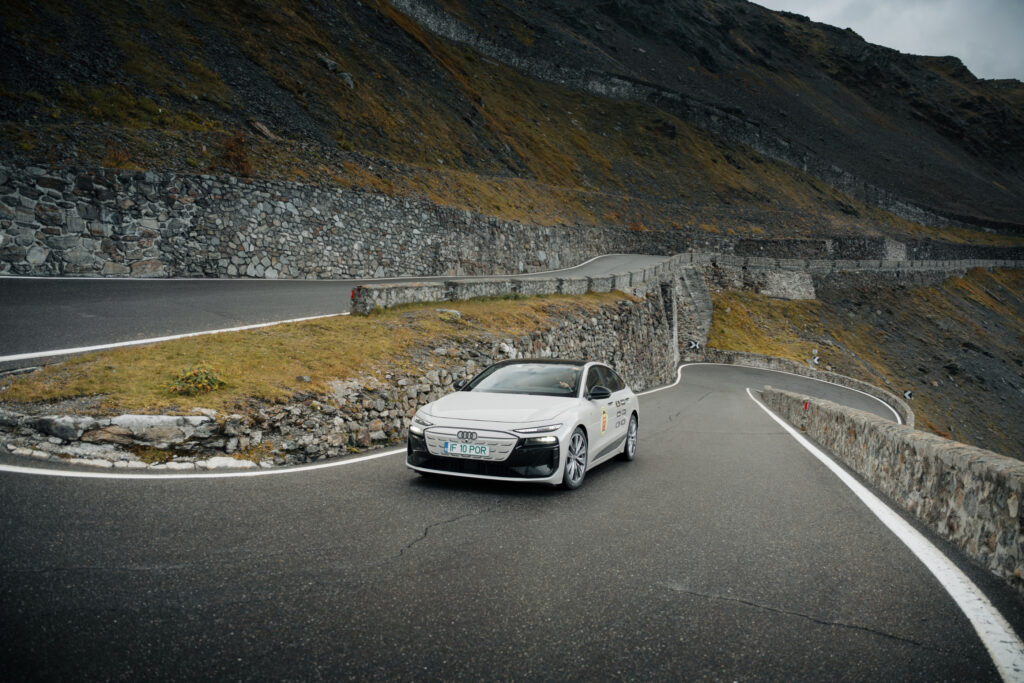

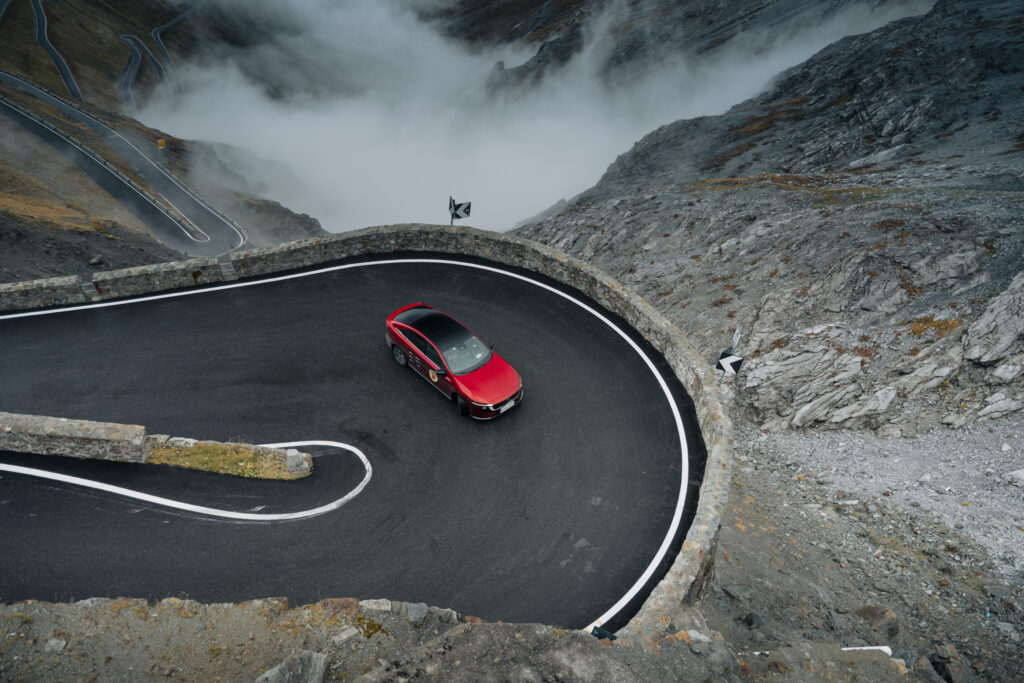
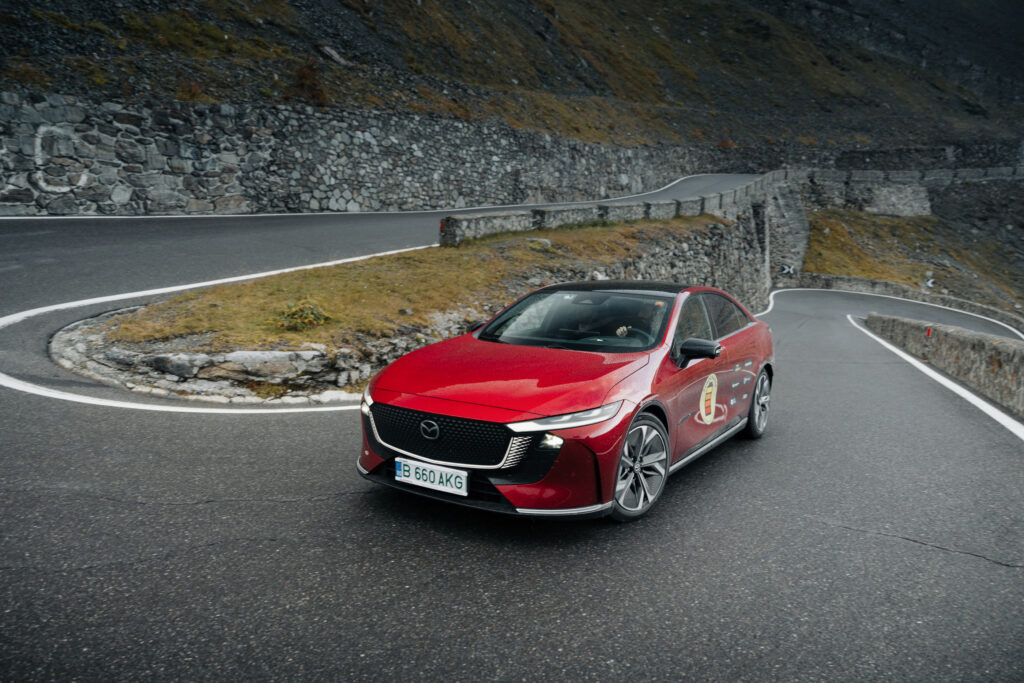
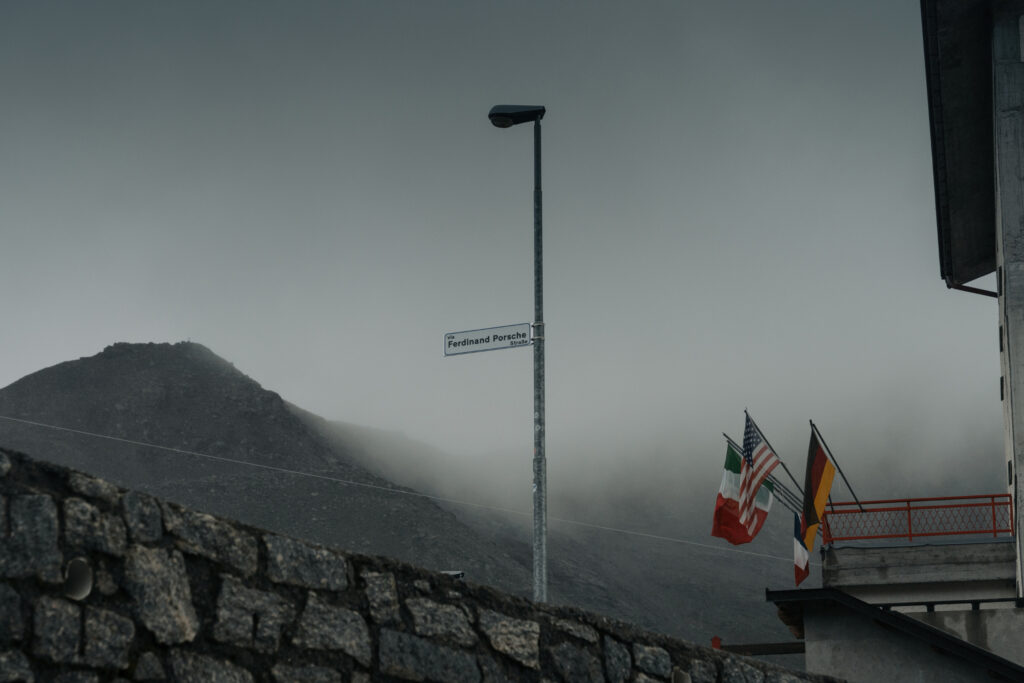
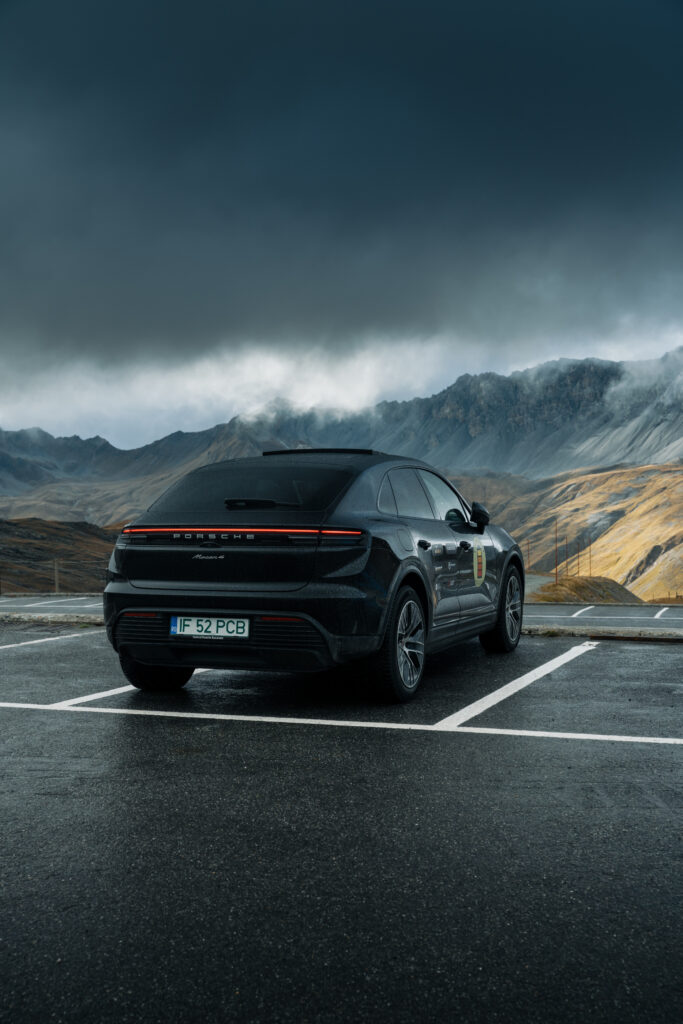





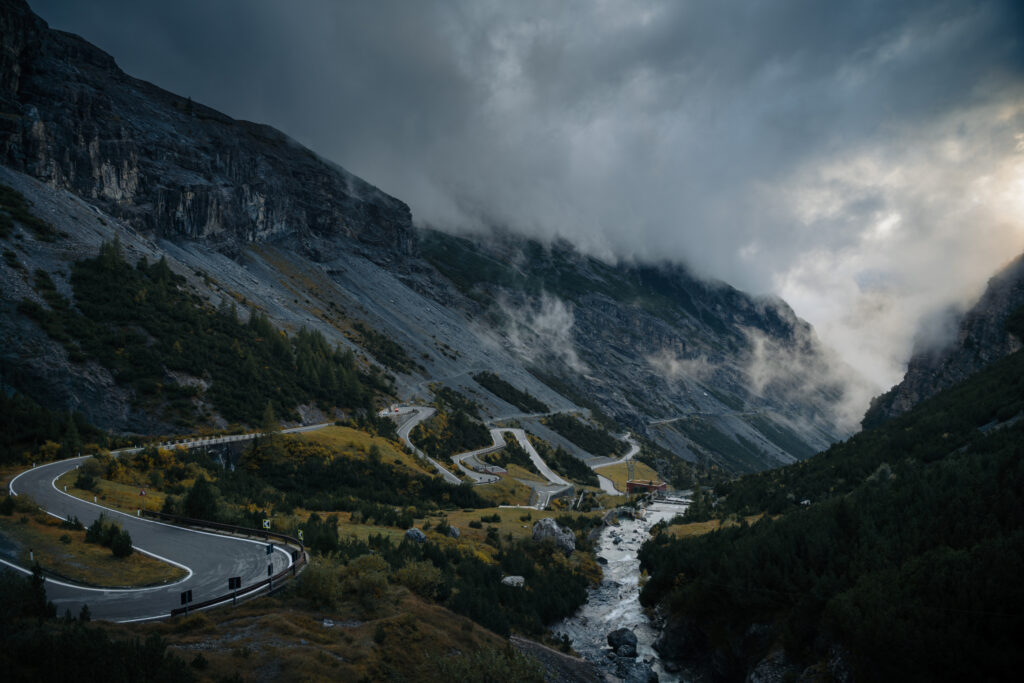


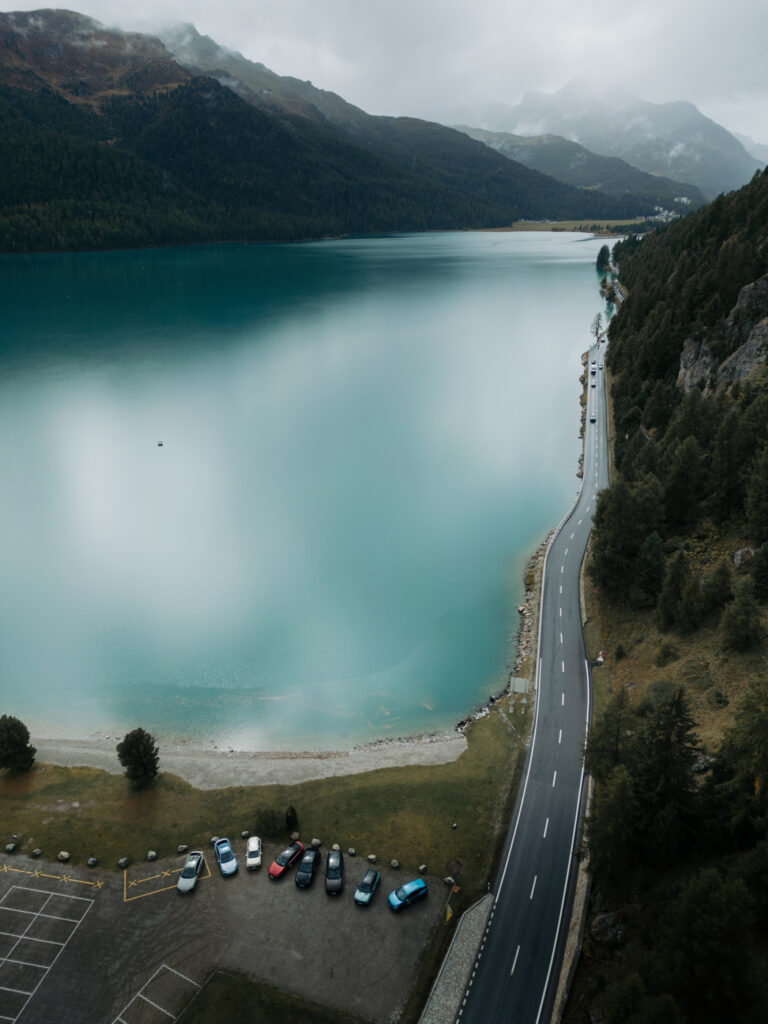
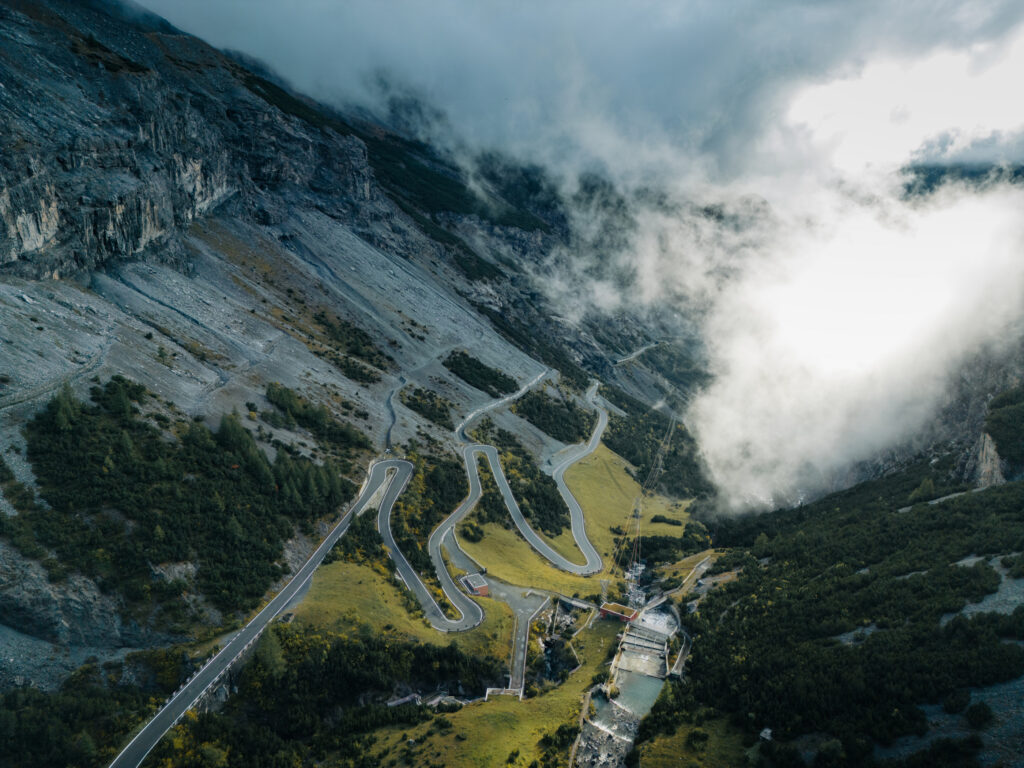
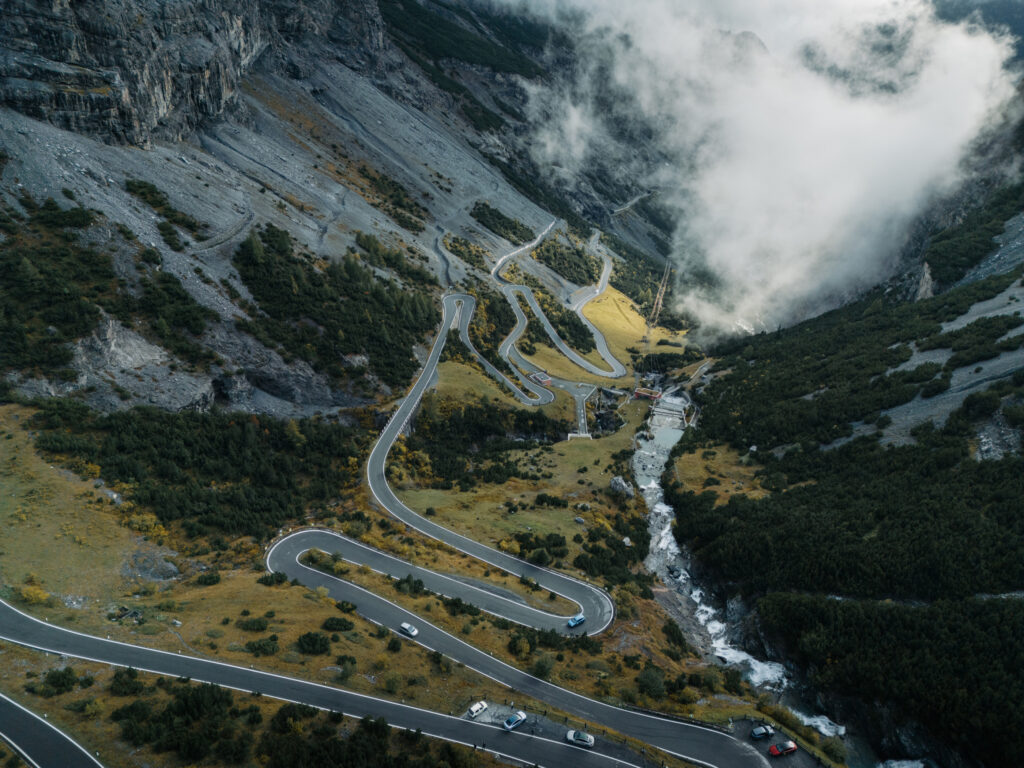
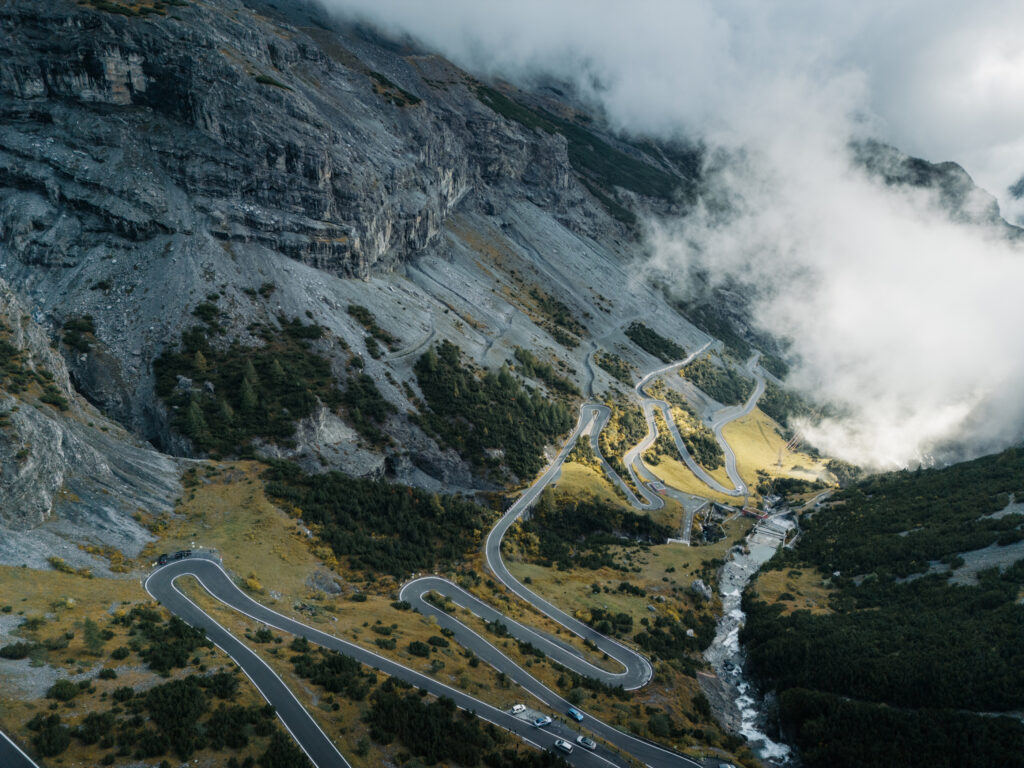


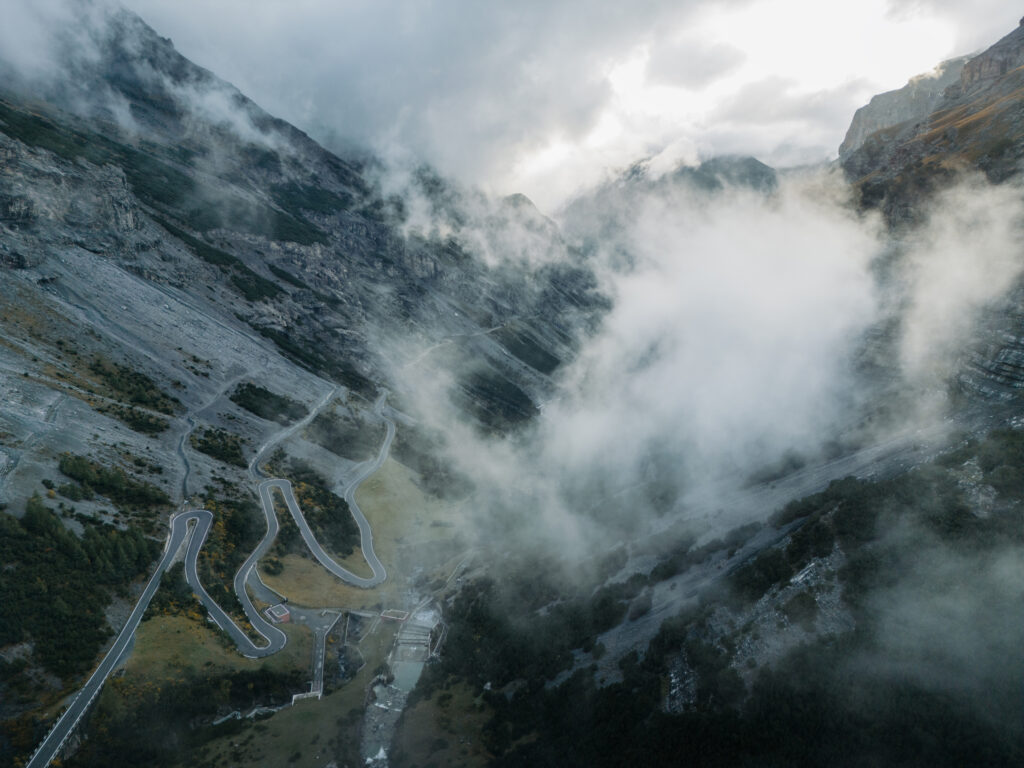

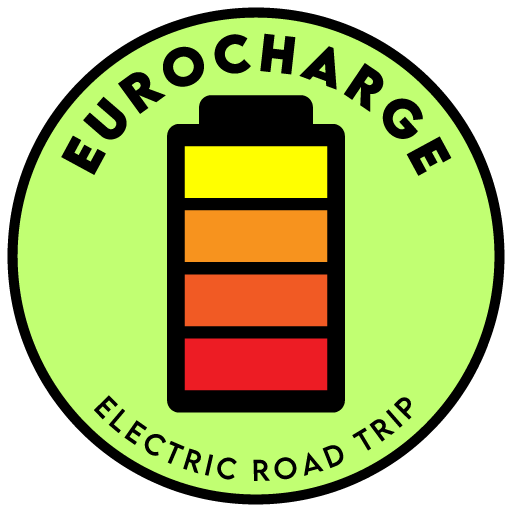
este un proiect susținut de SCHAEFFLER
Încărcat de
OMV eMotion
Green Partner
BT Leasing
Pus pe șosea de
Michelin
Tehnologizat de
Server Config

